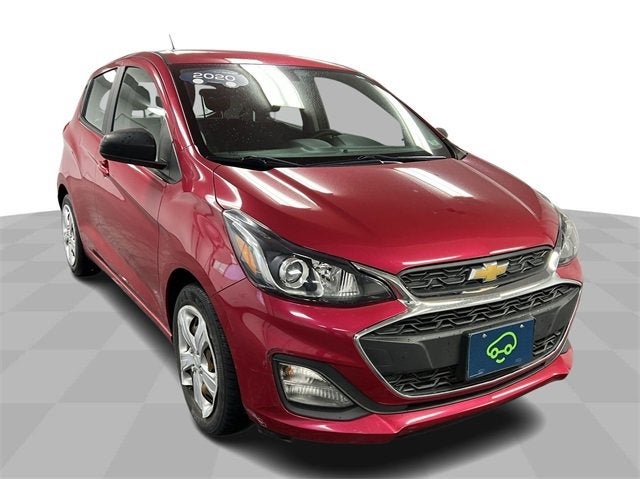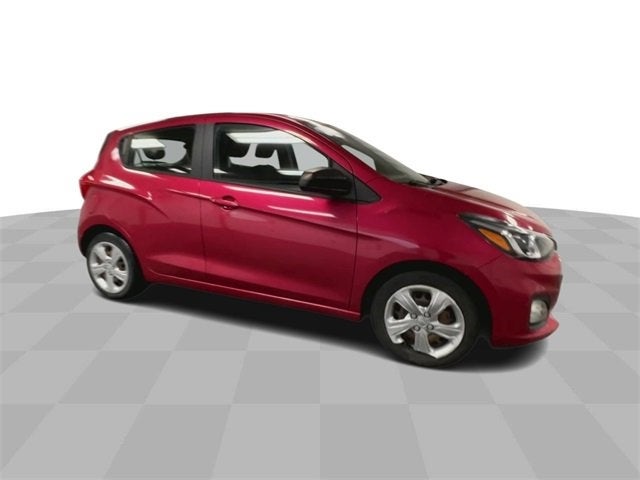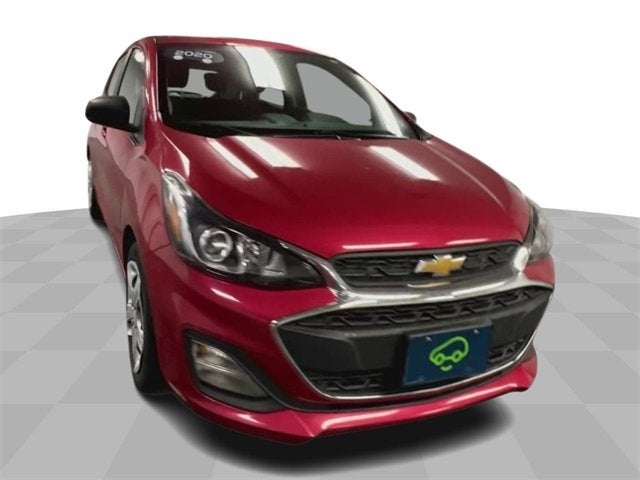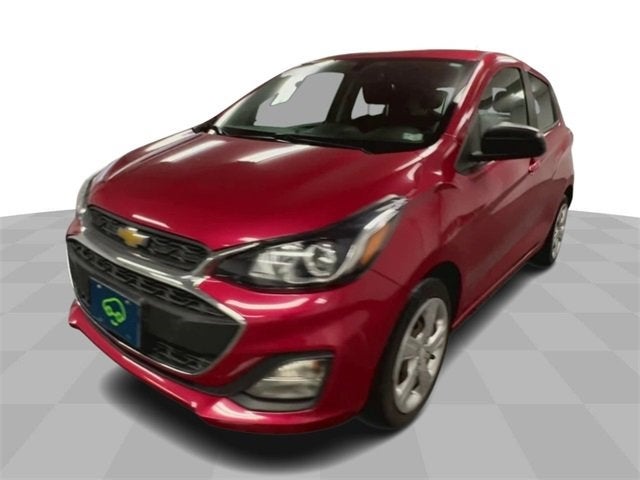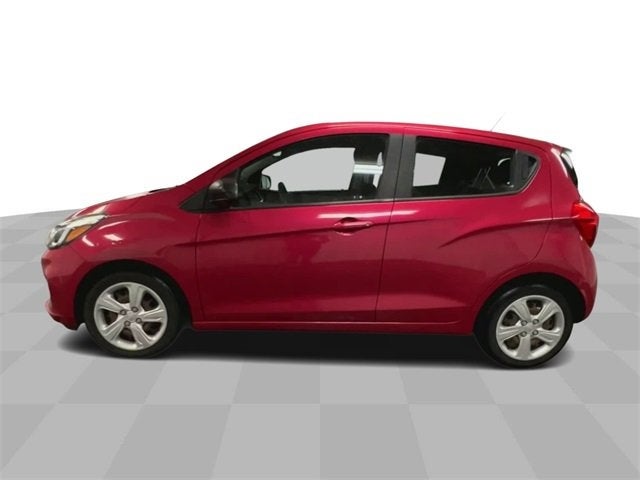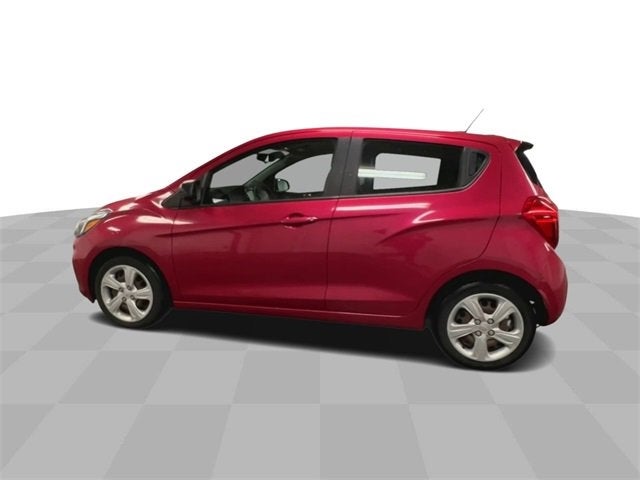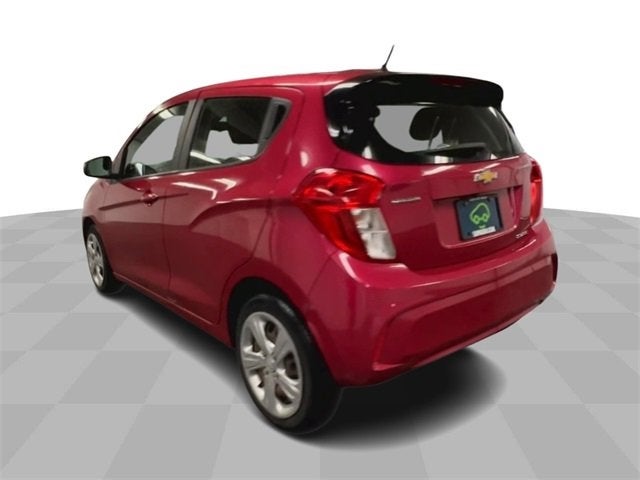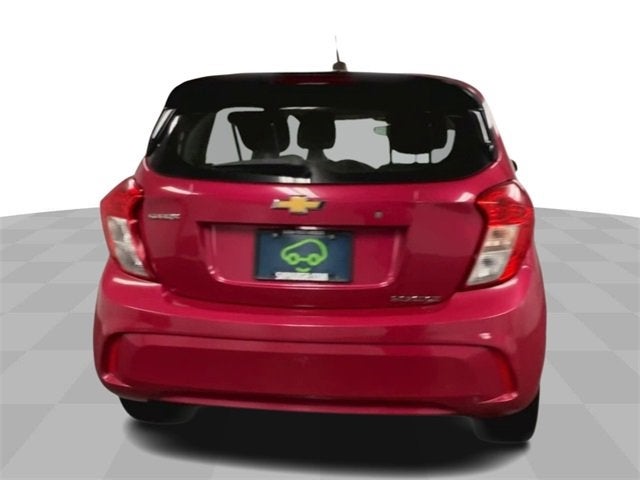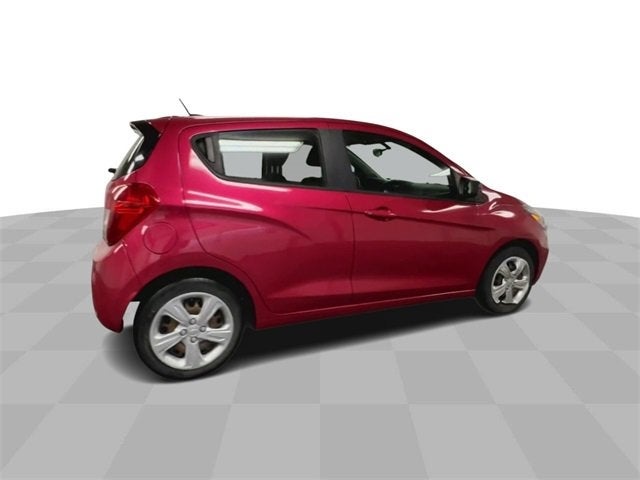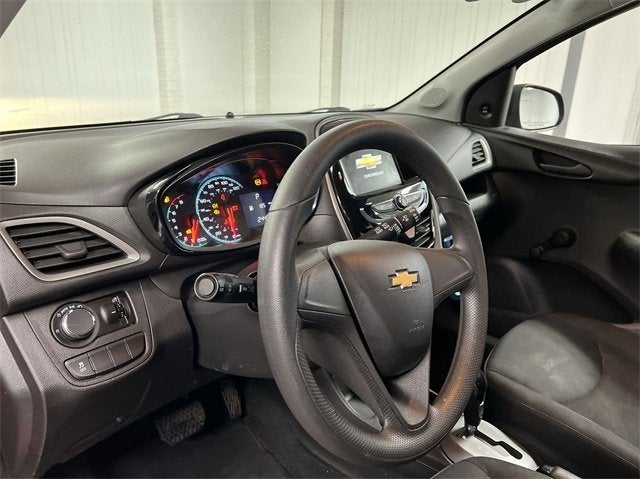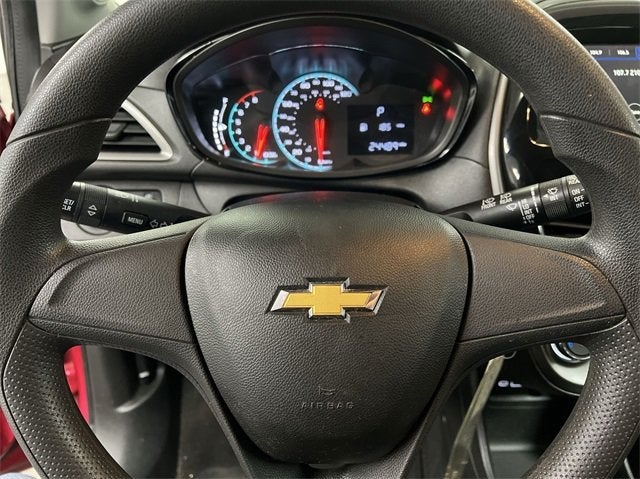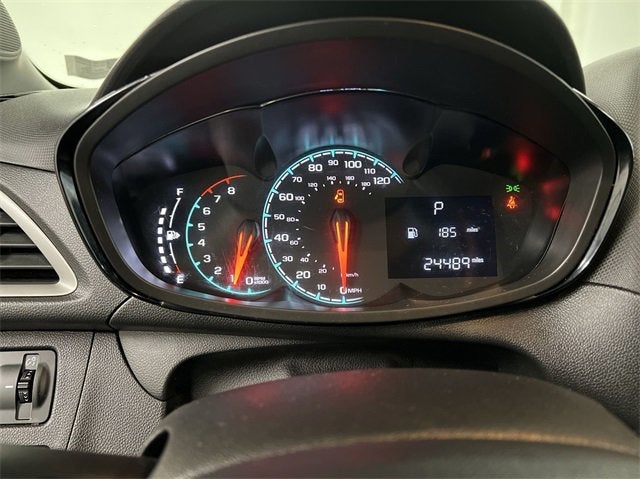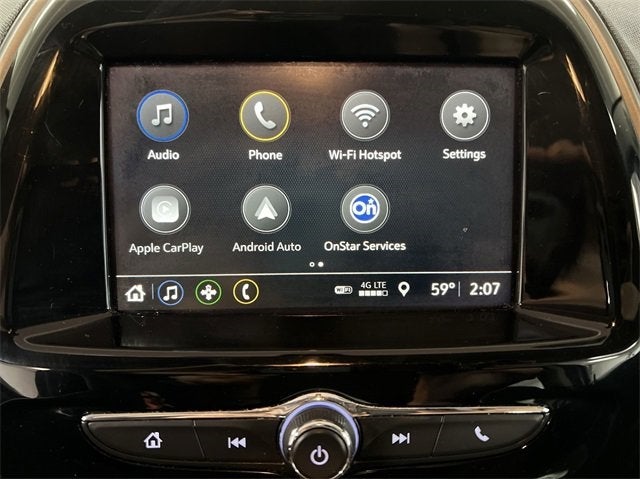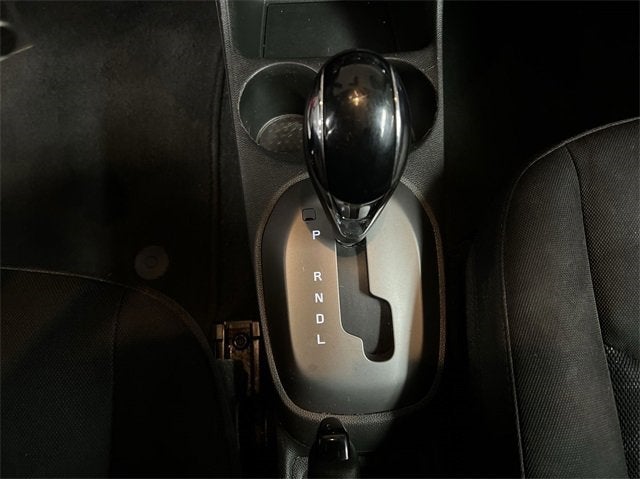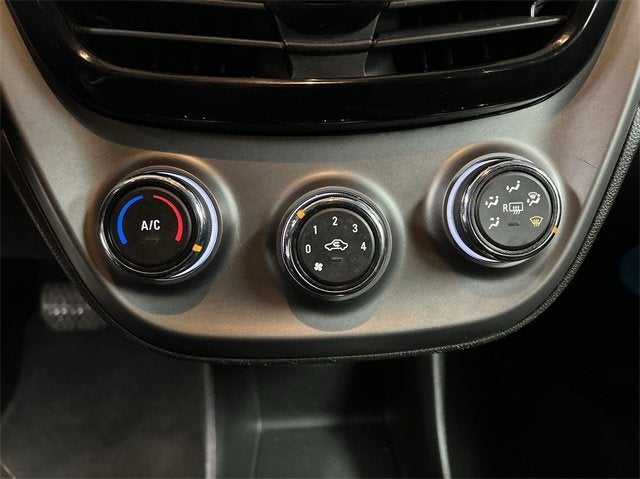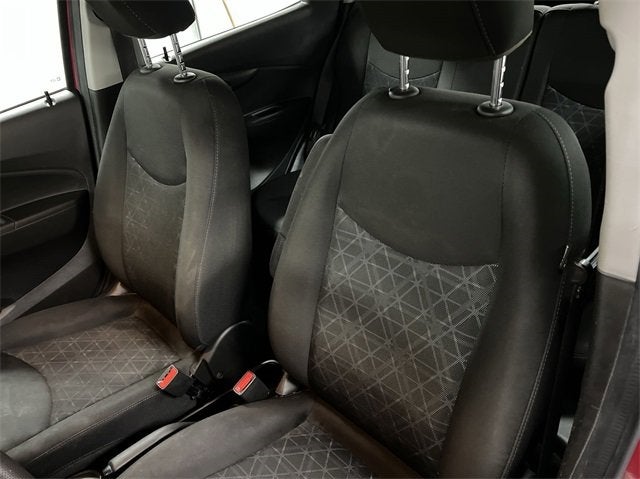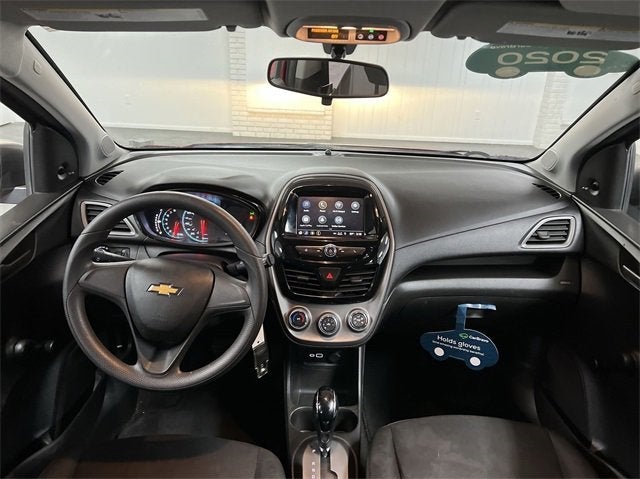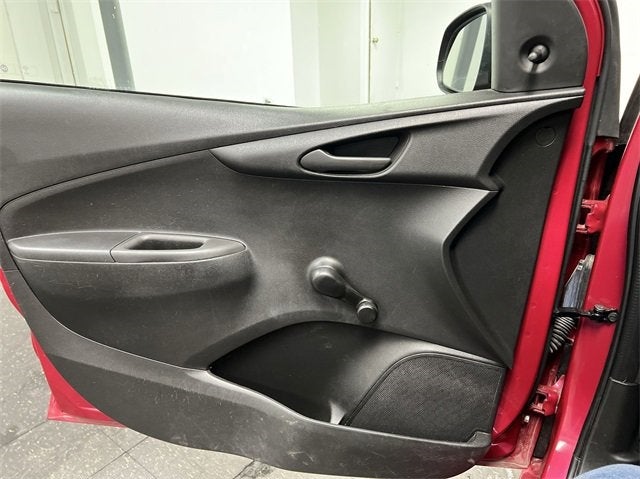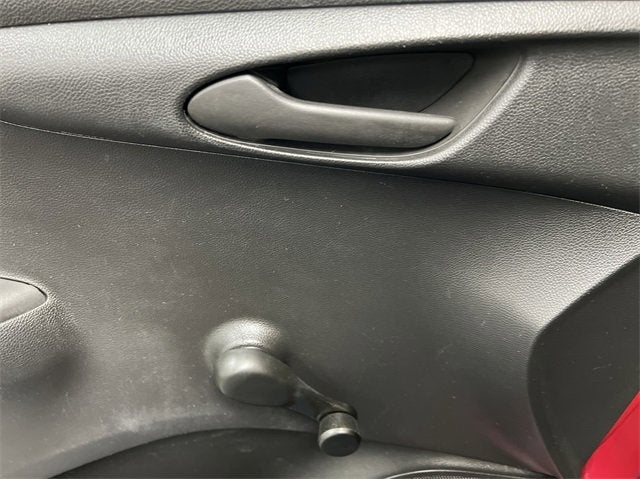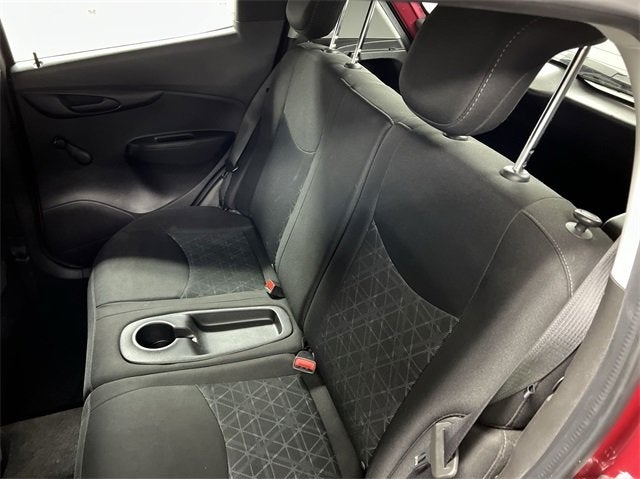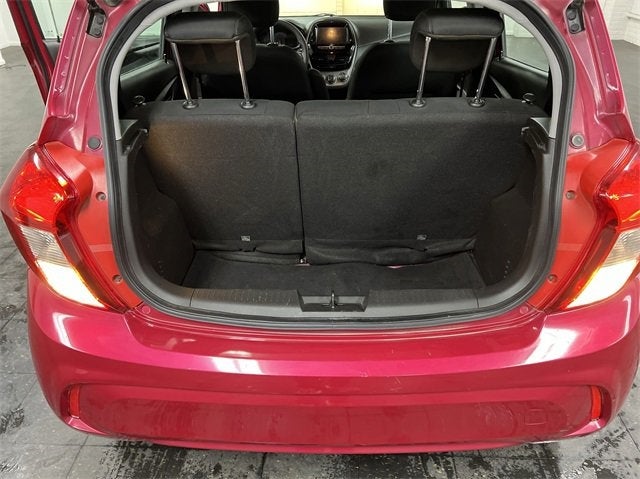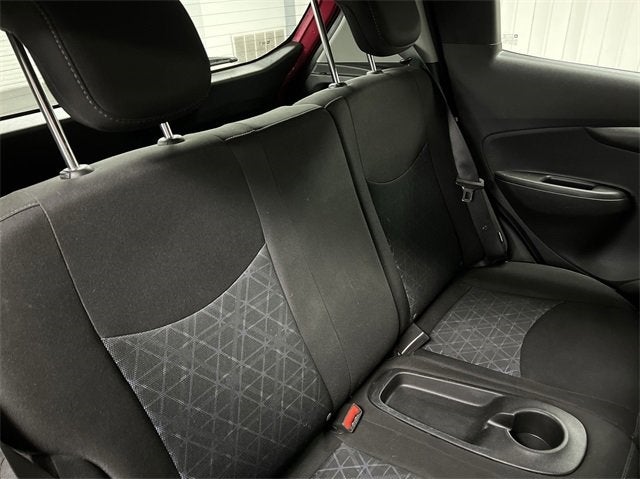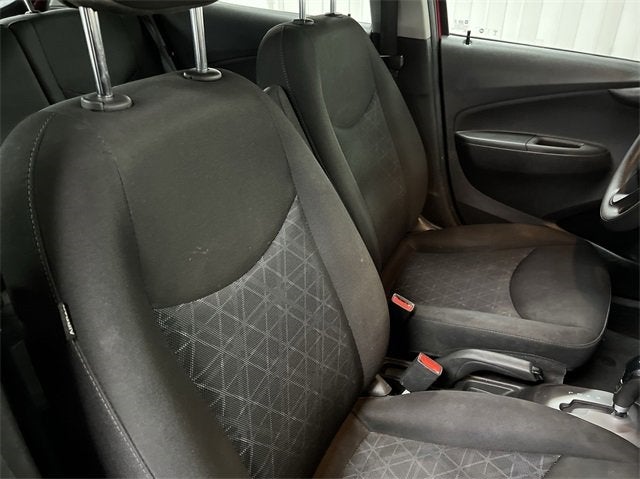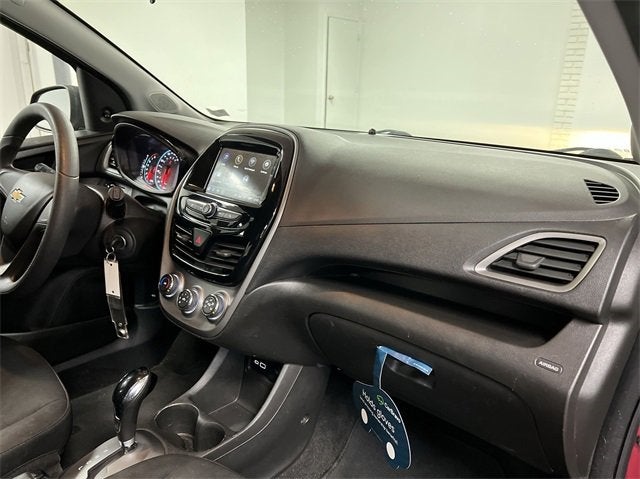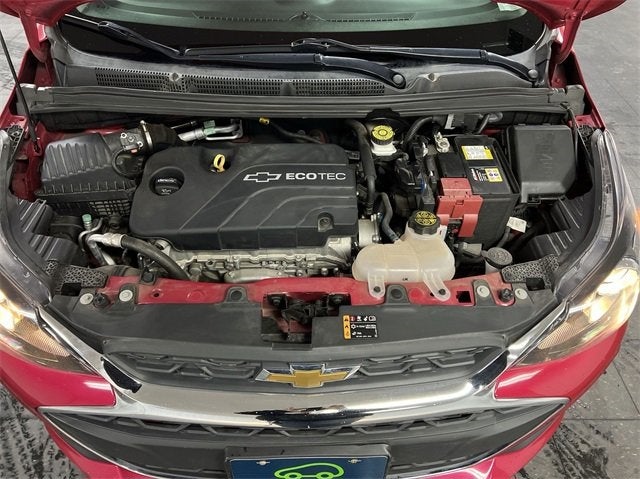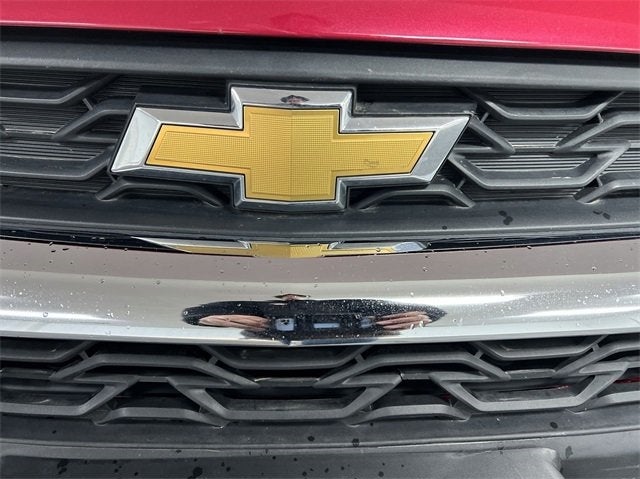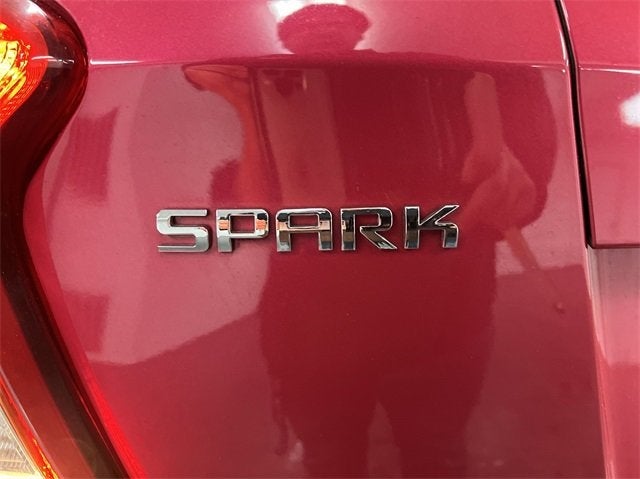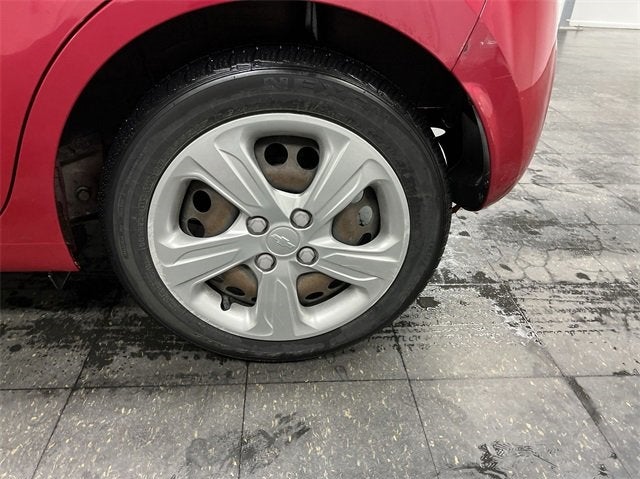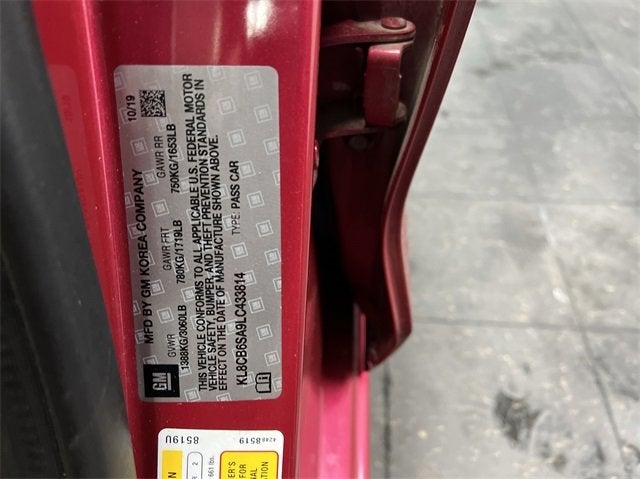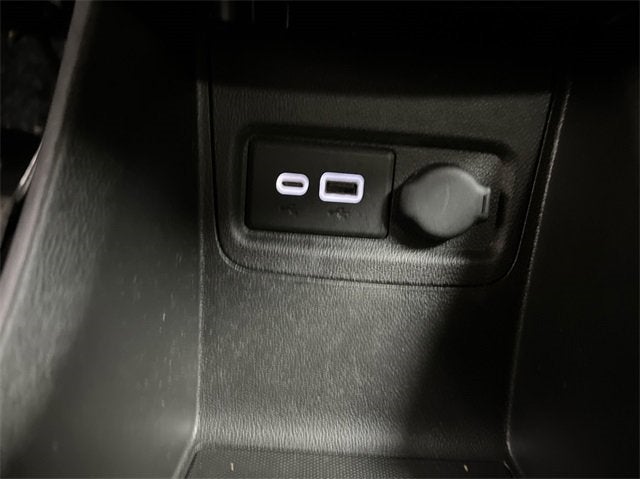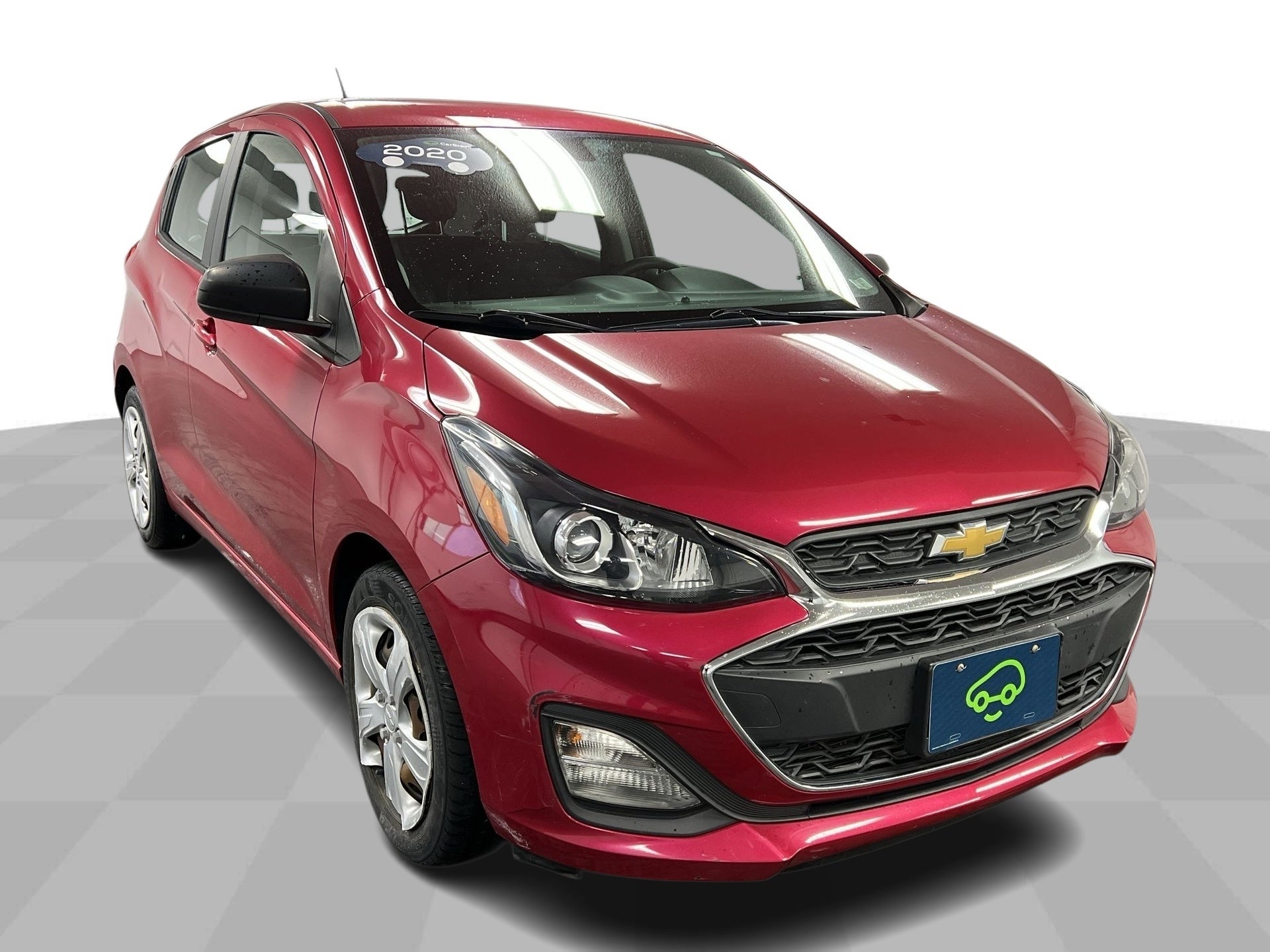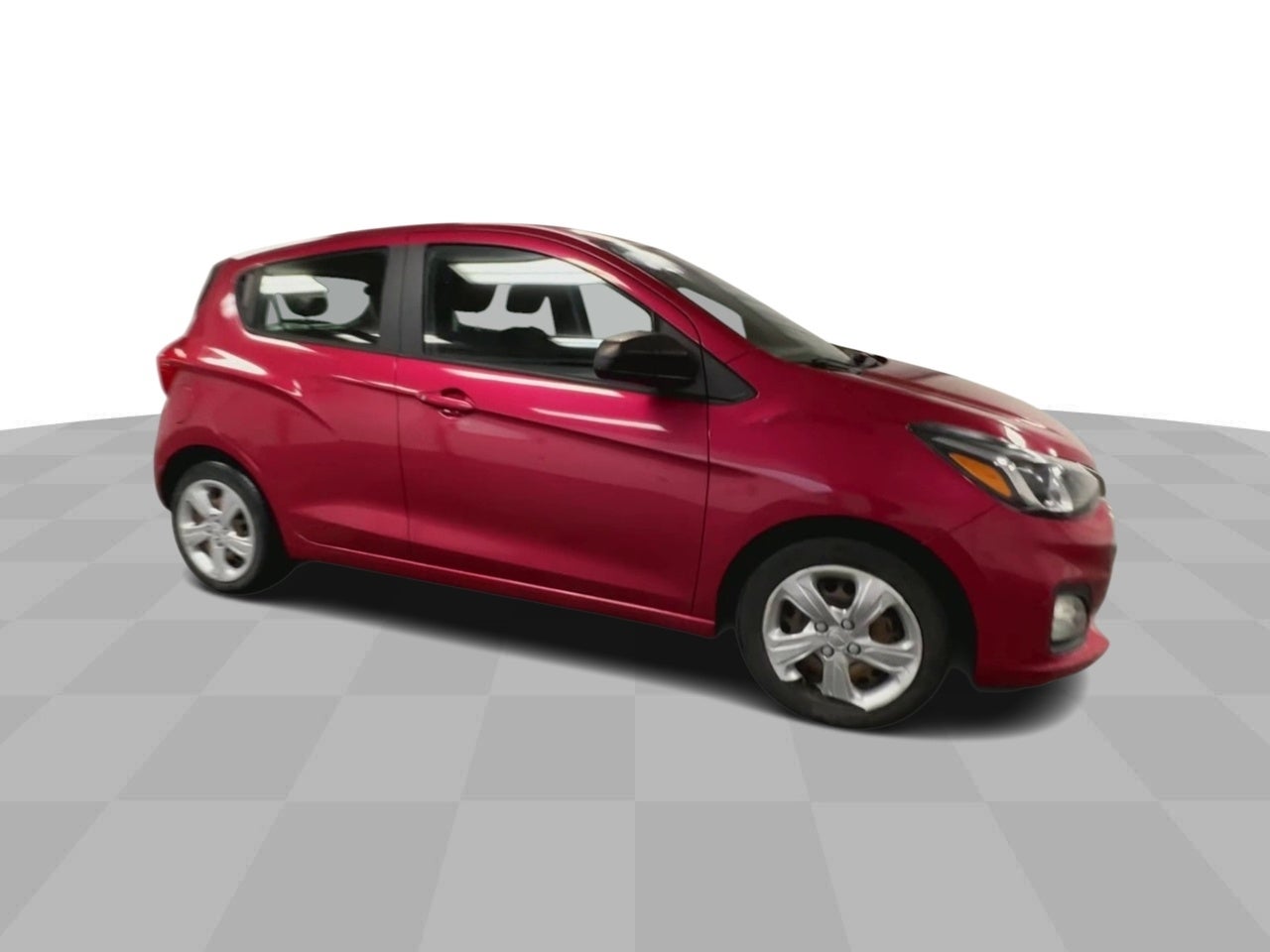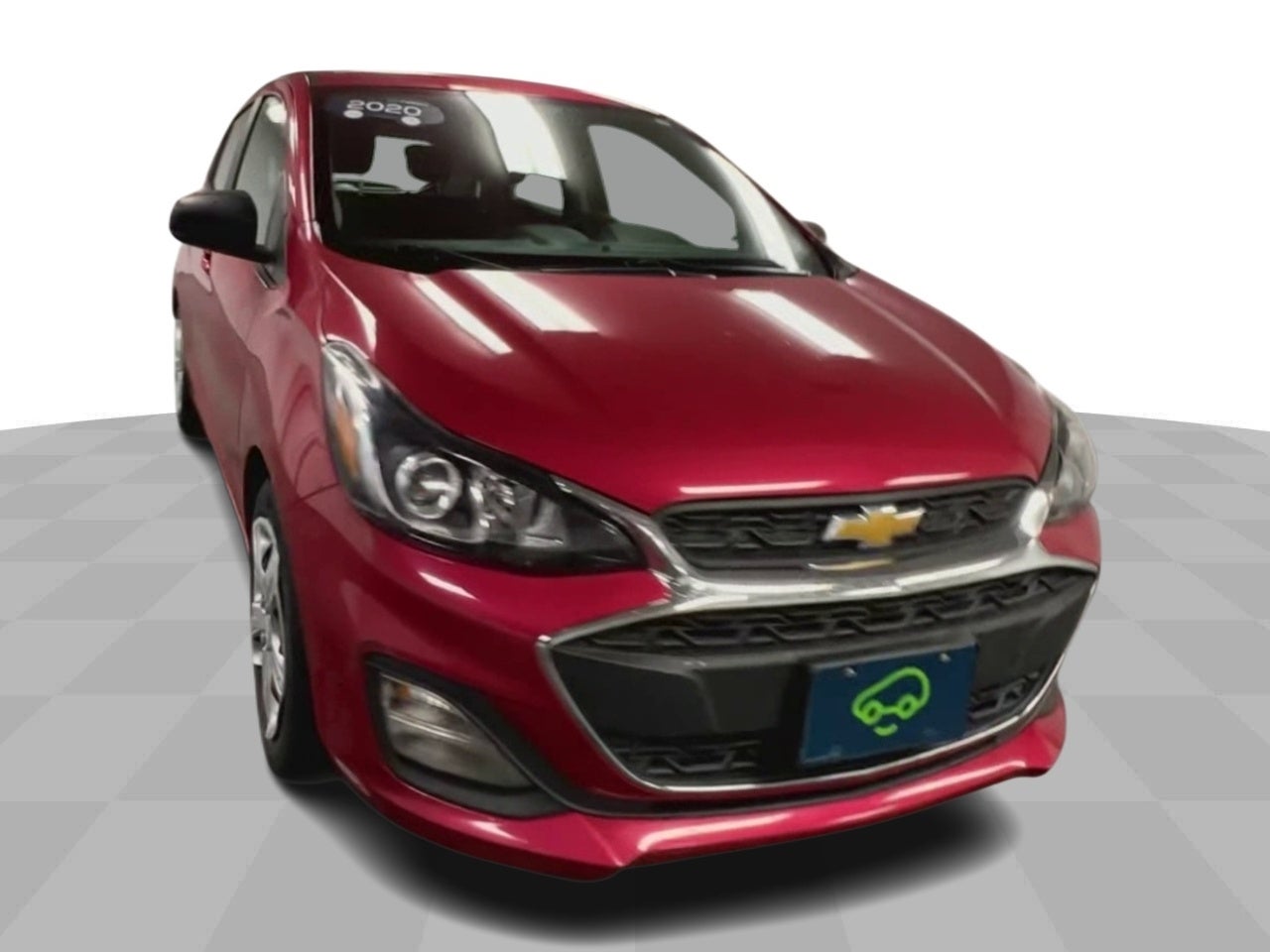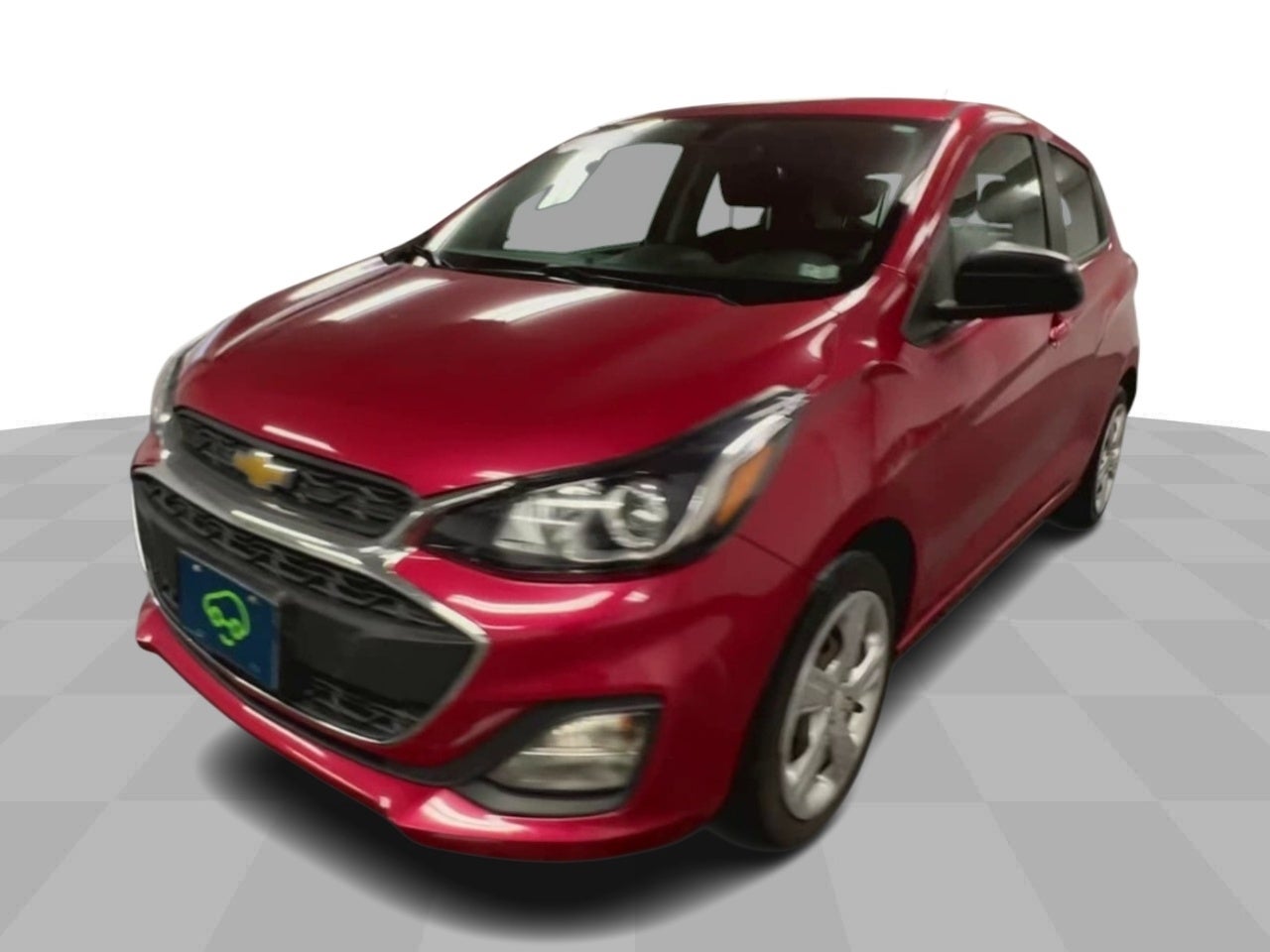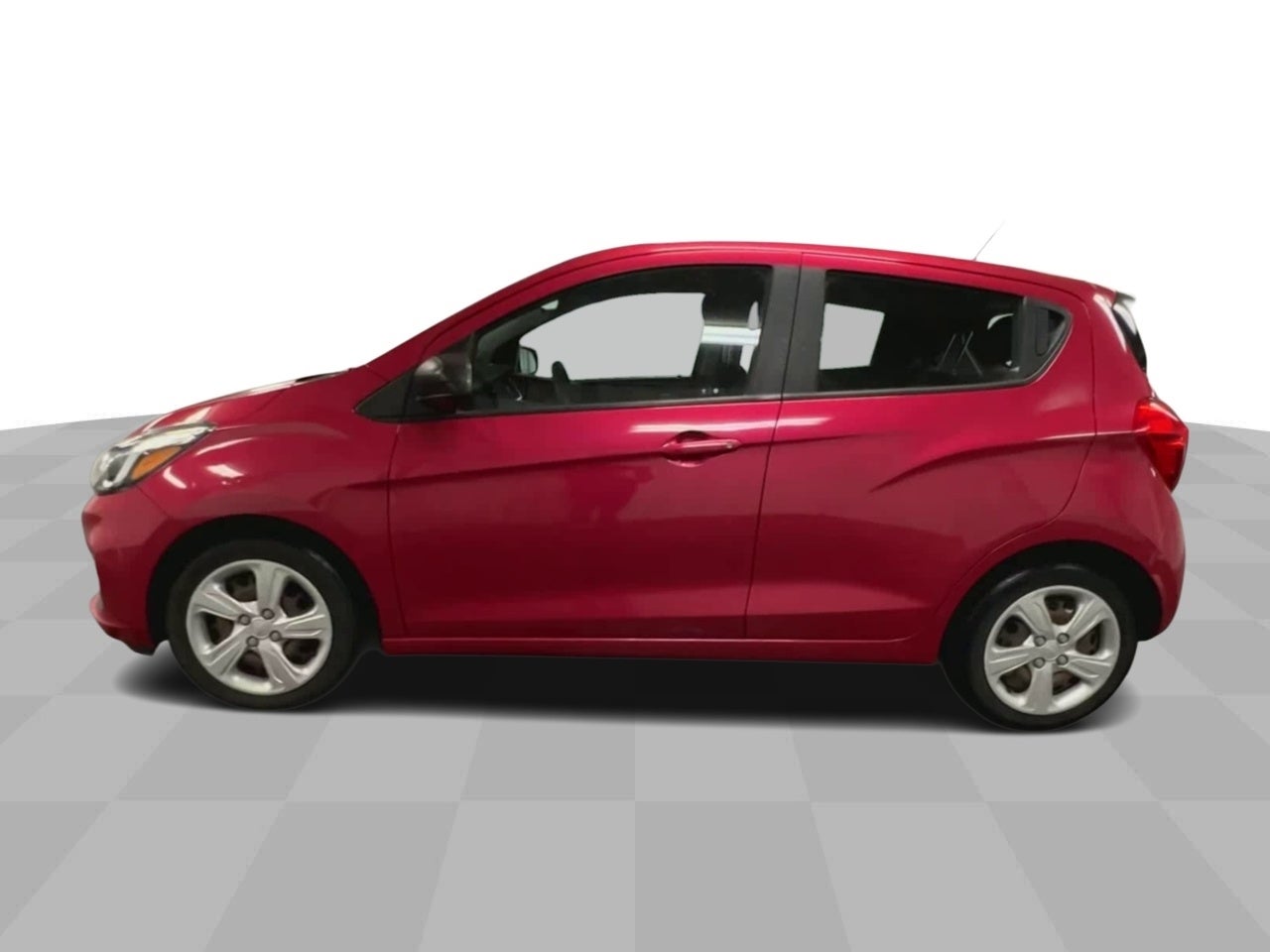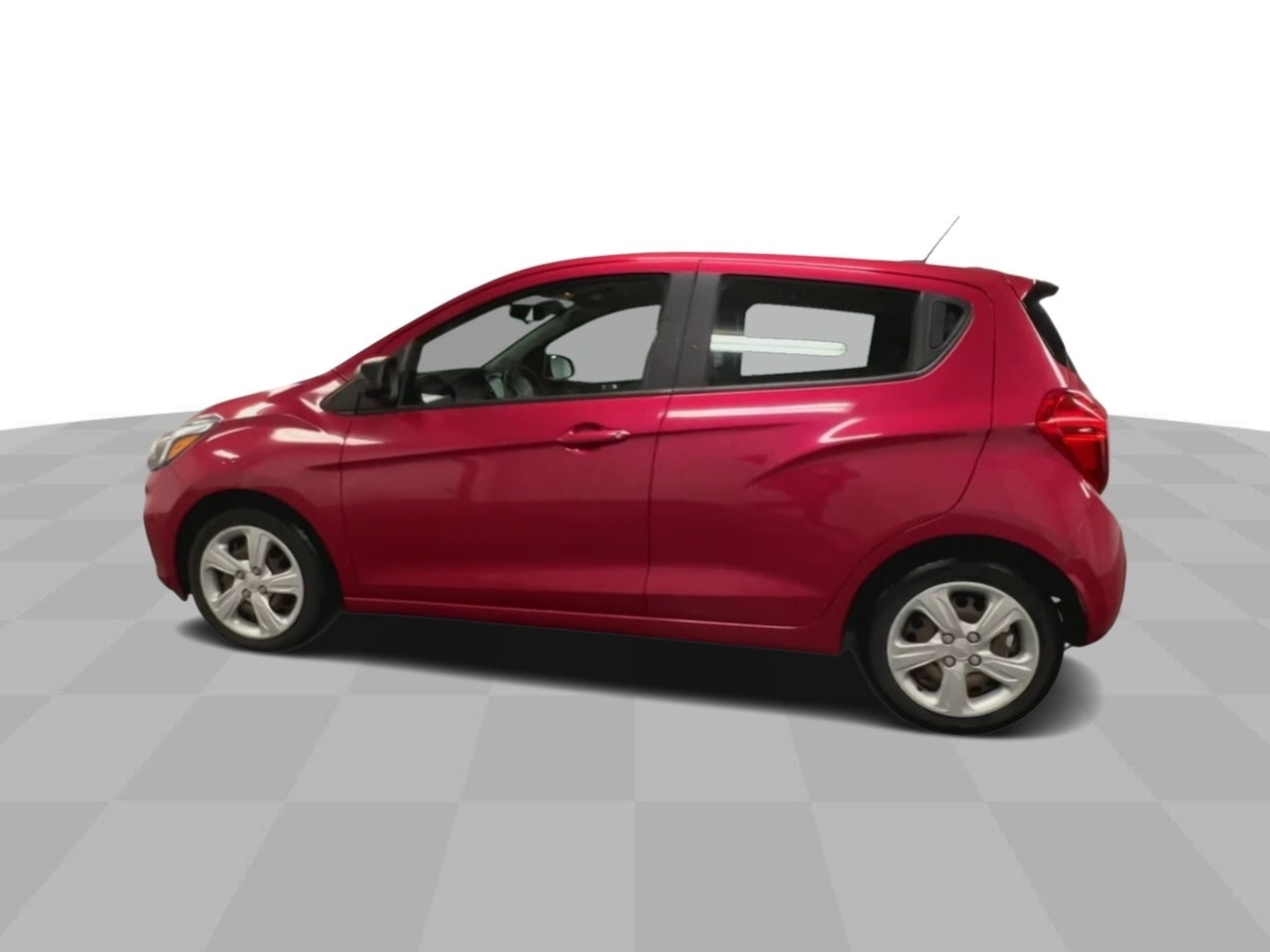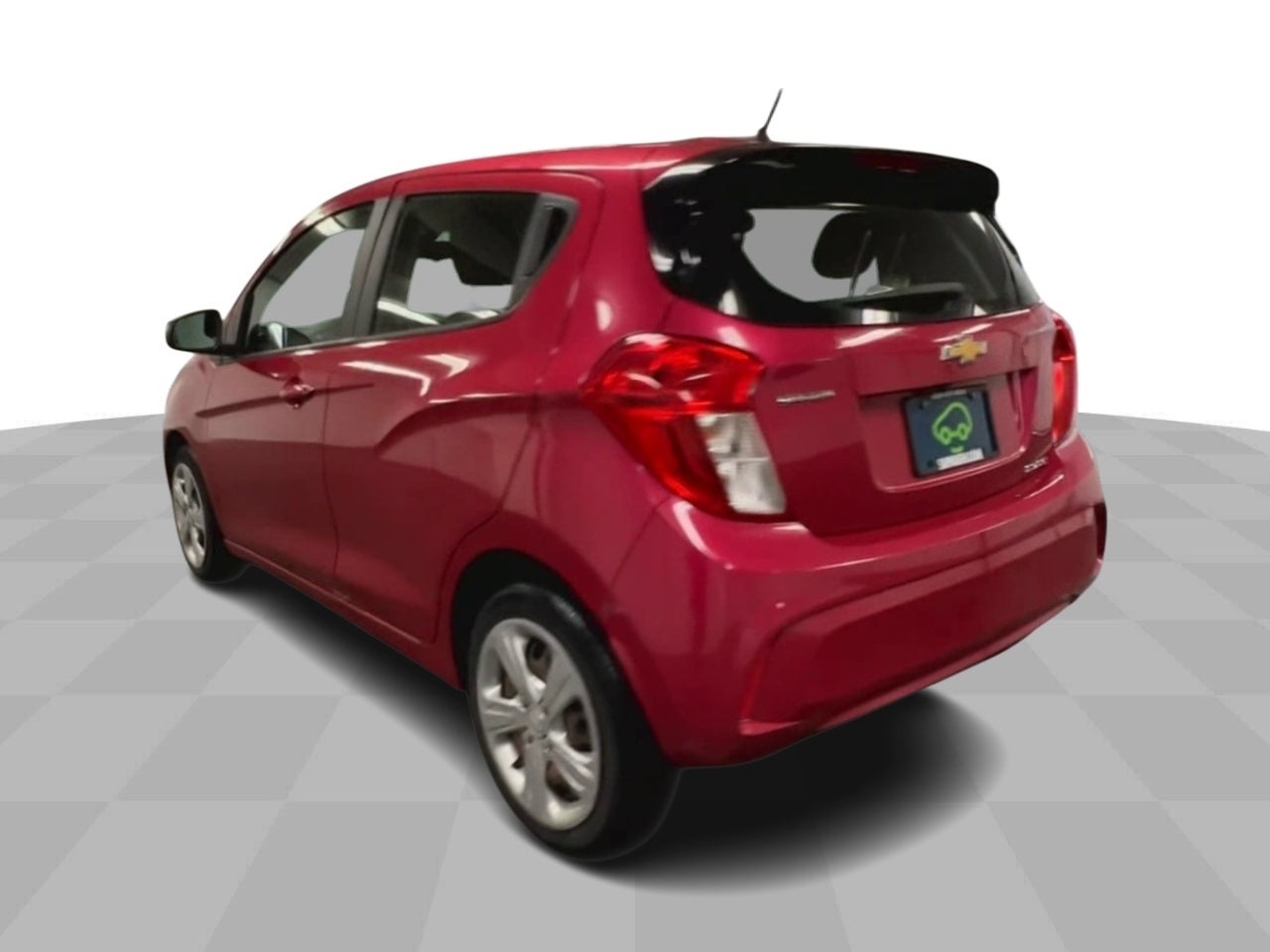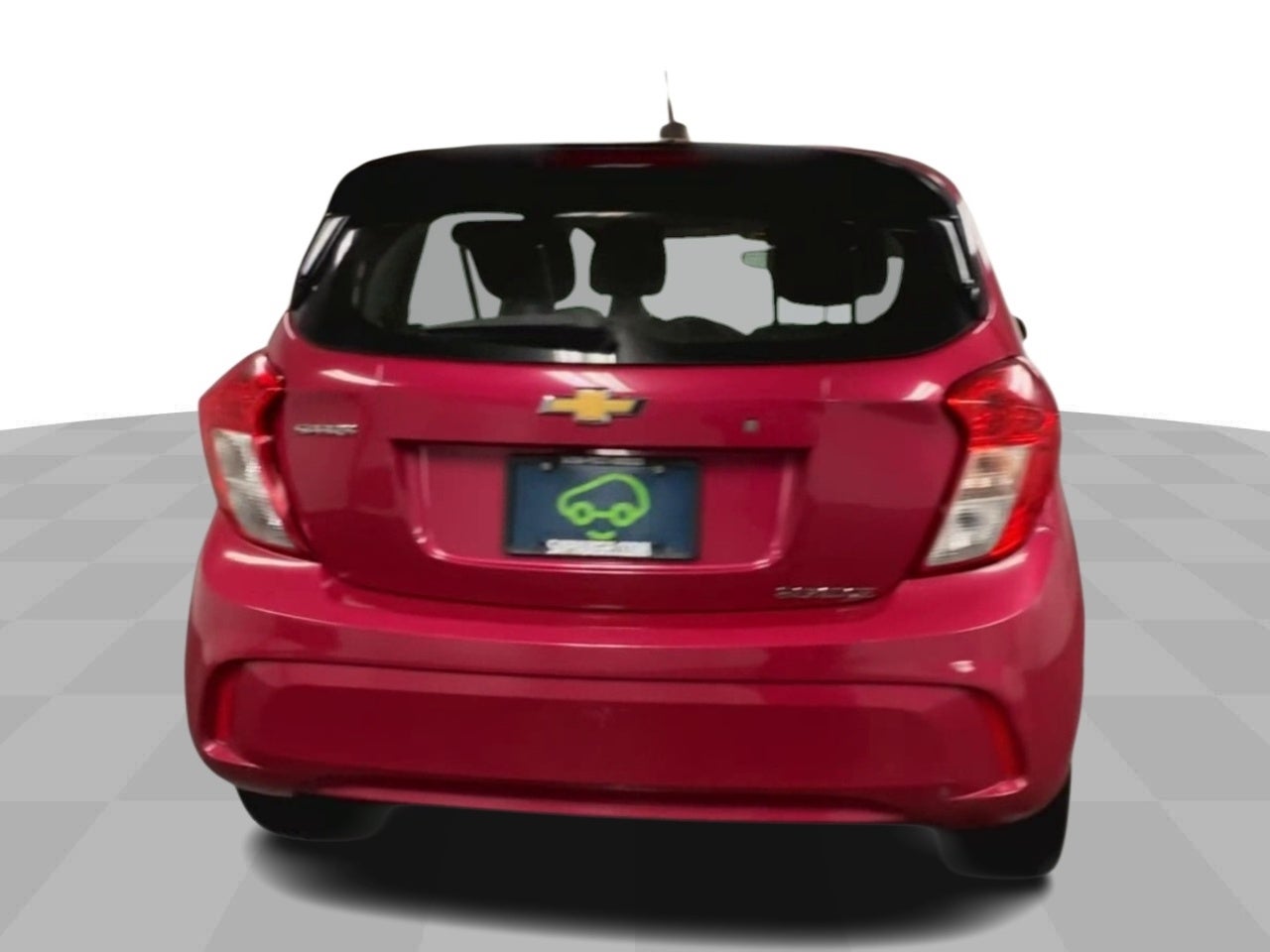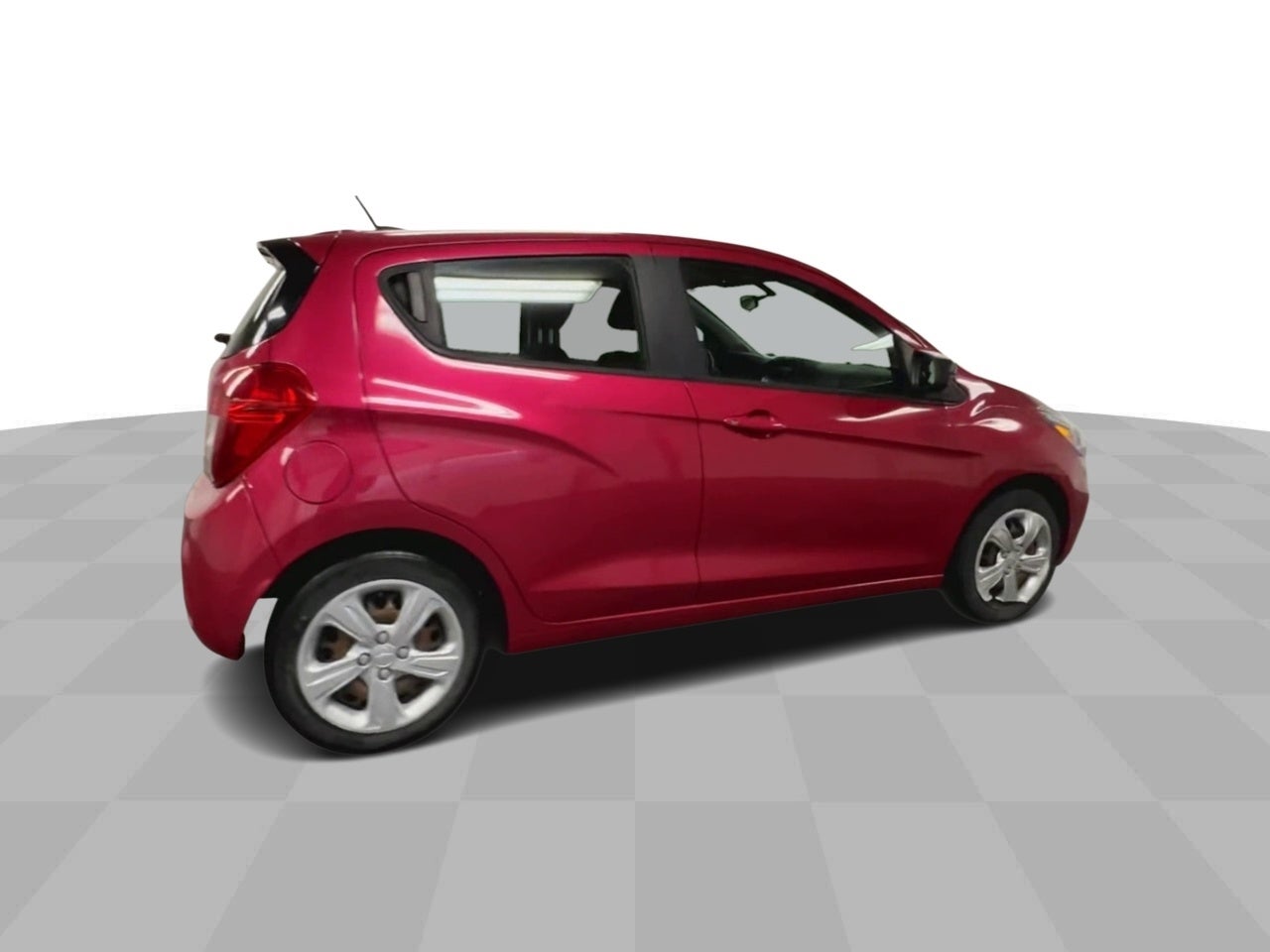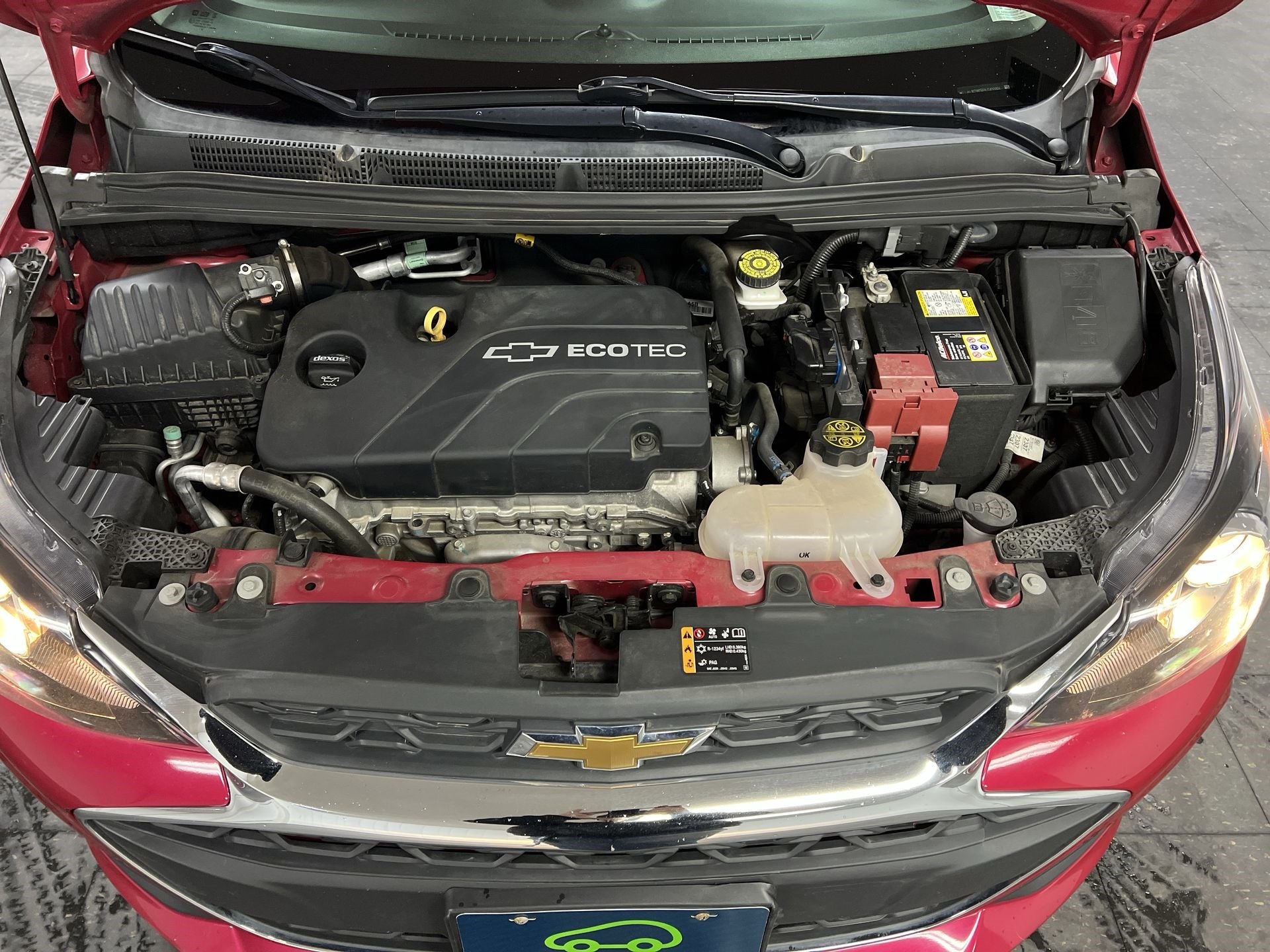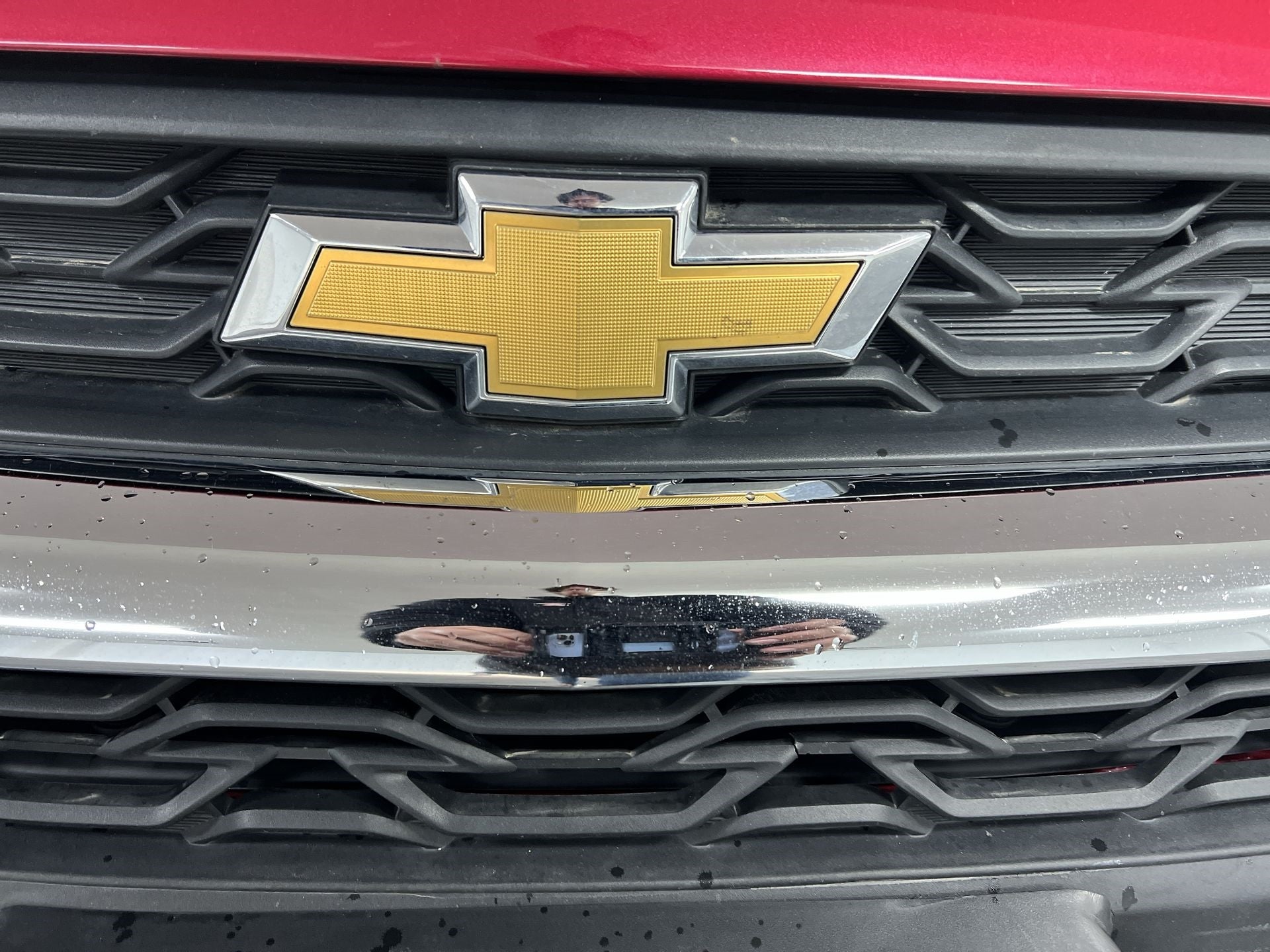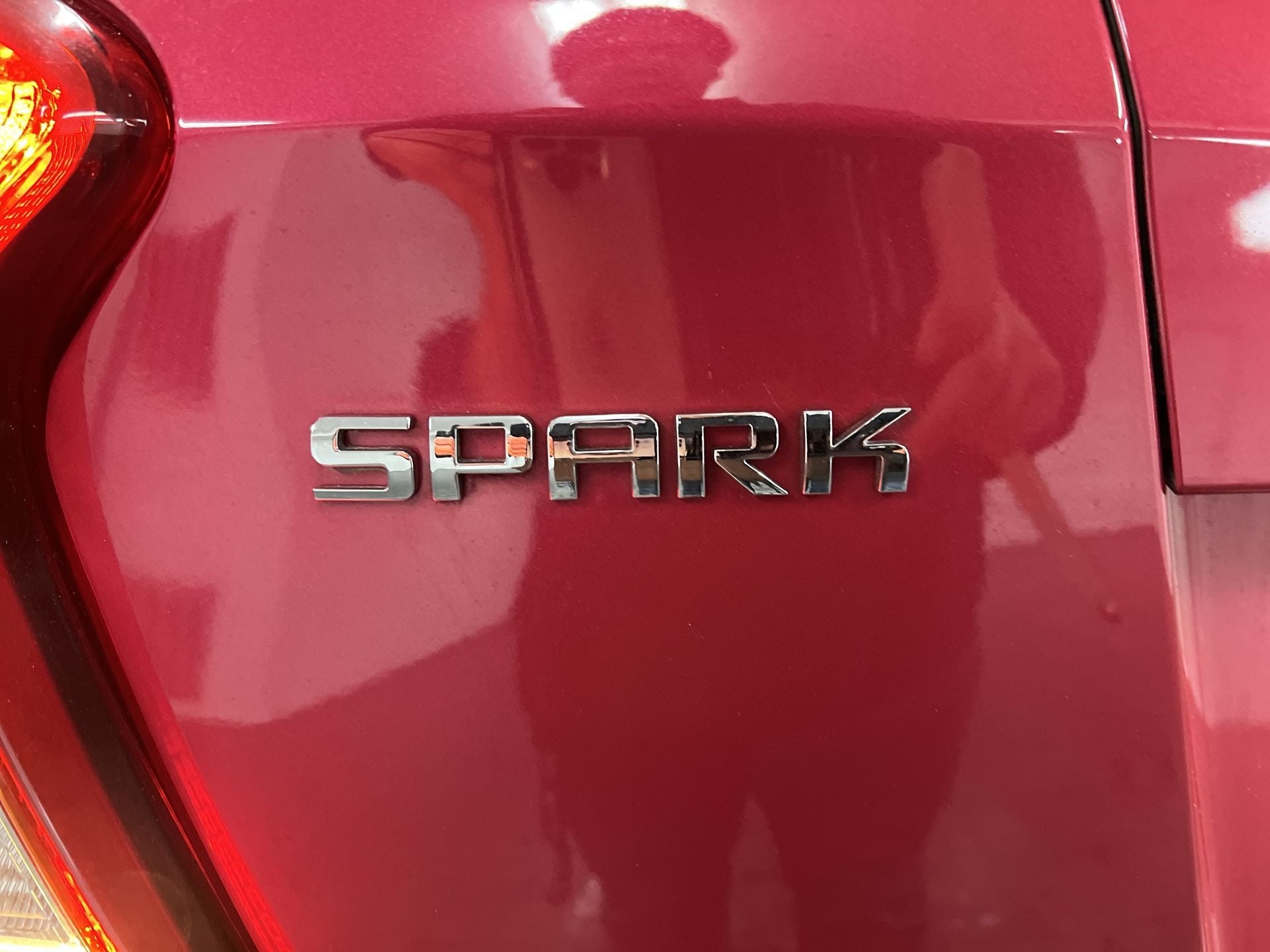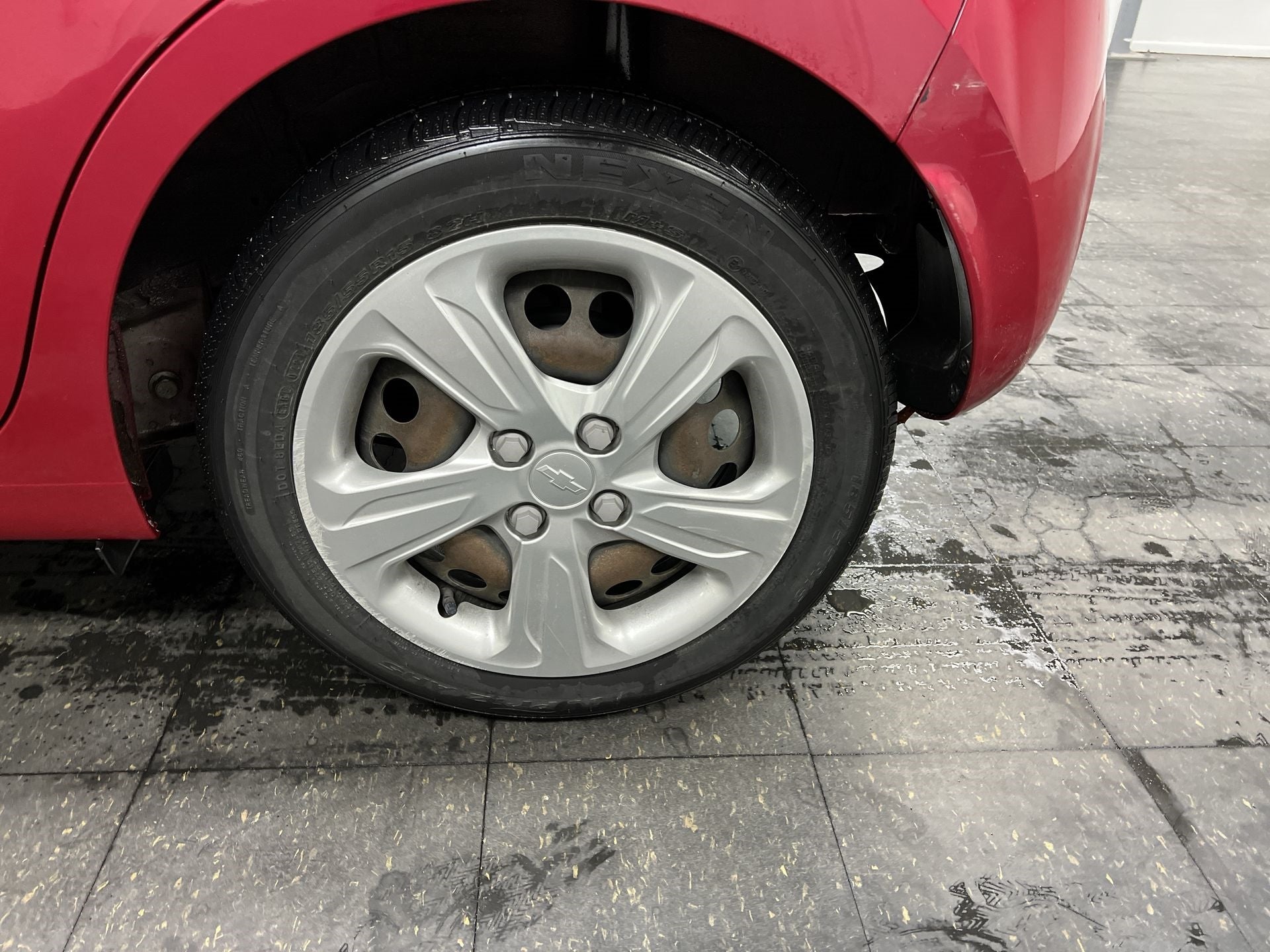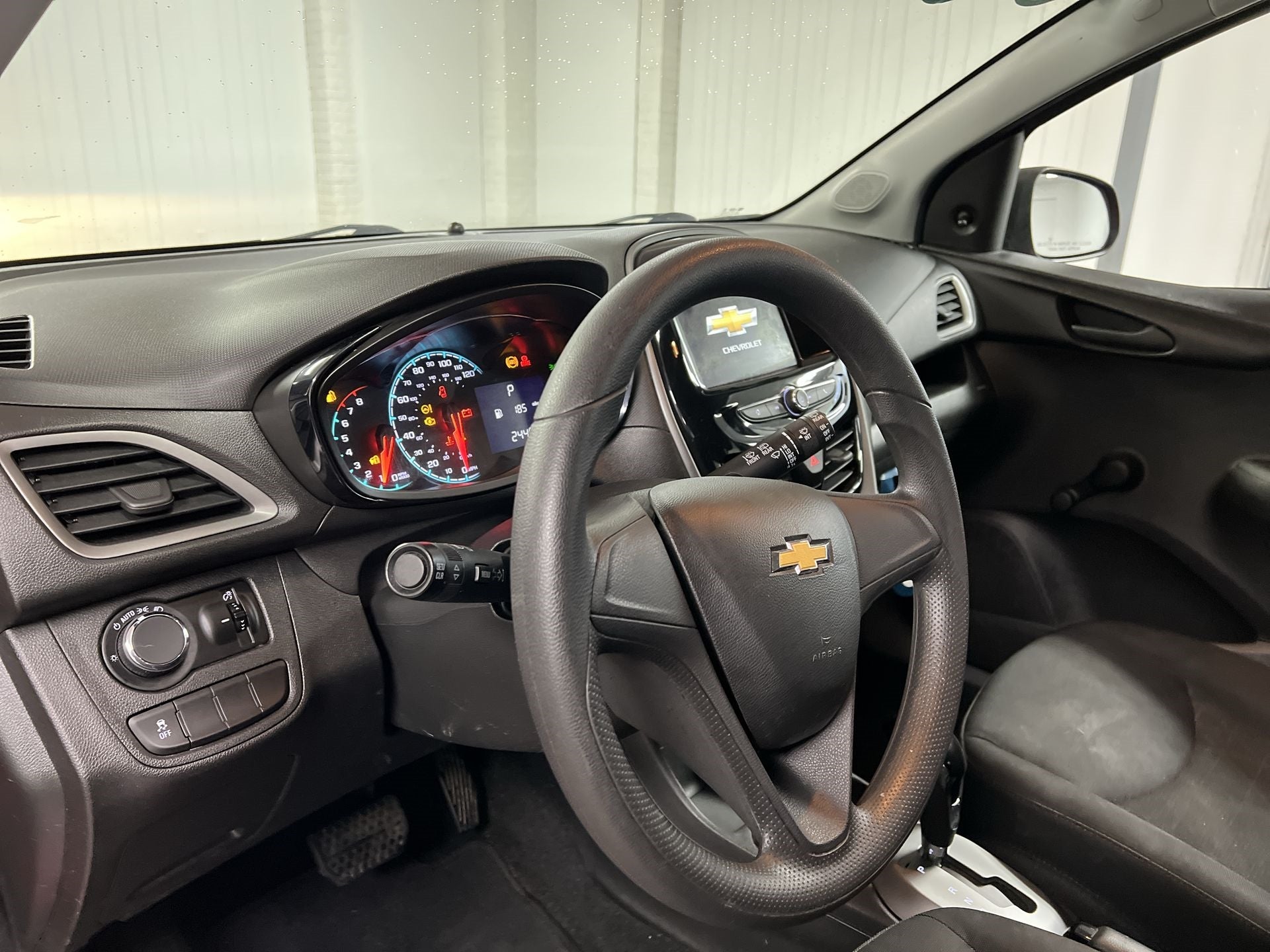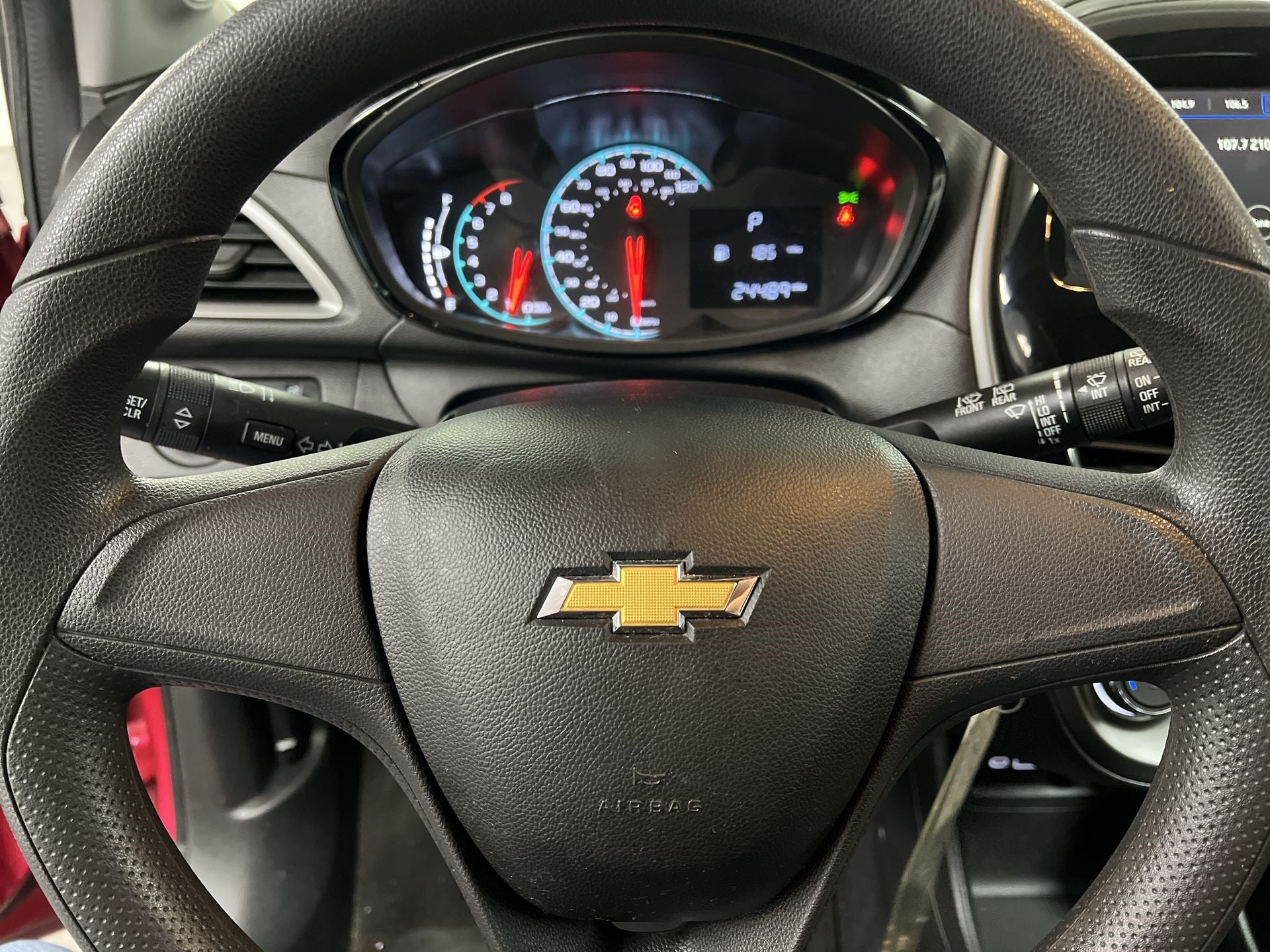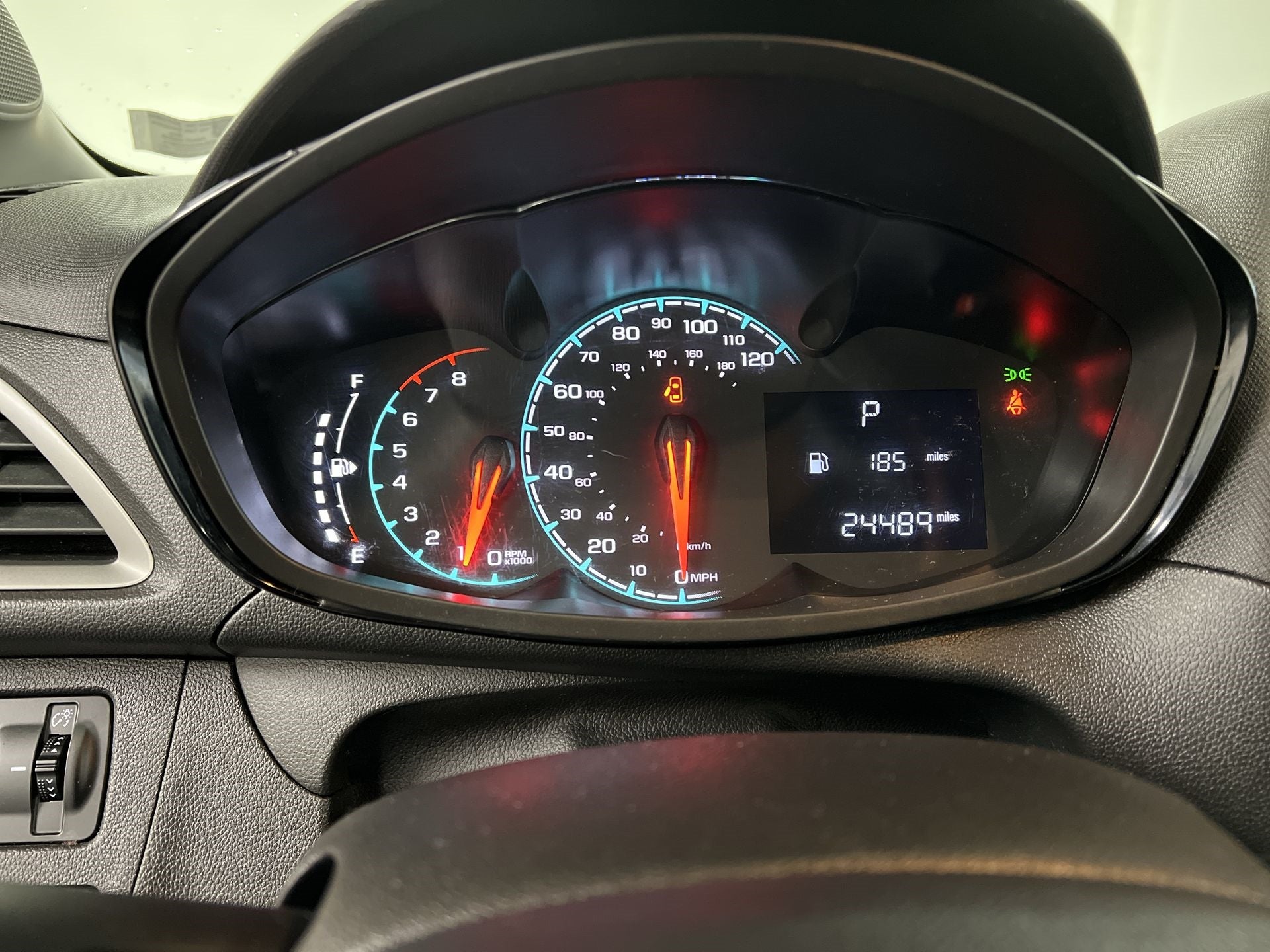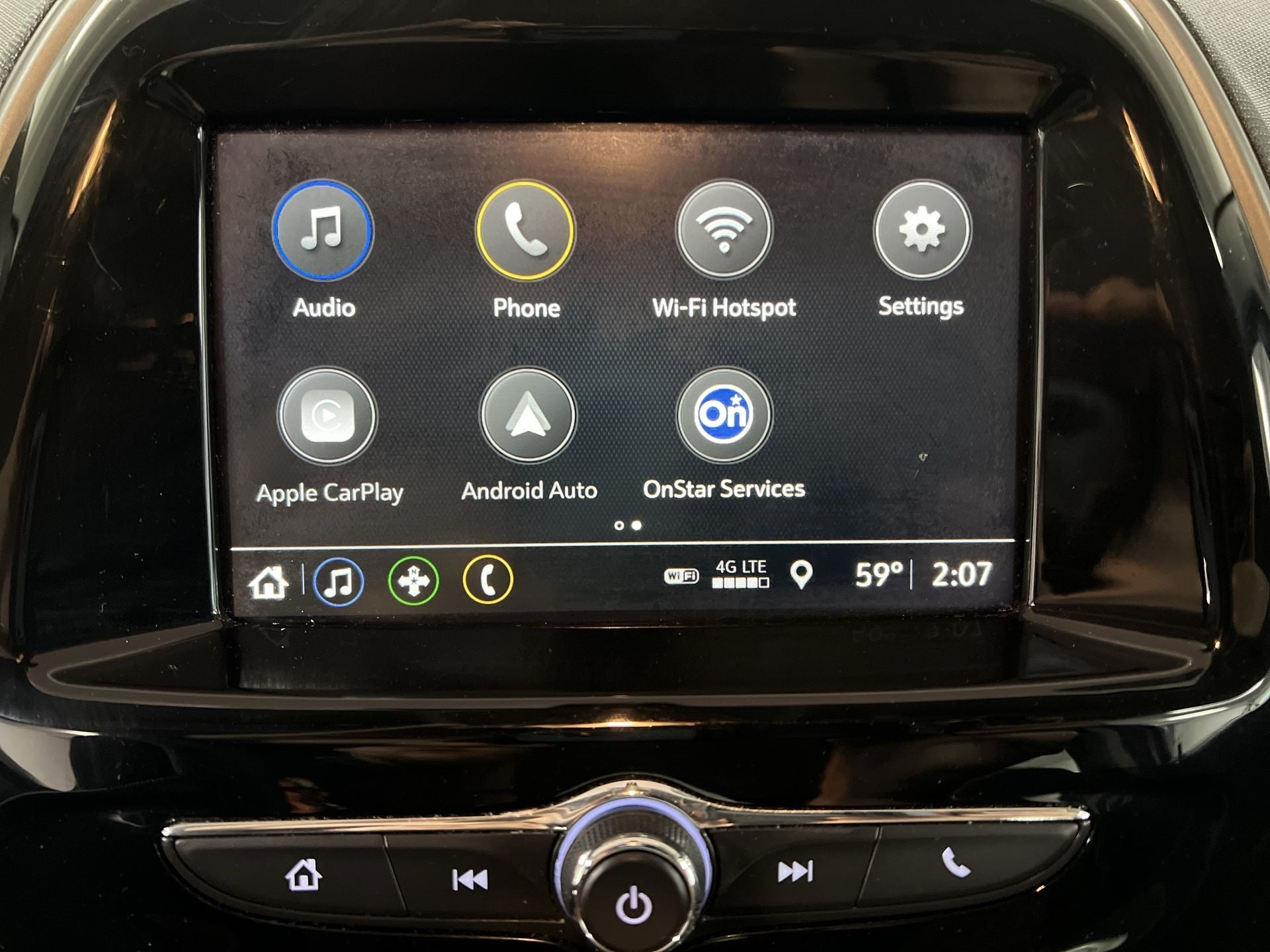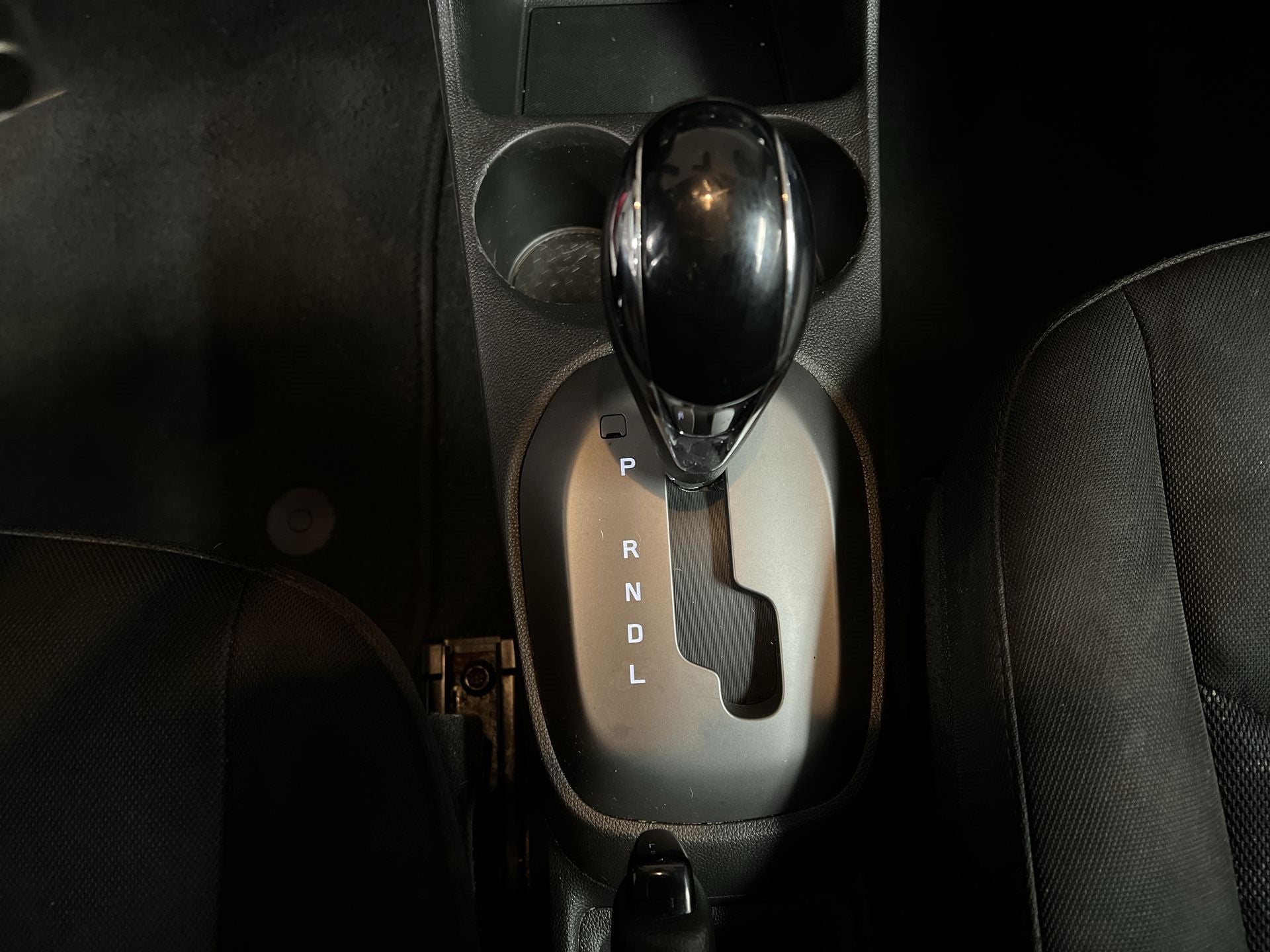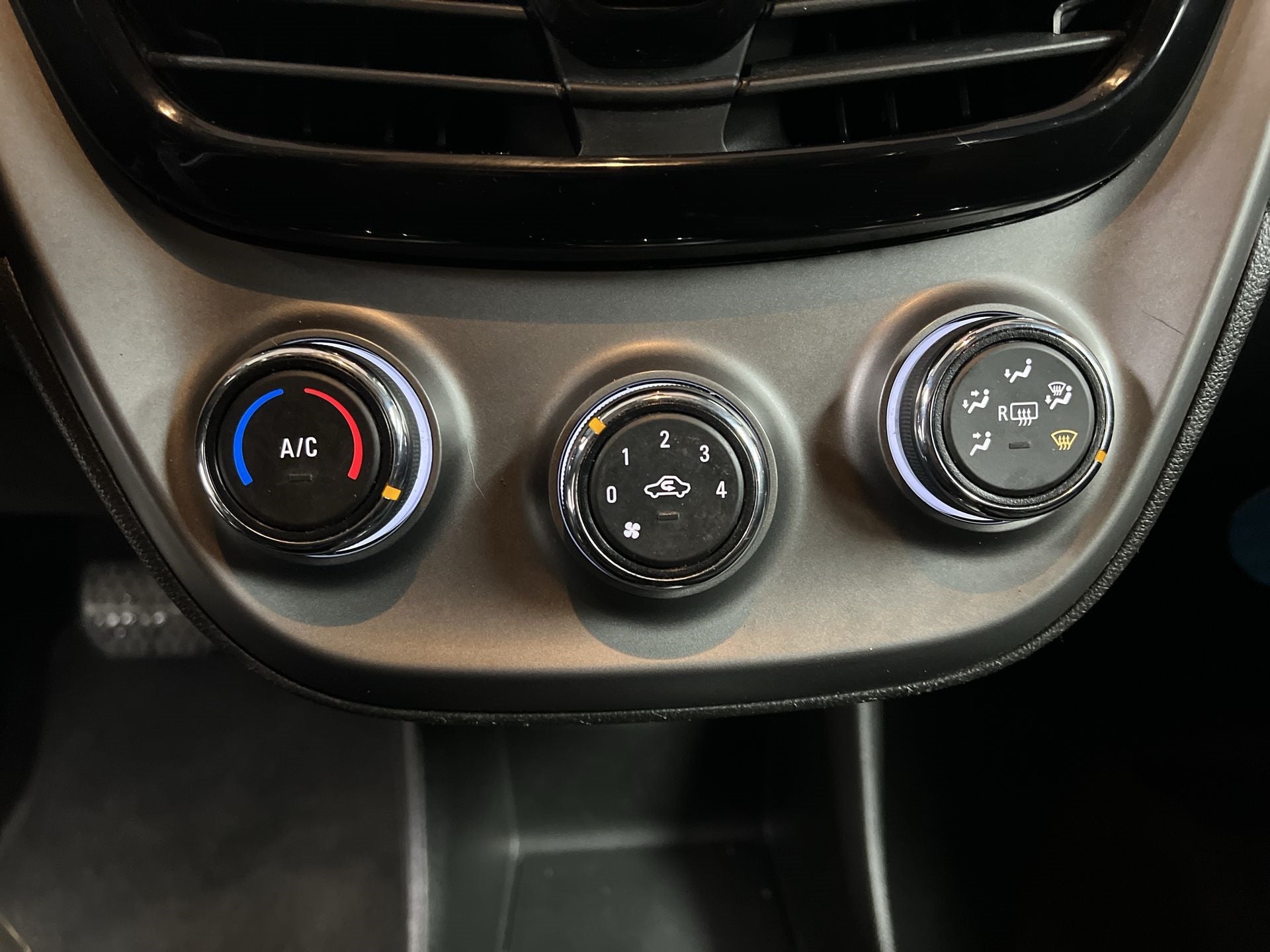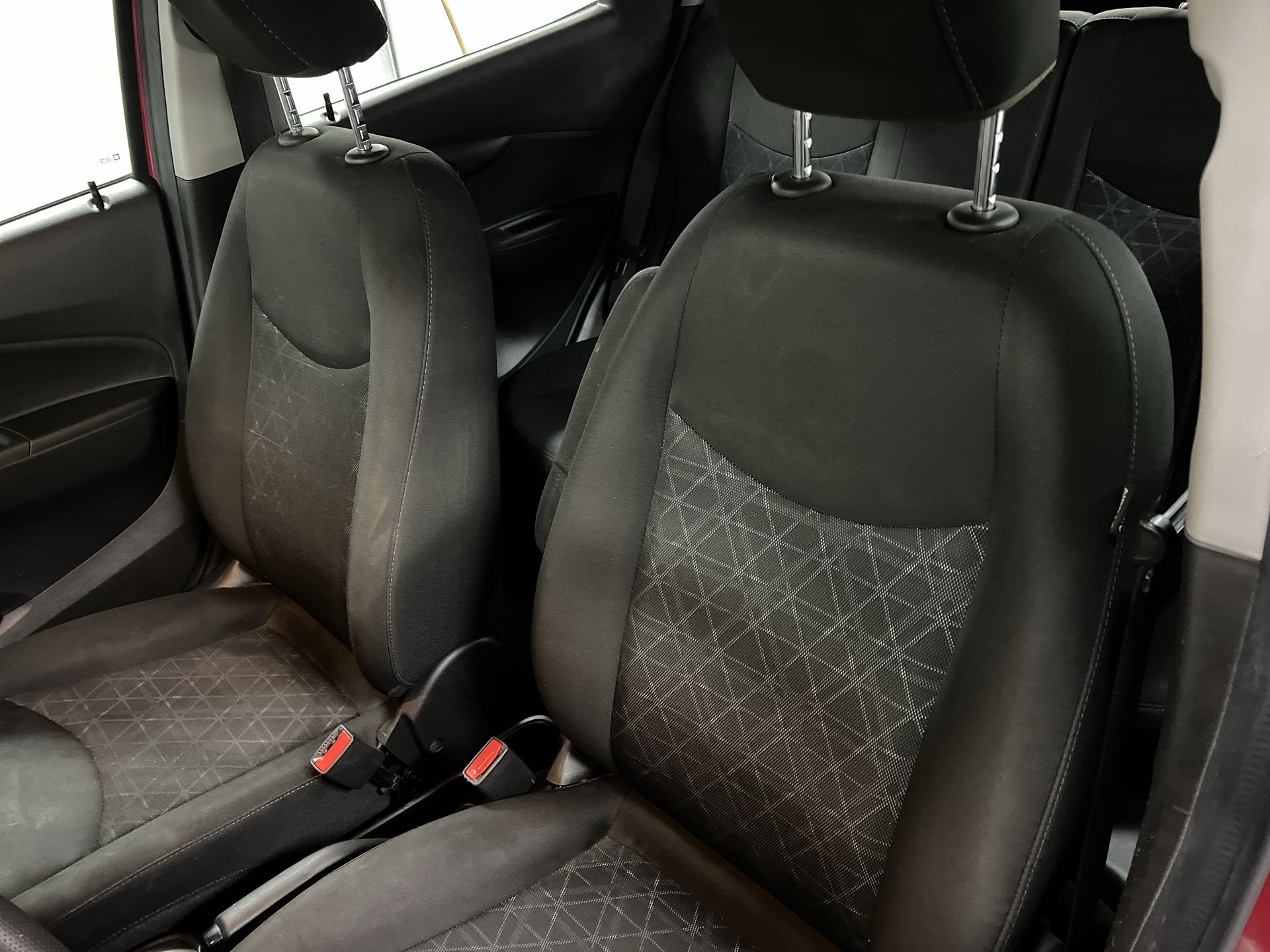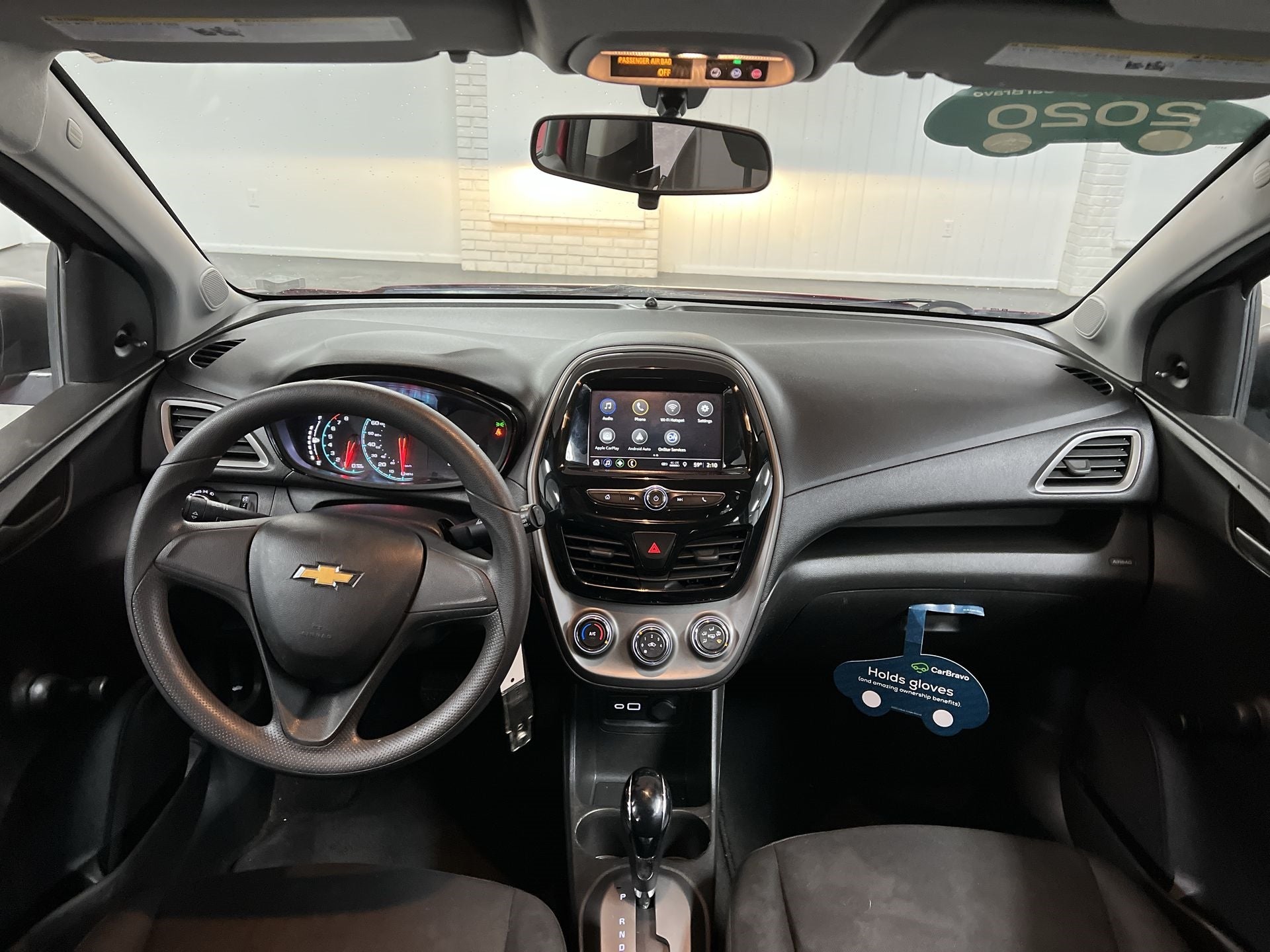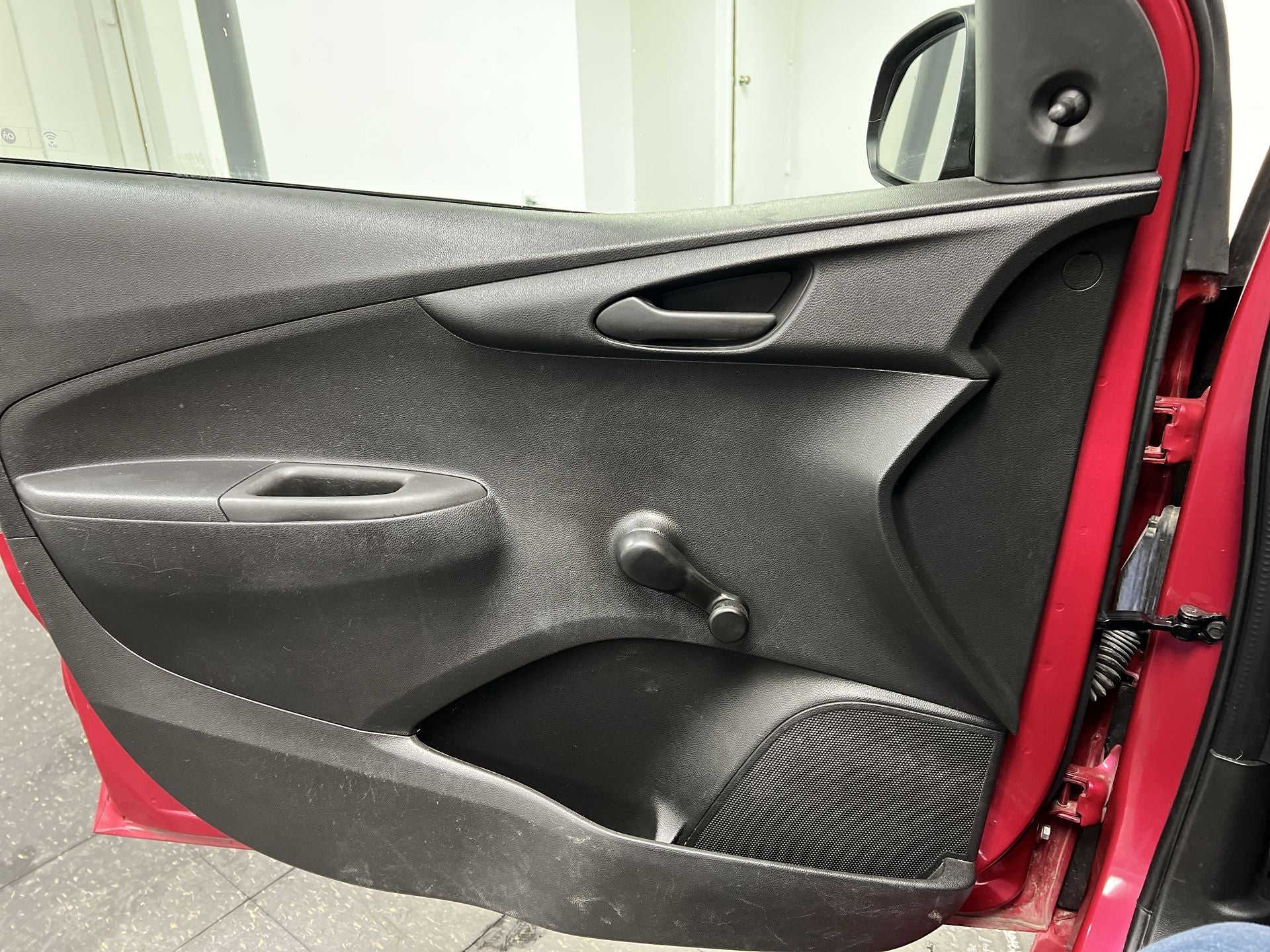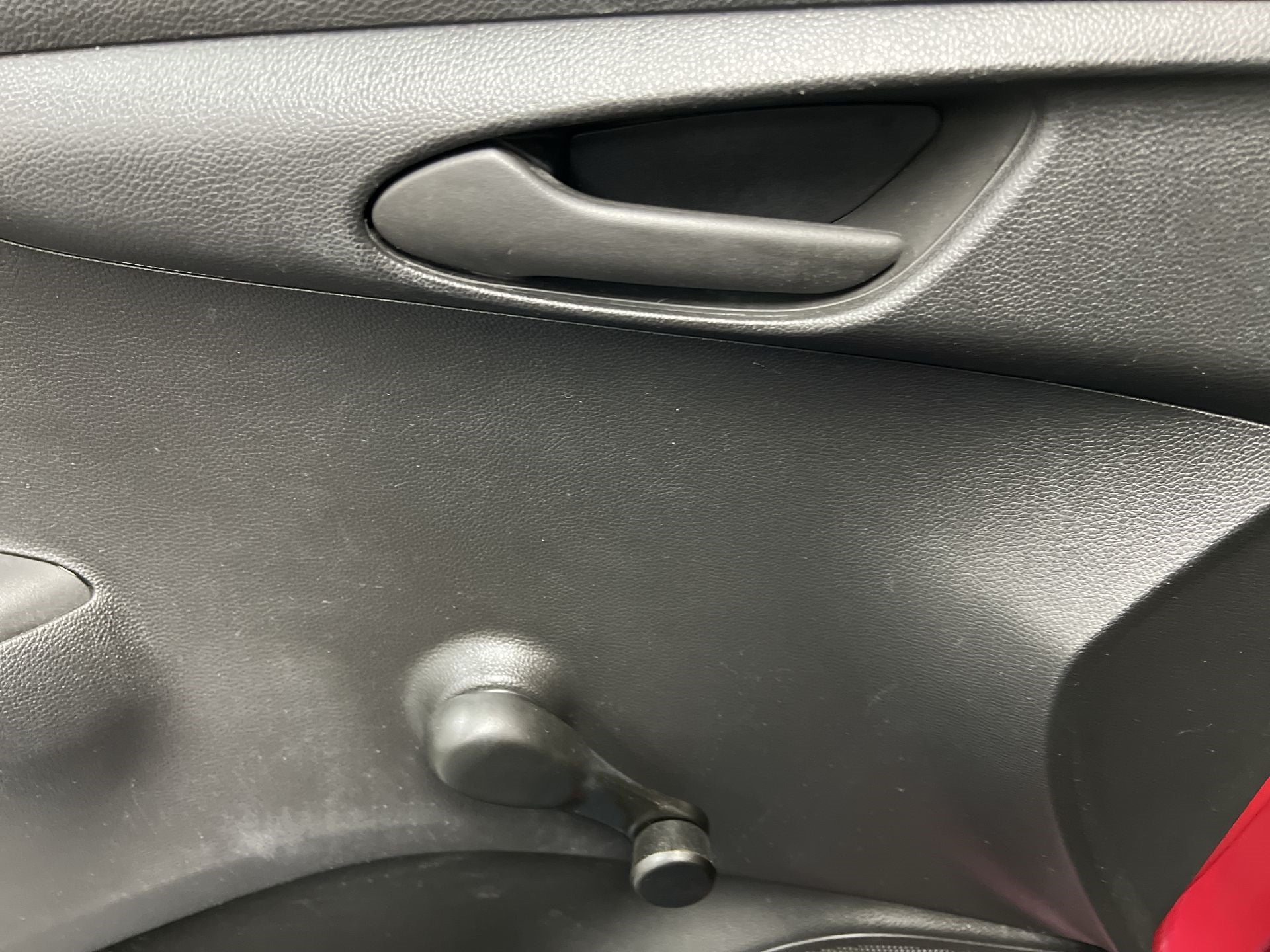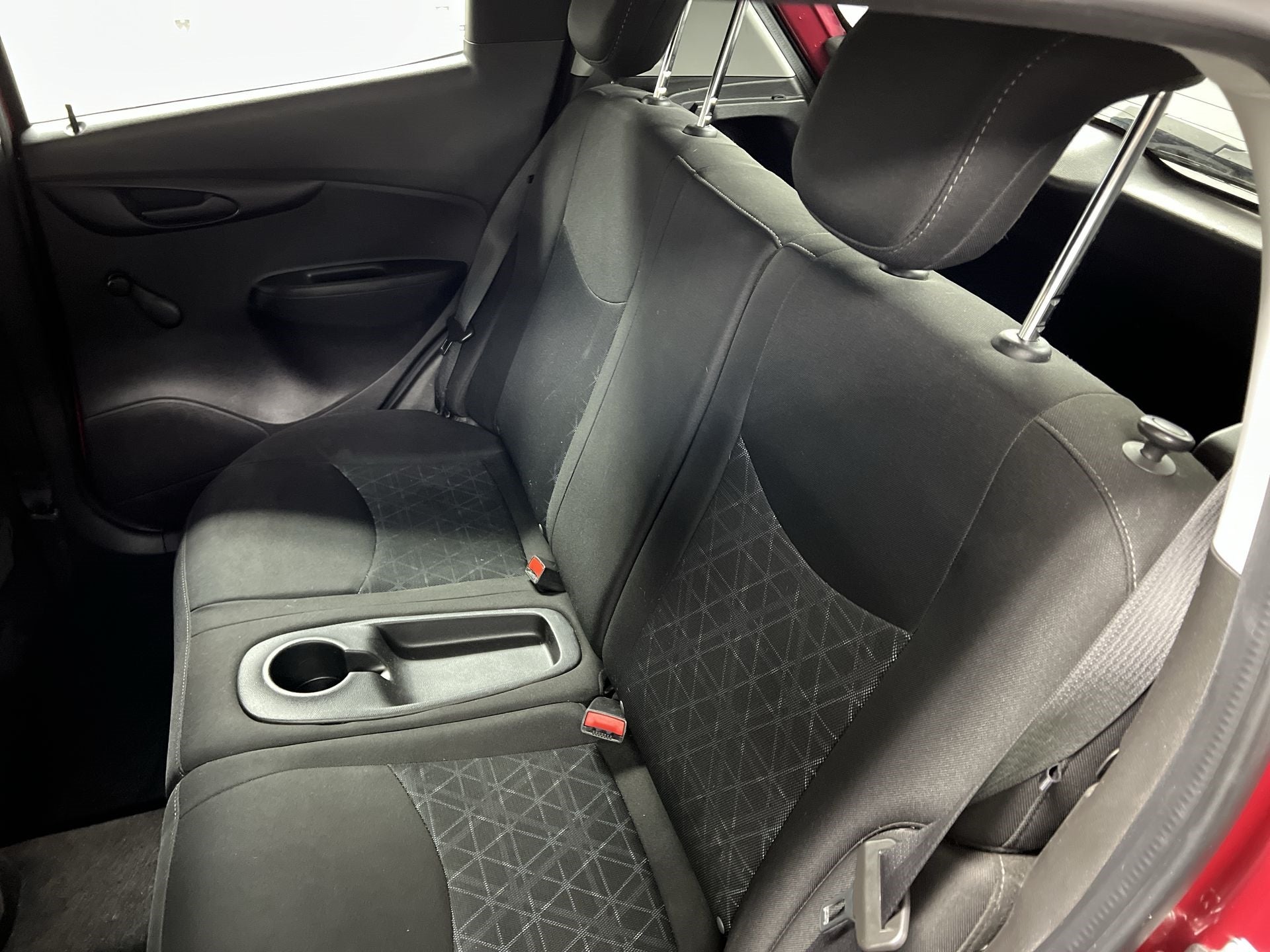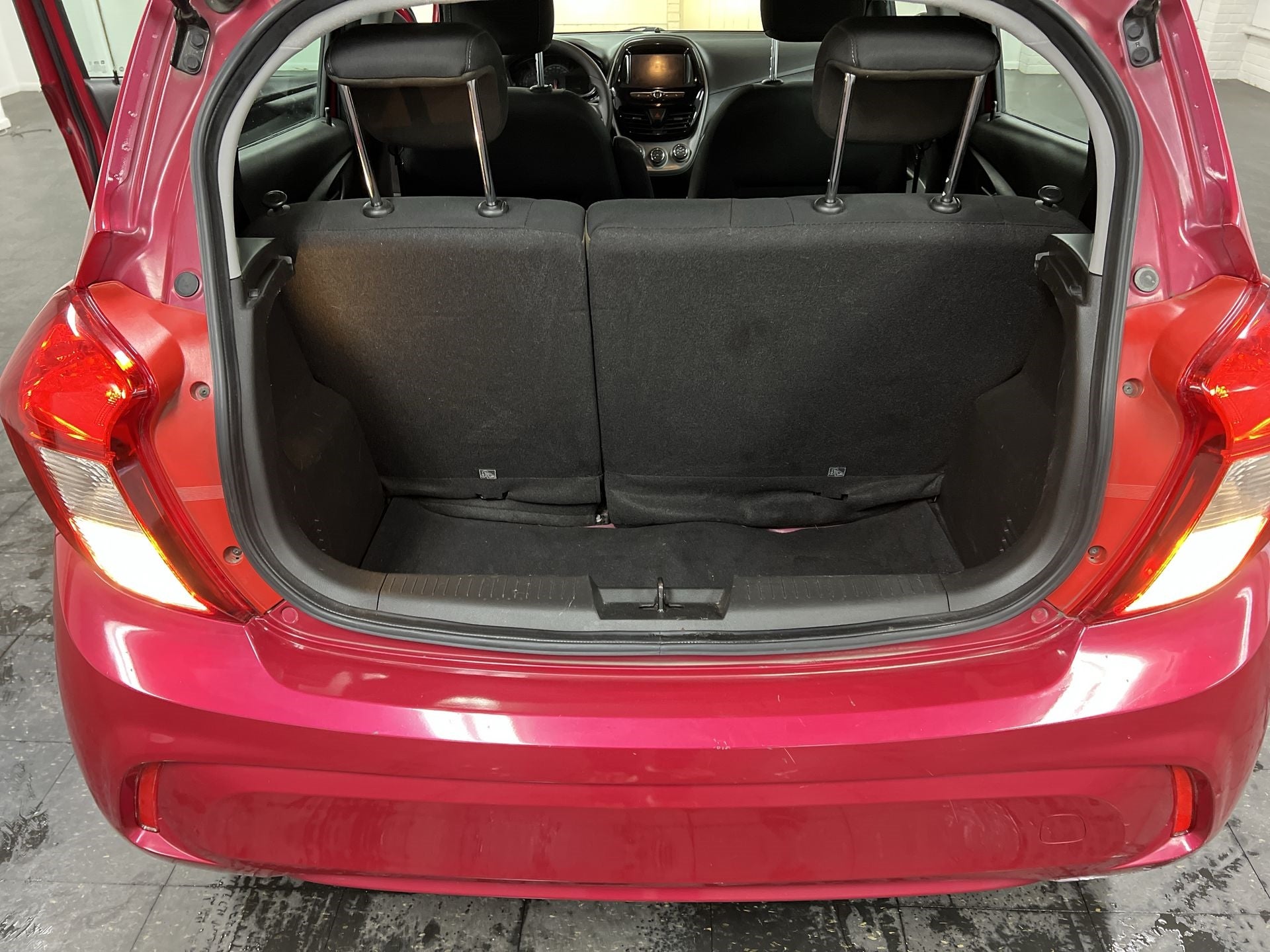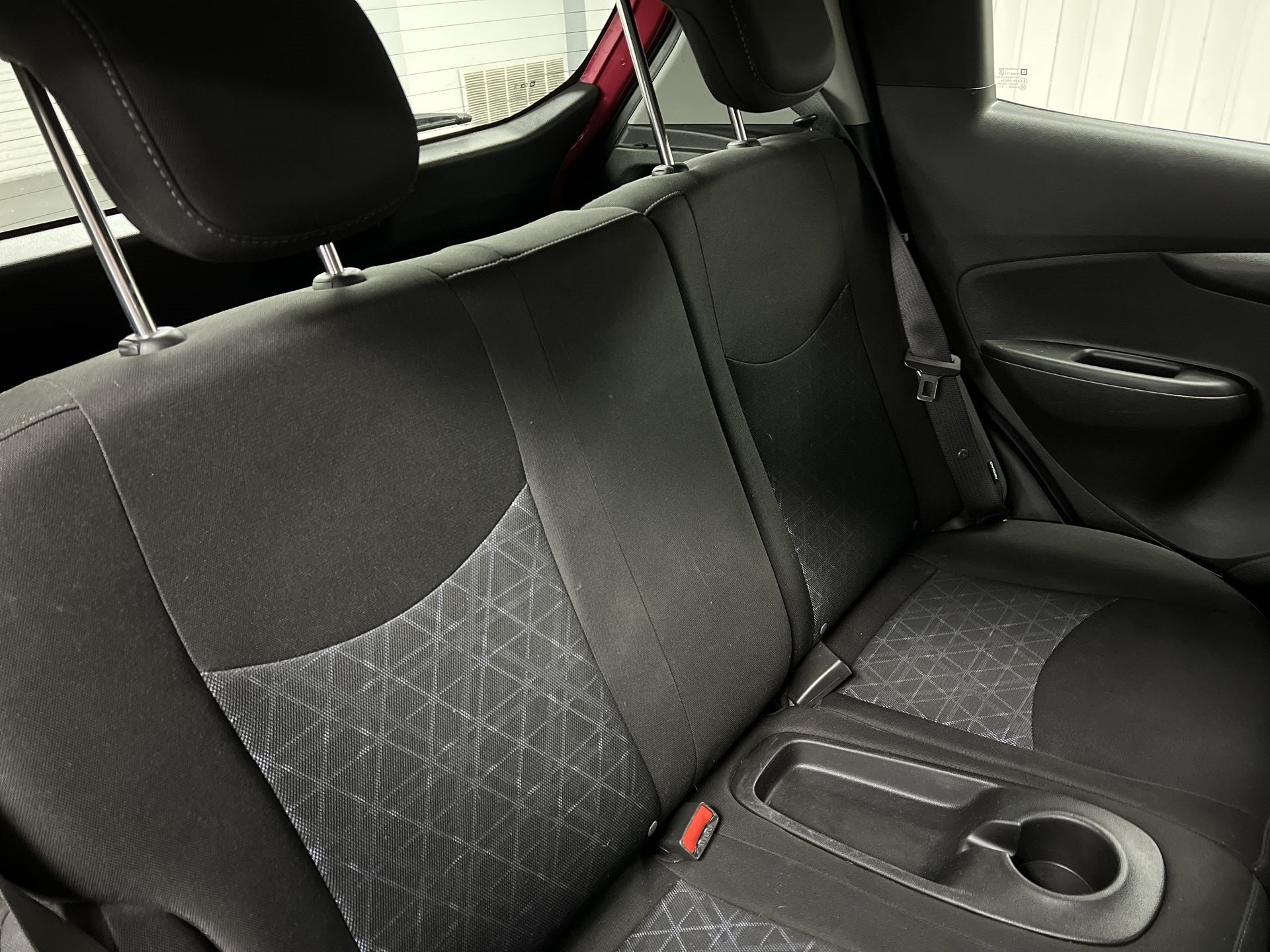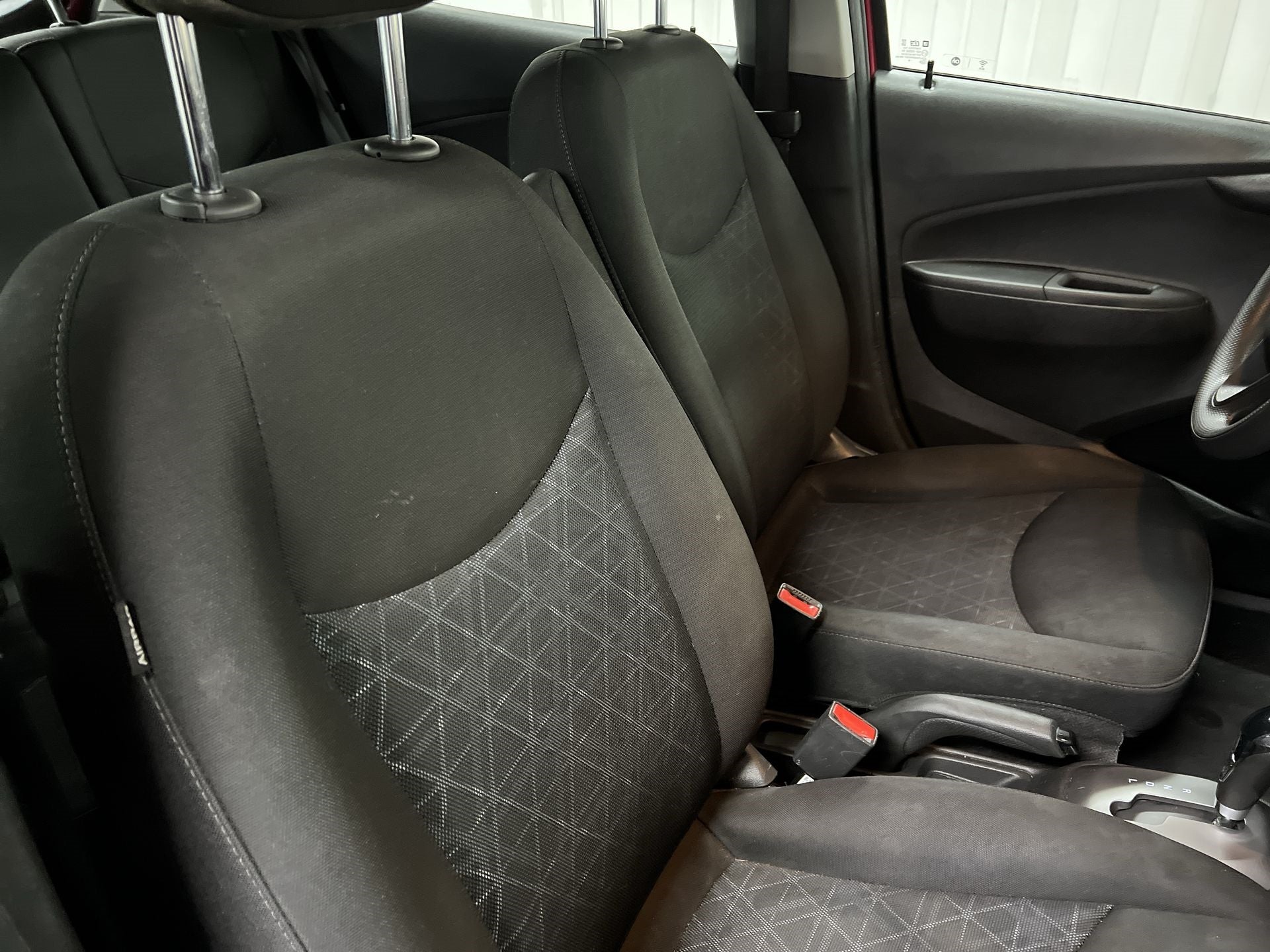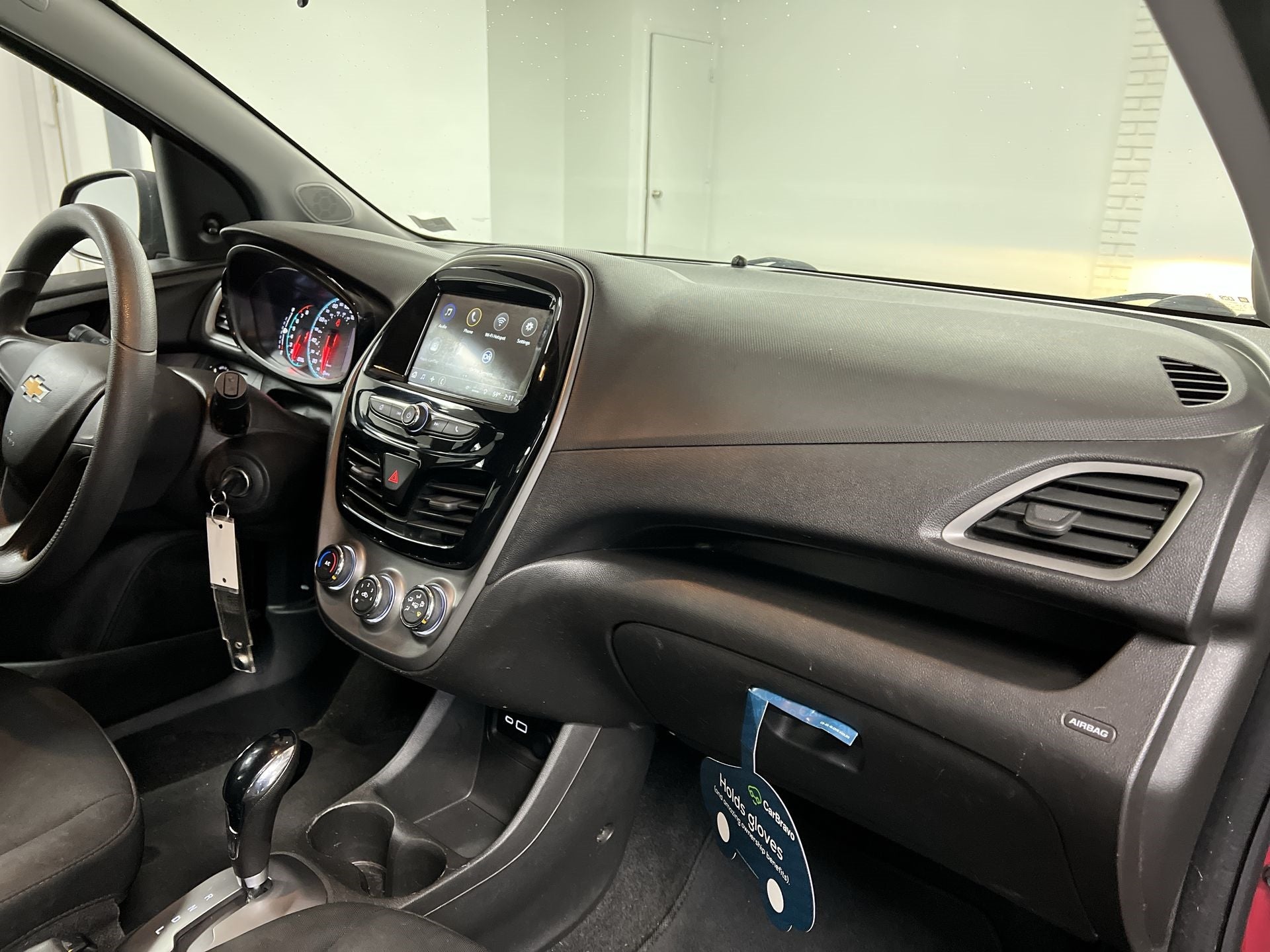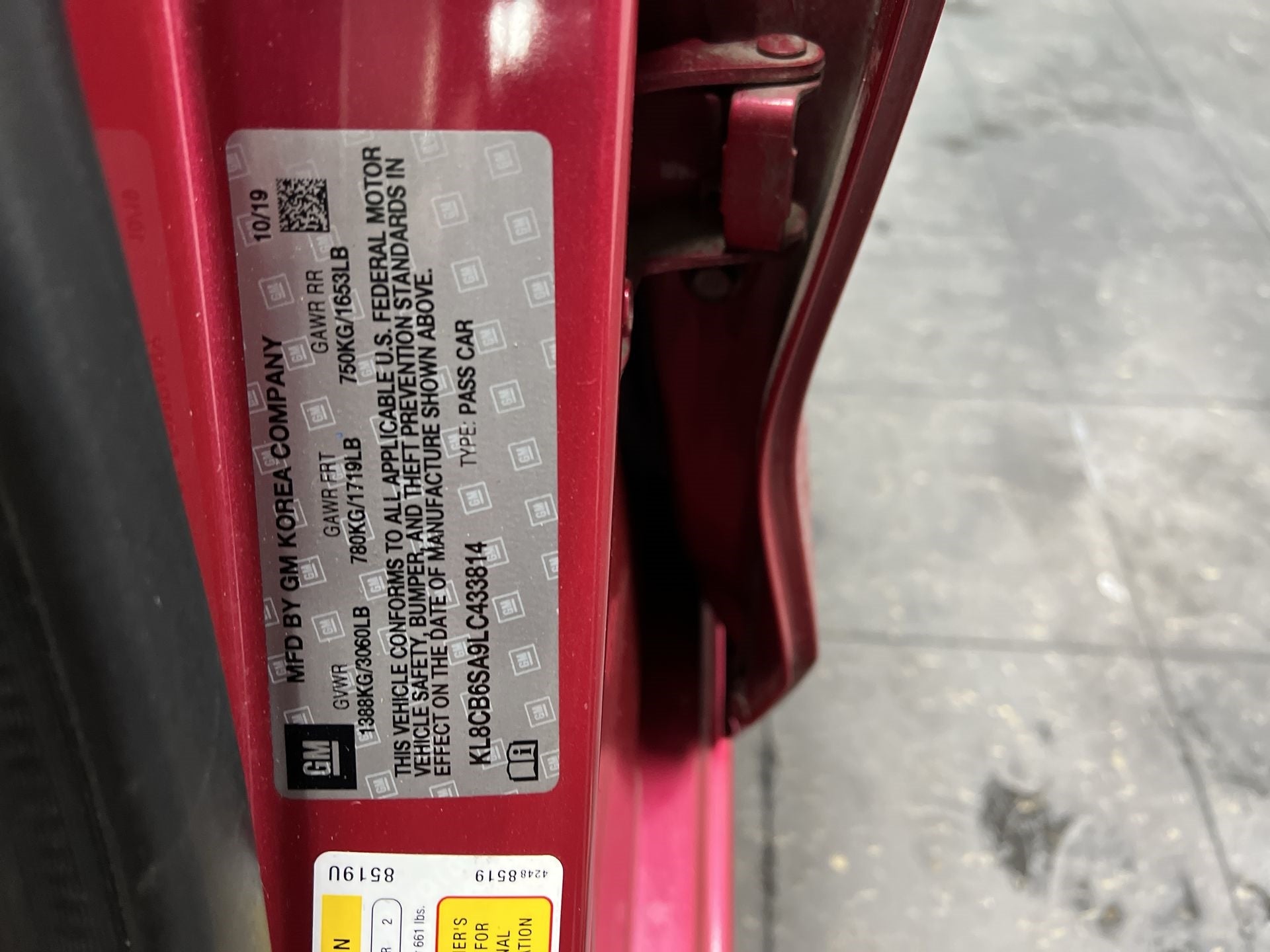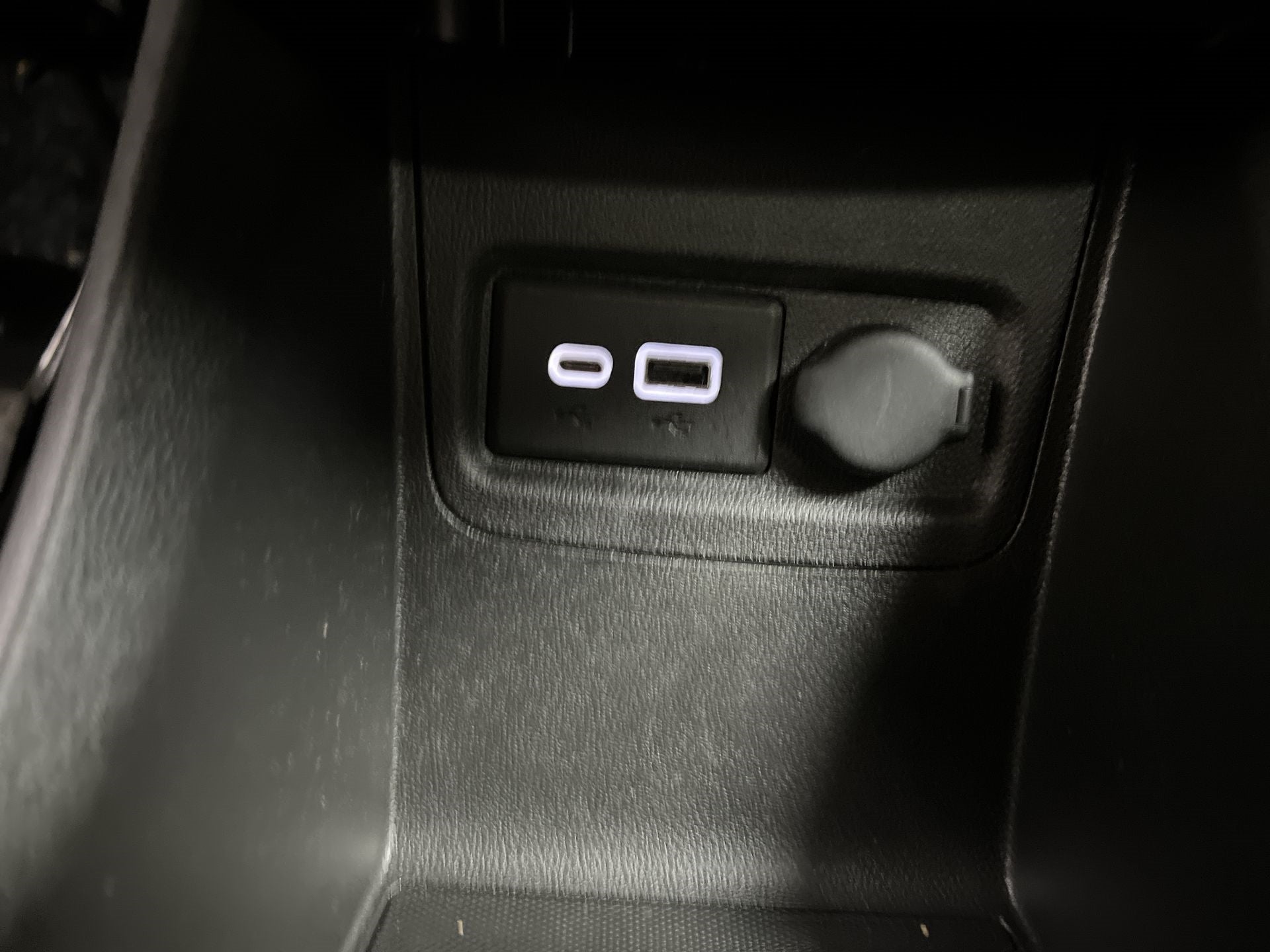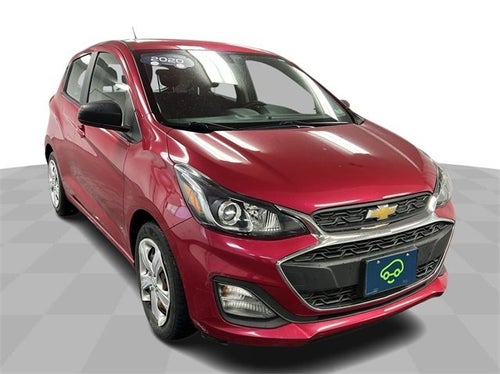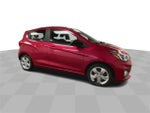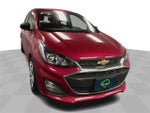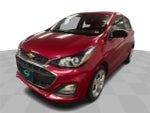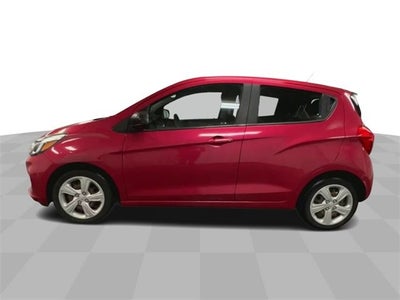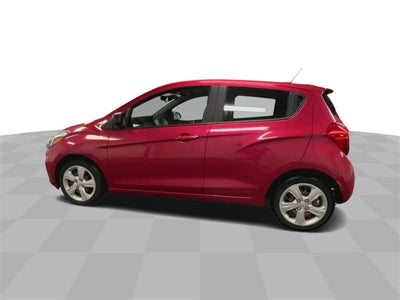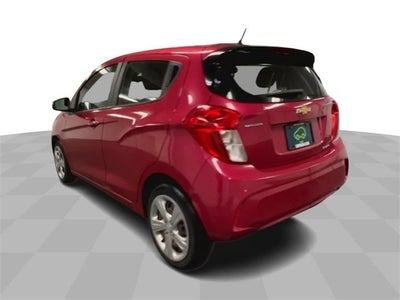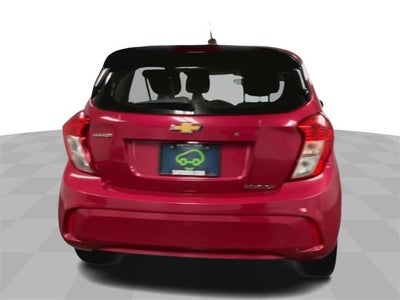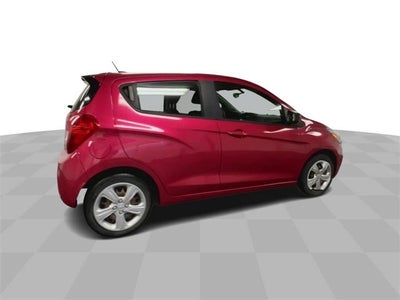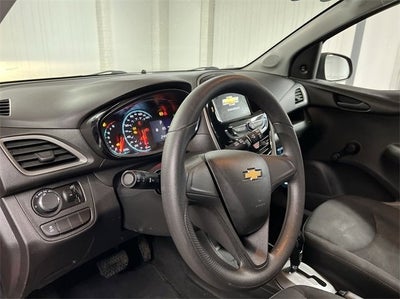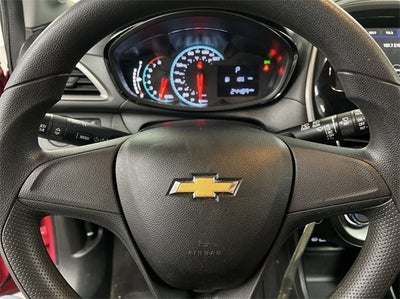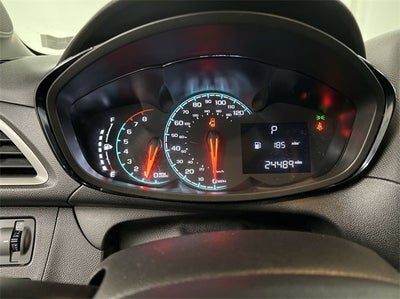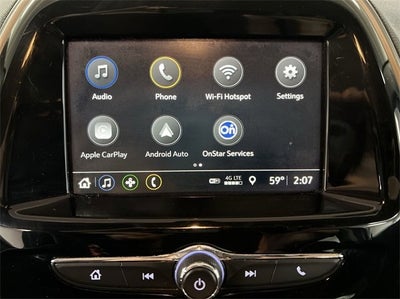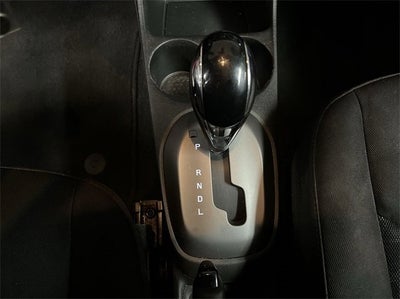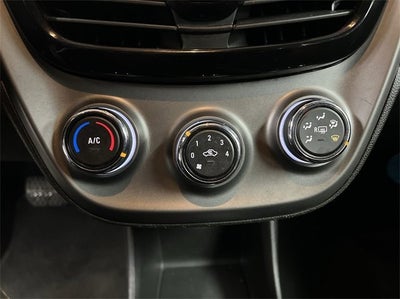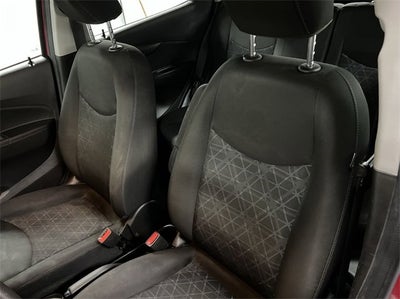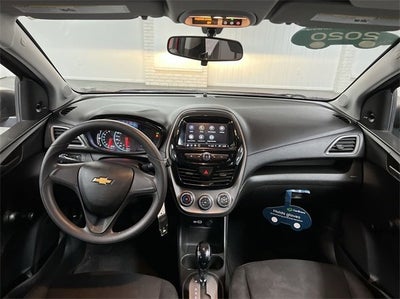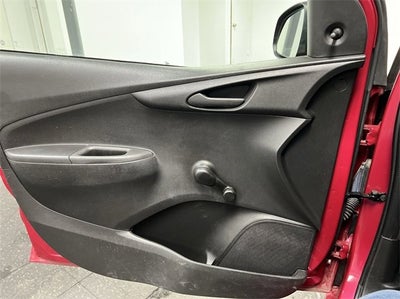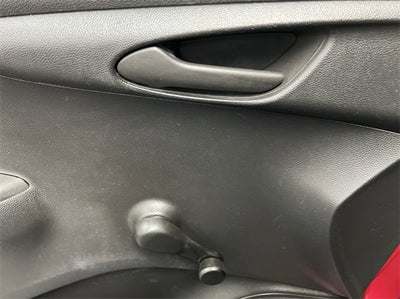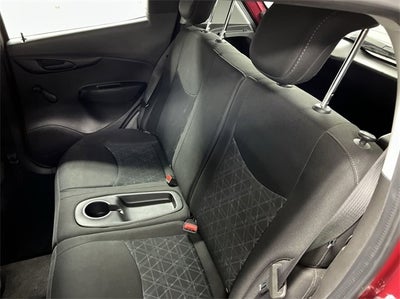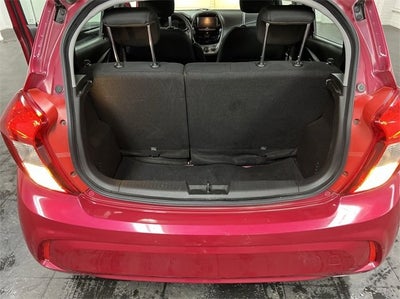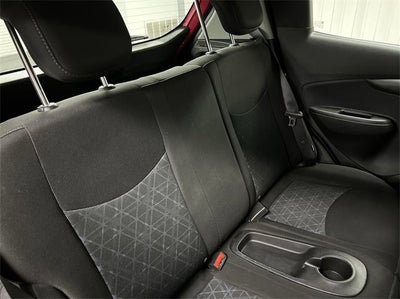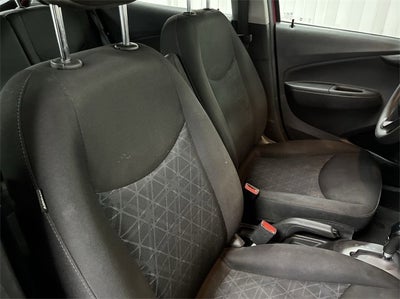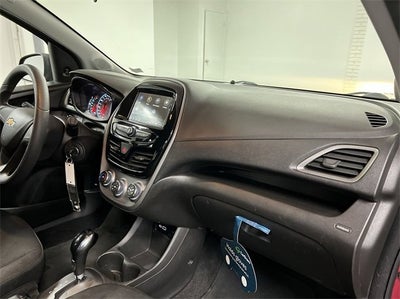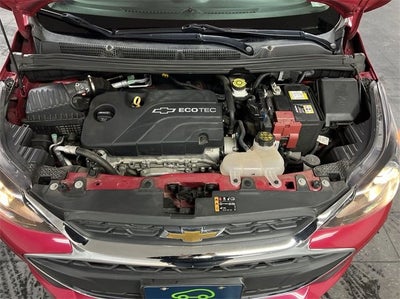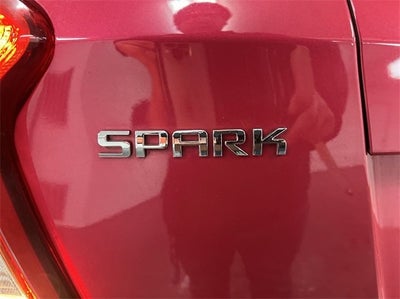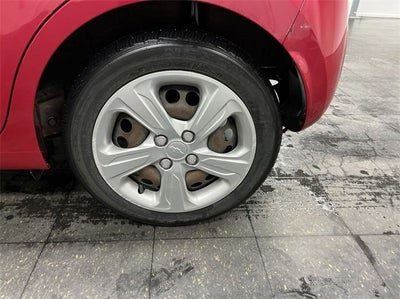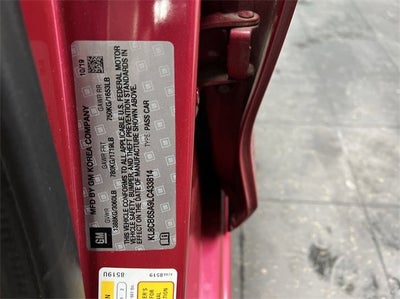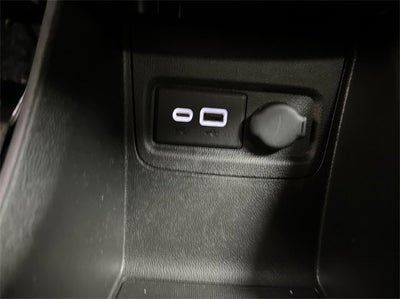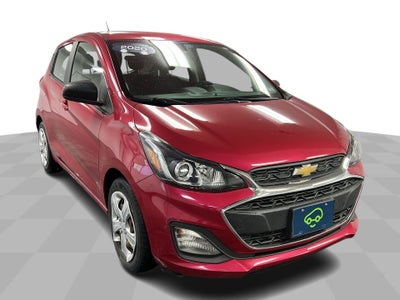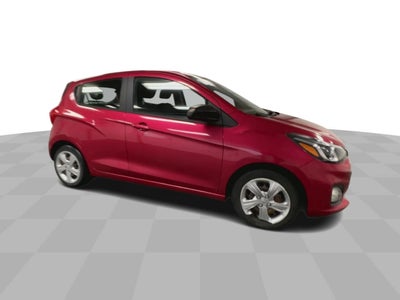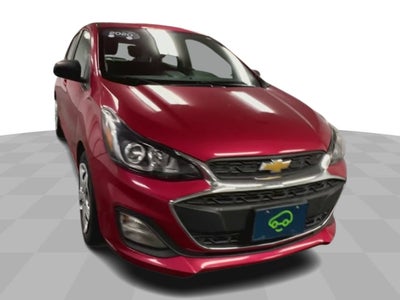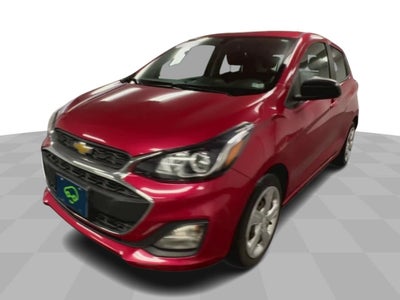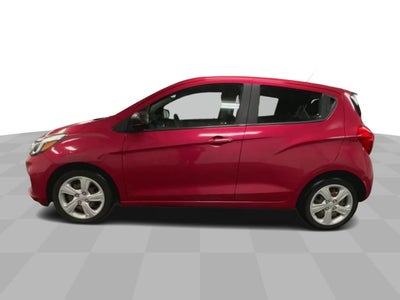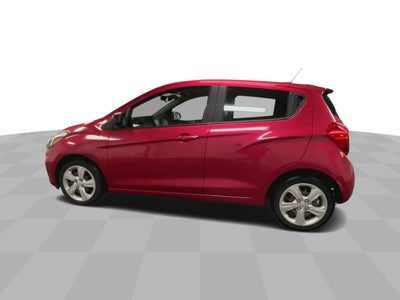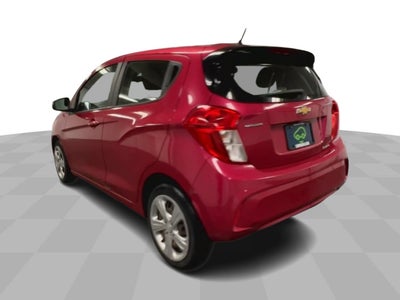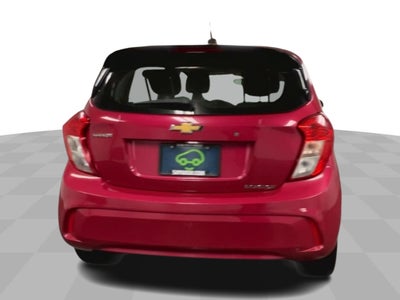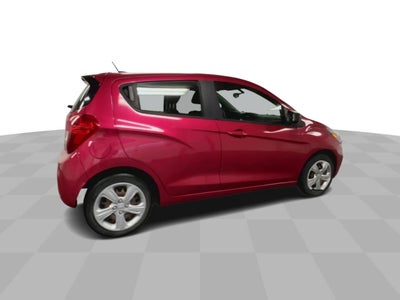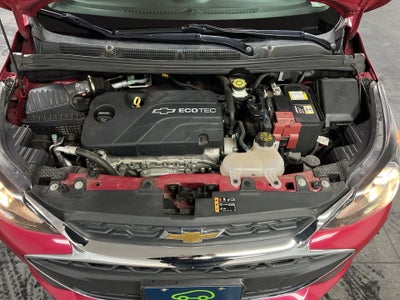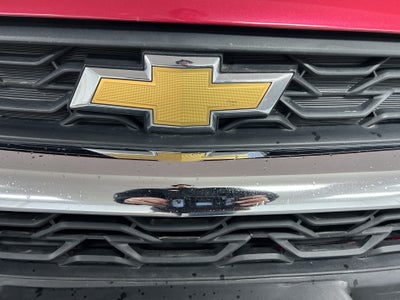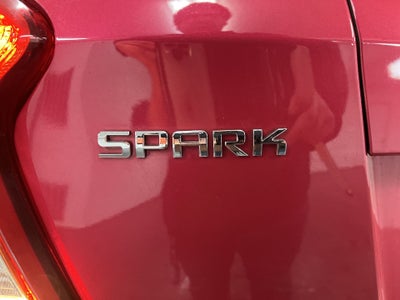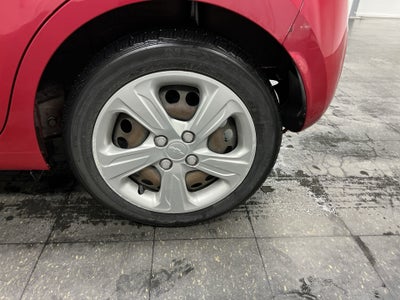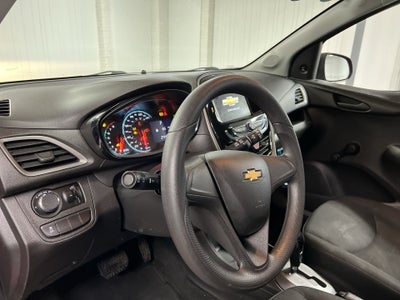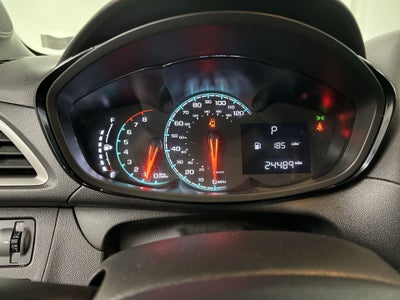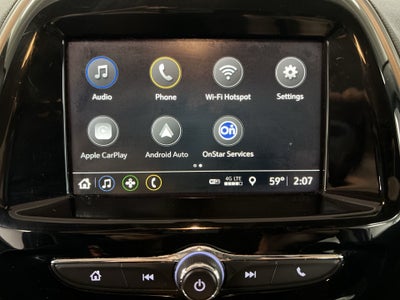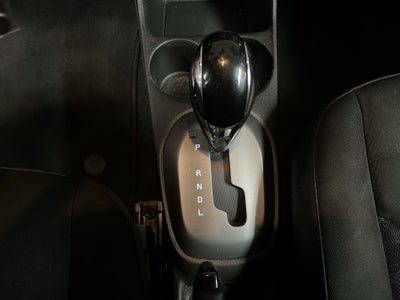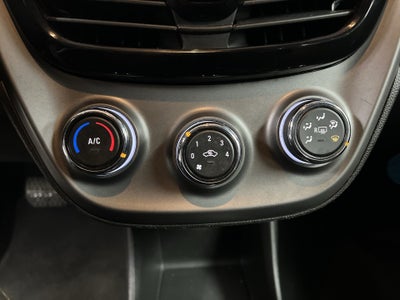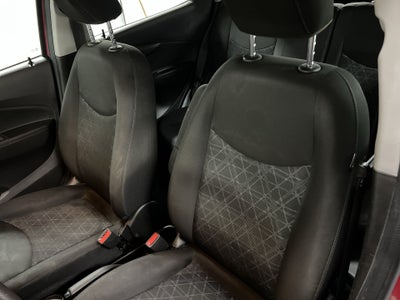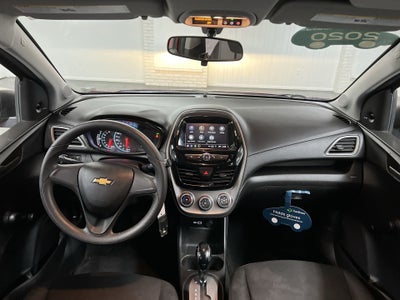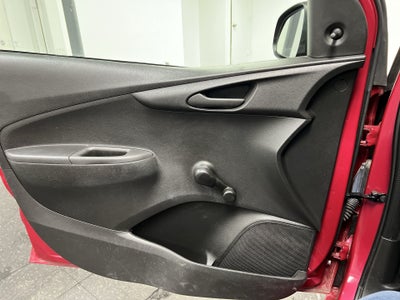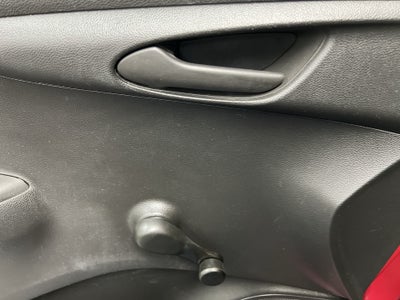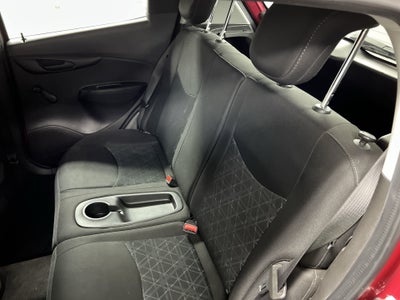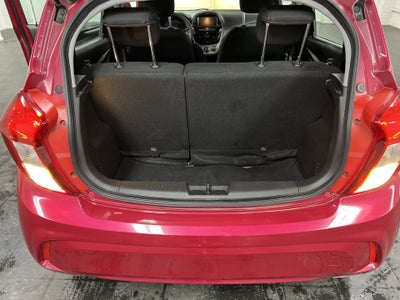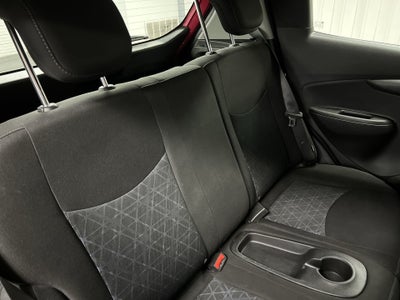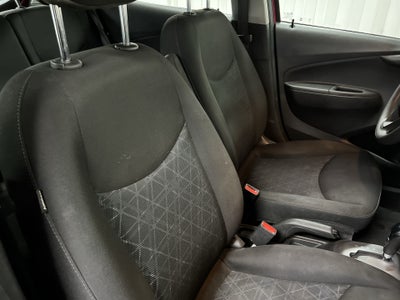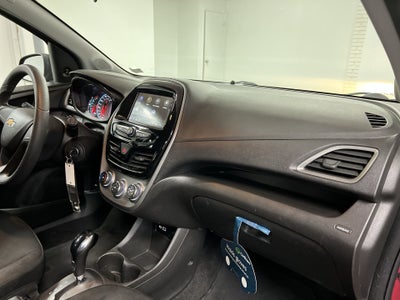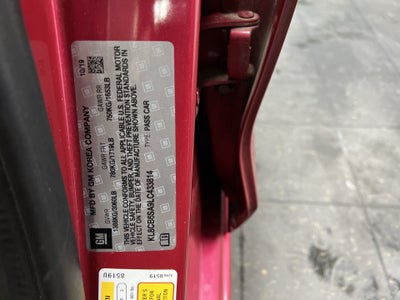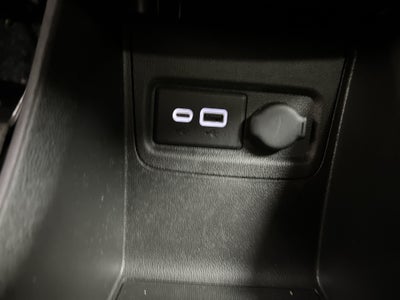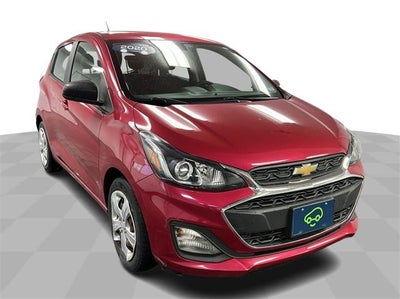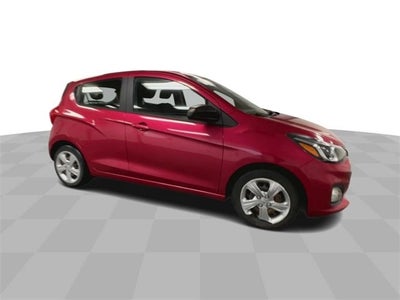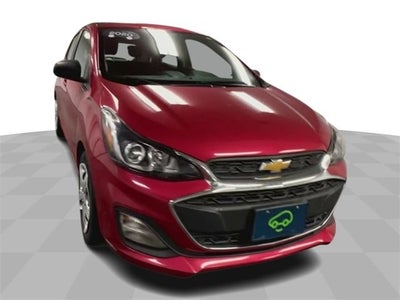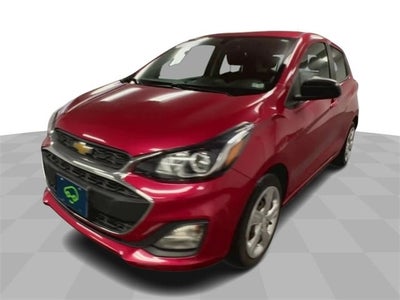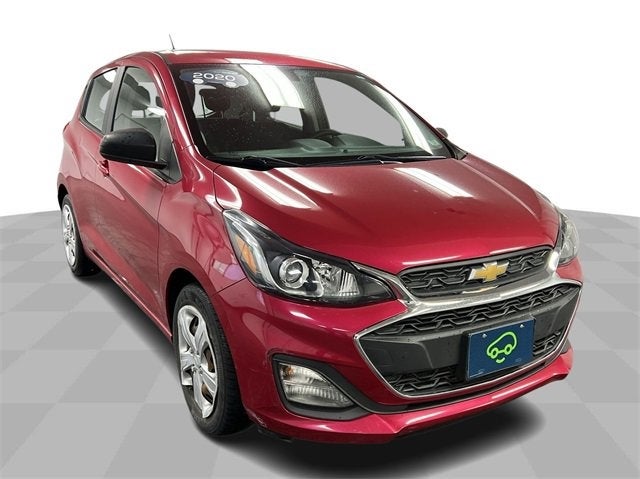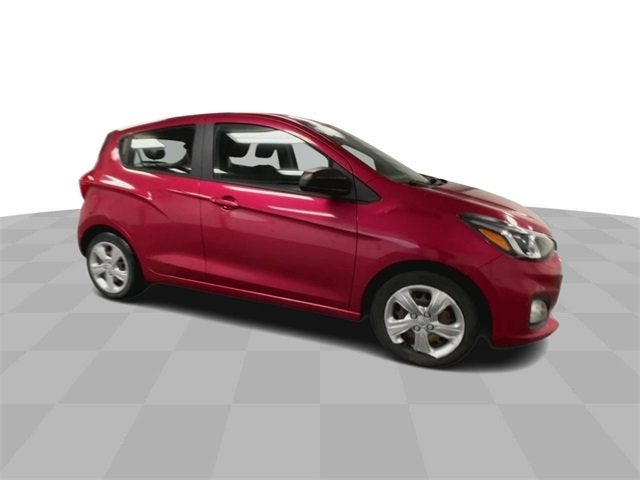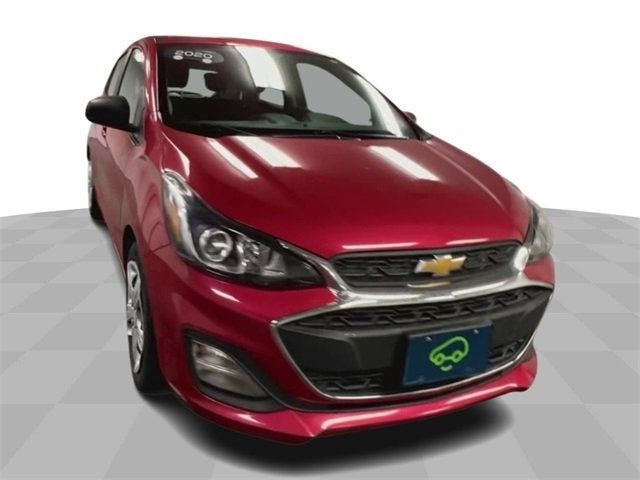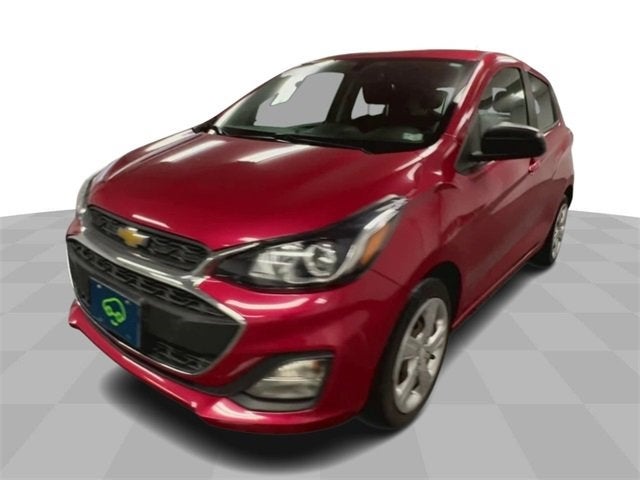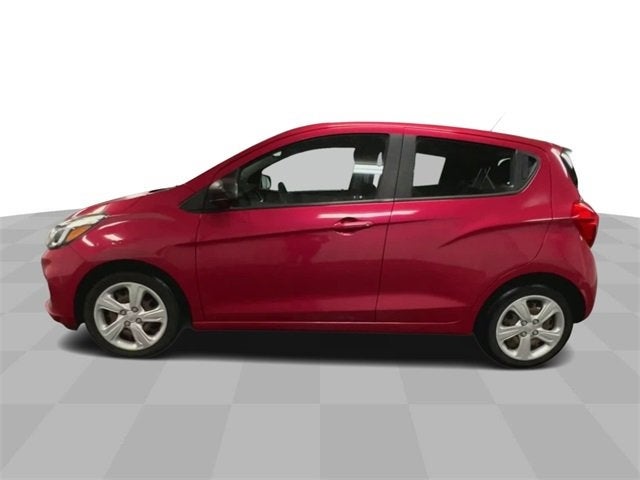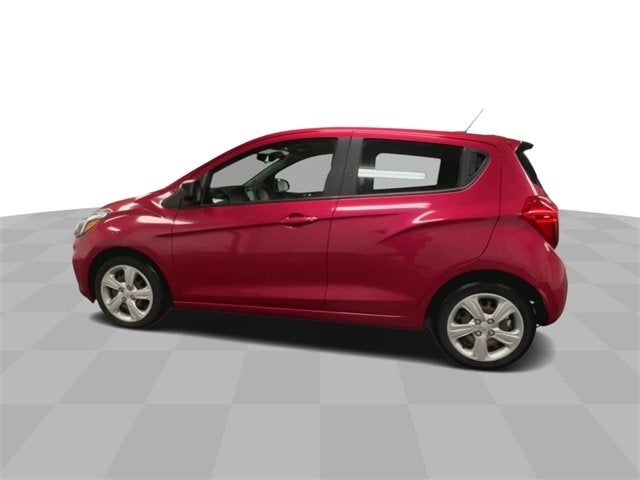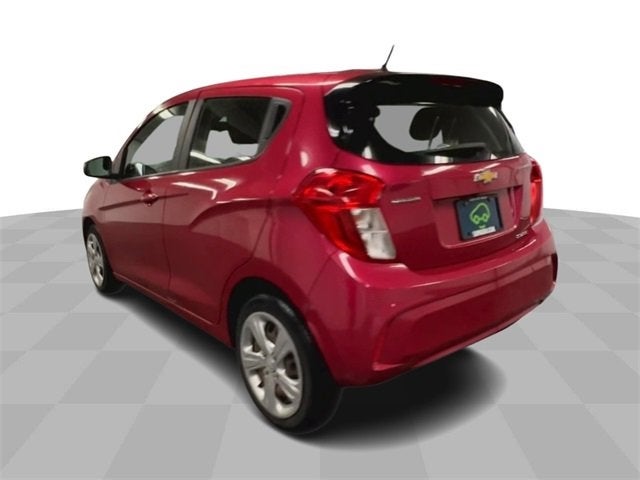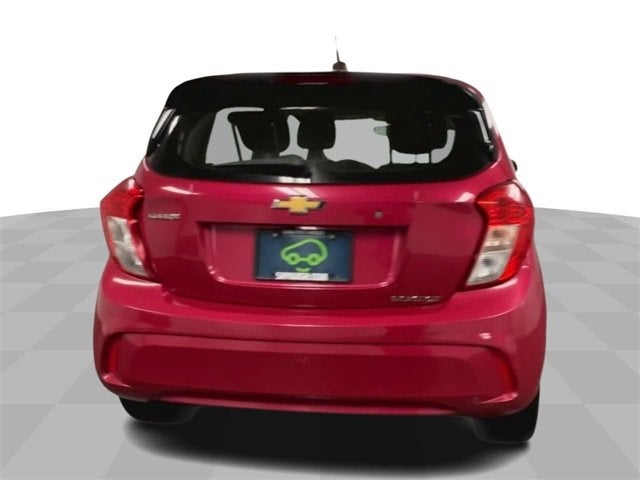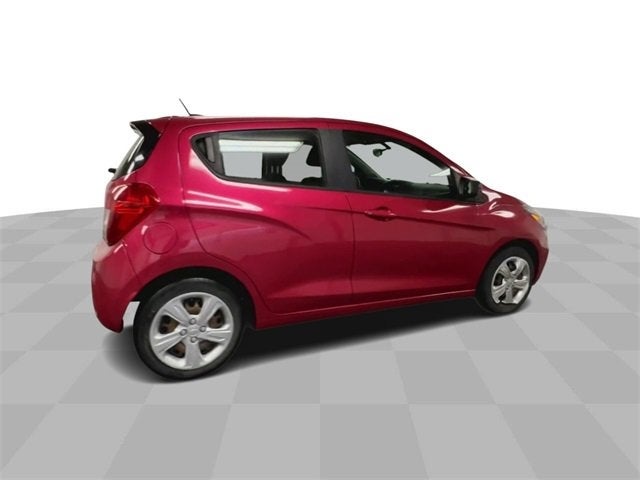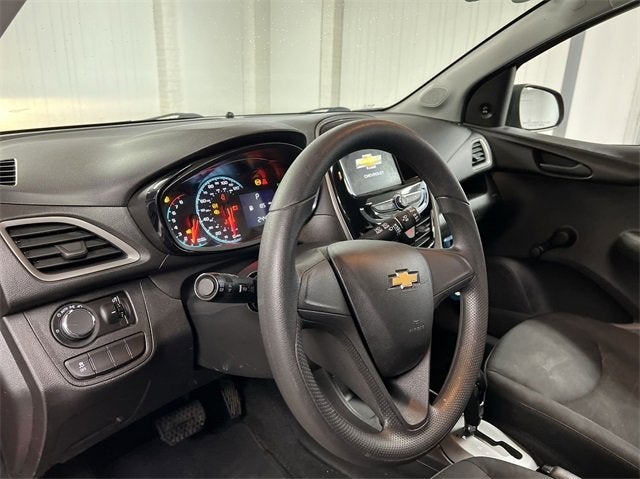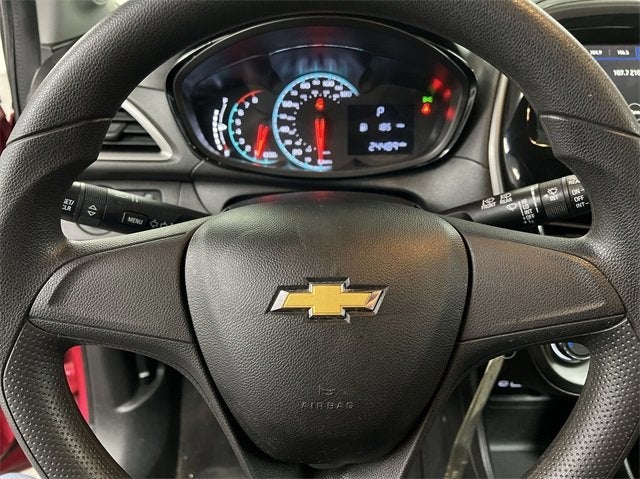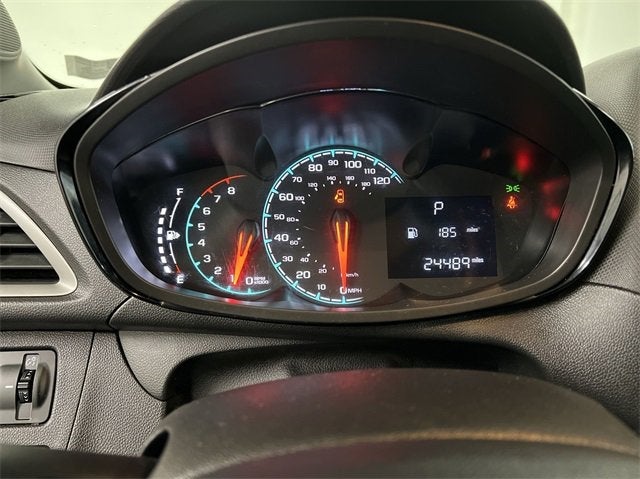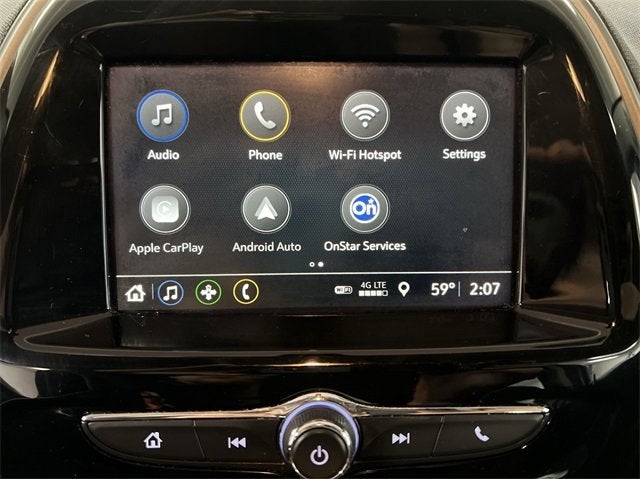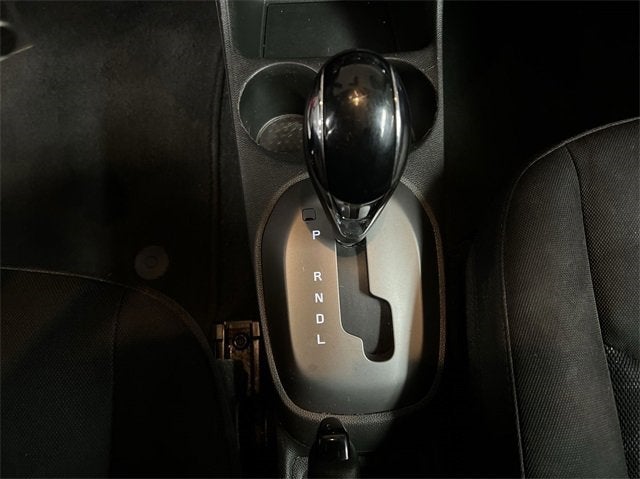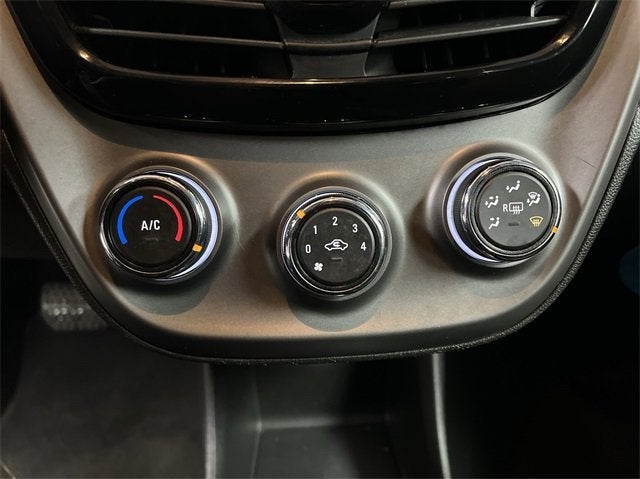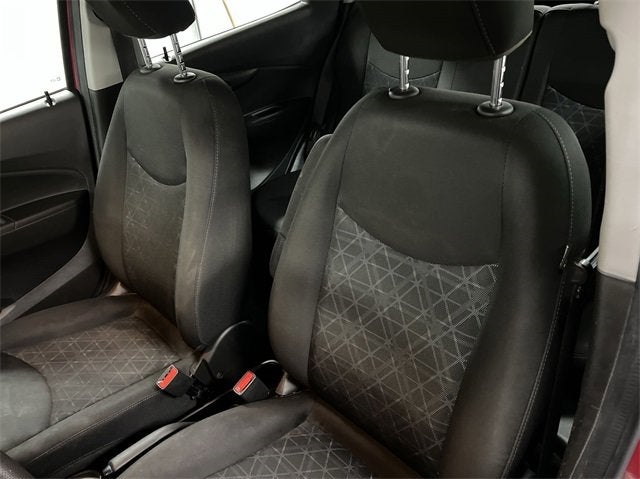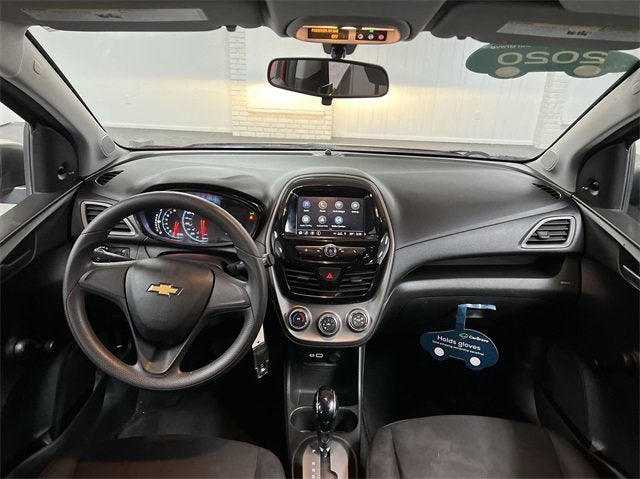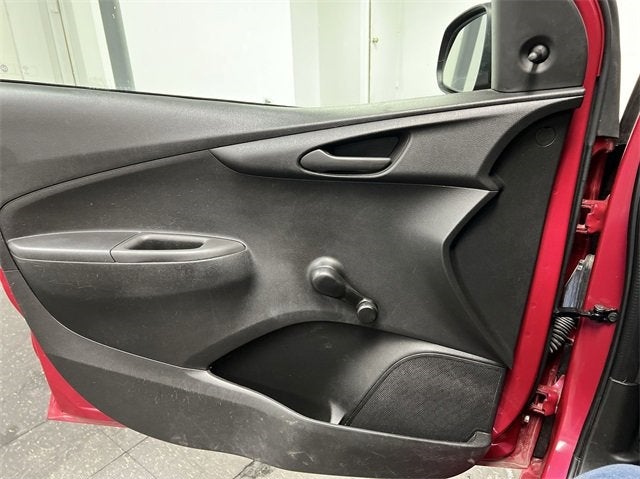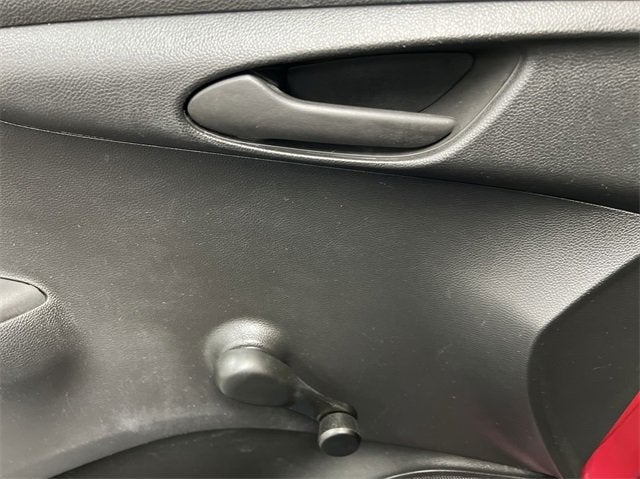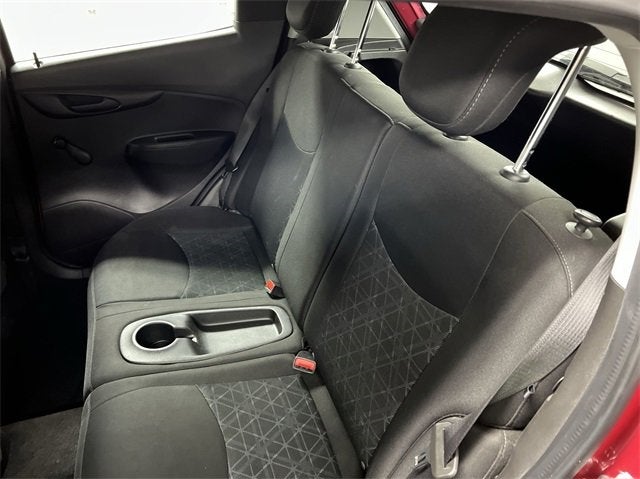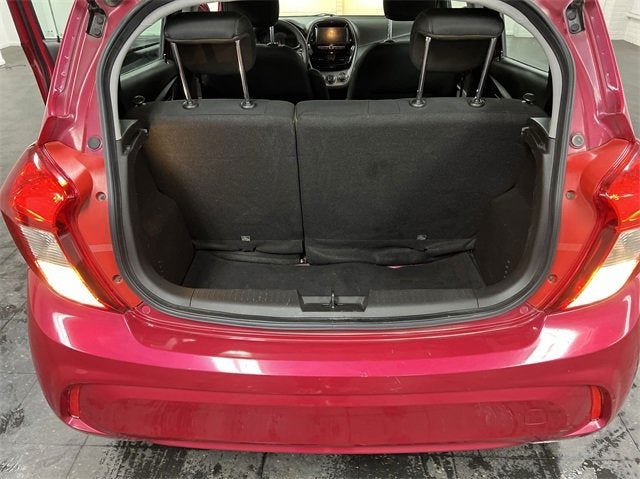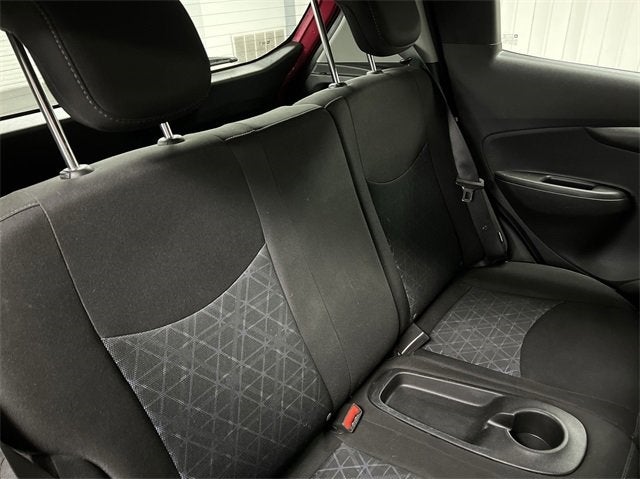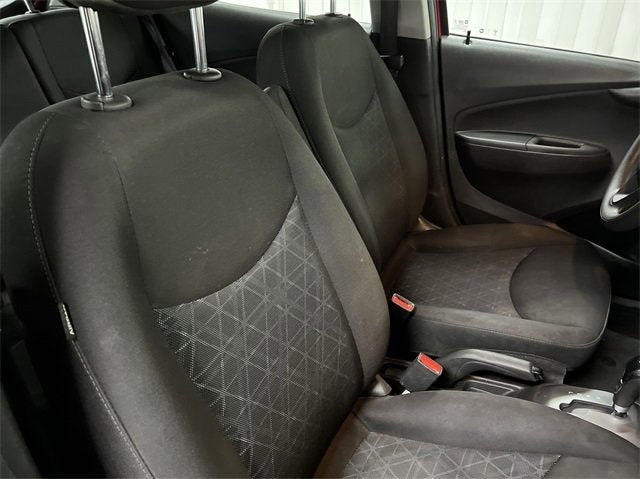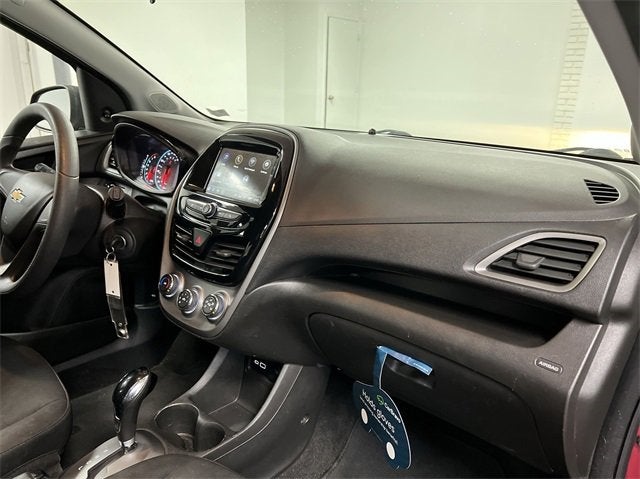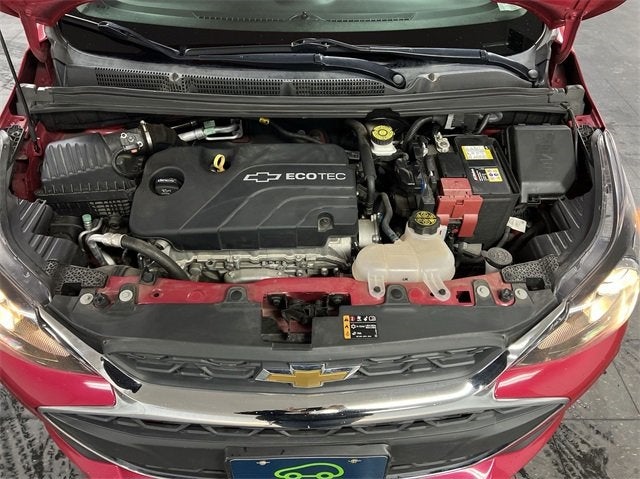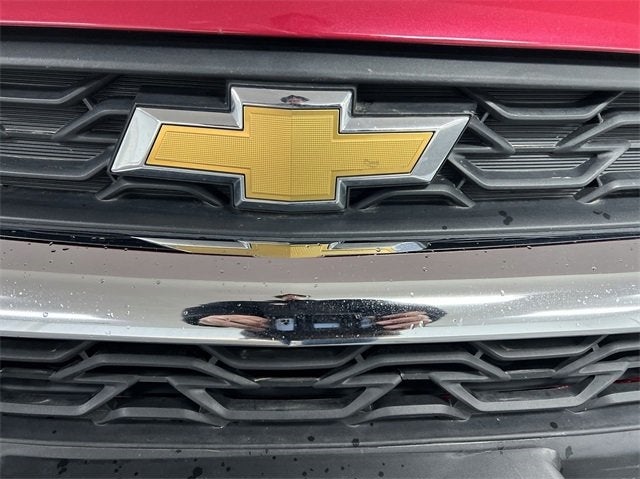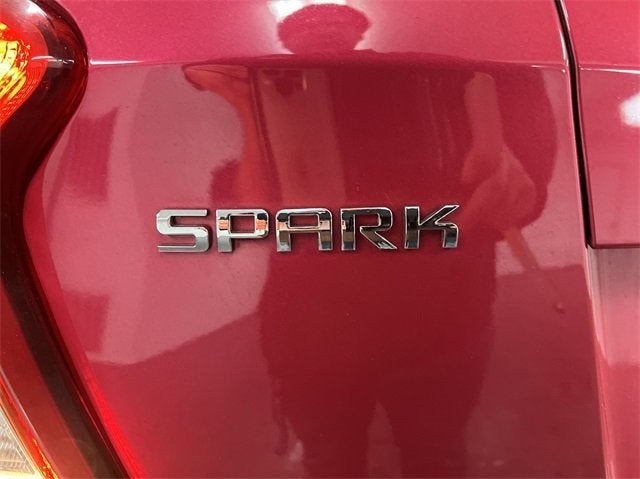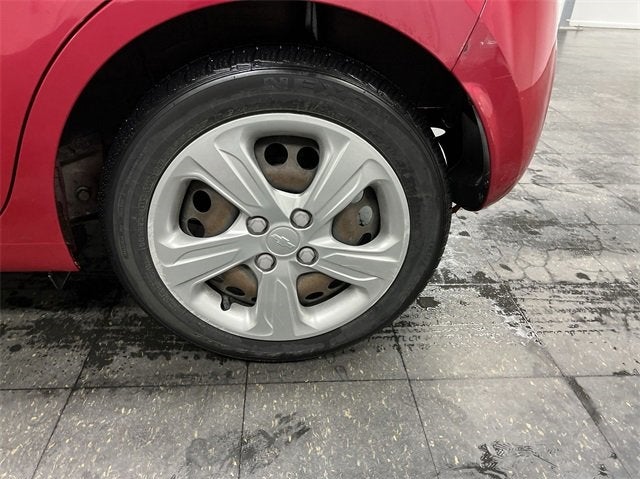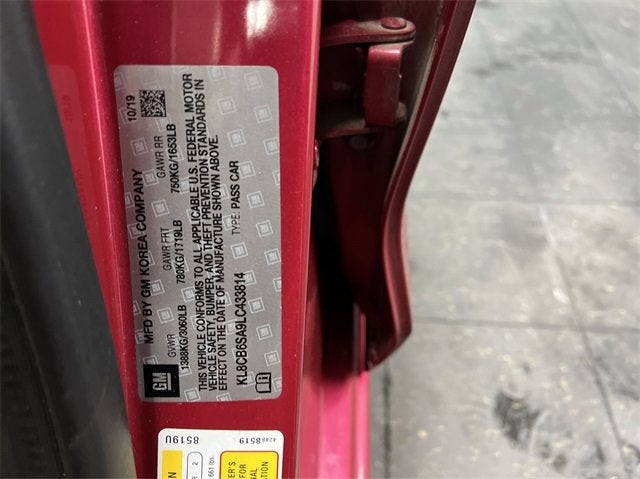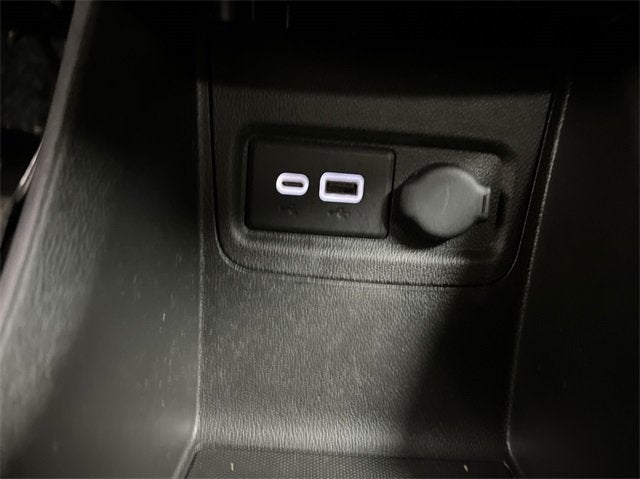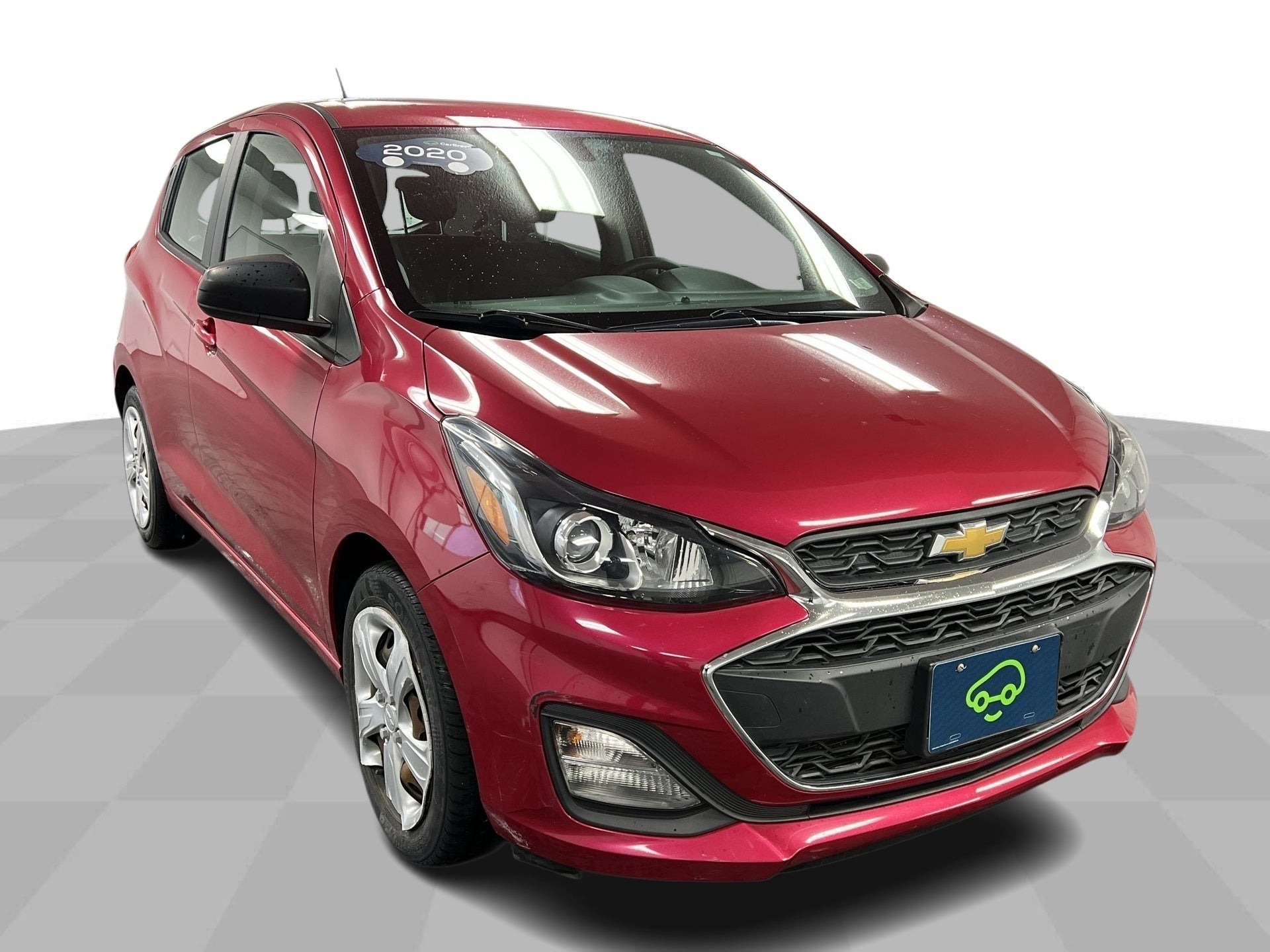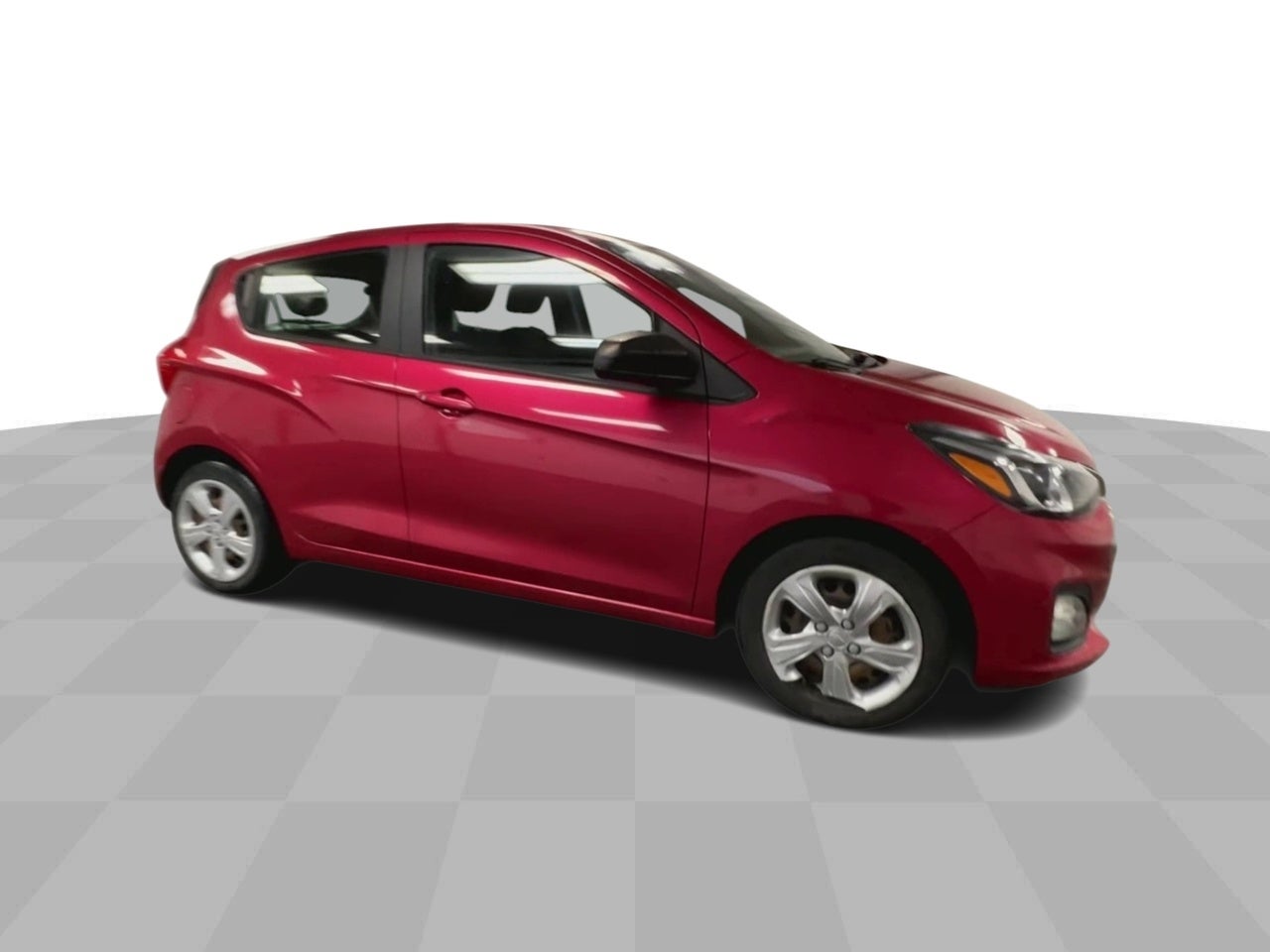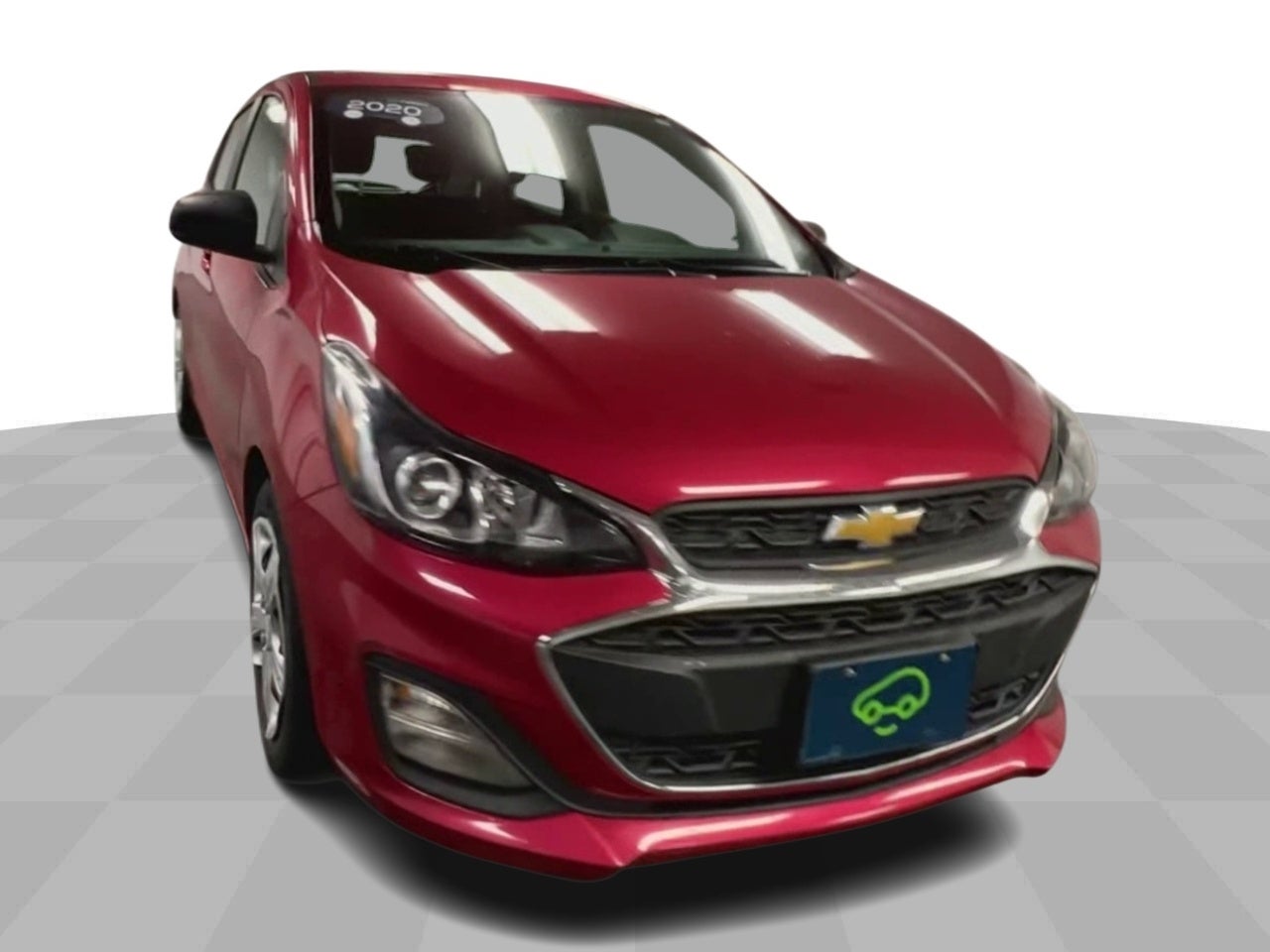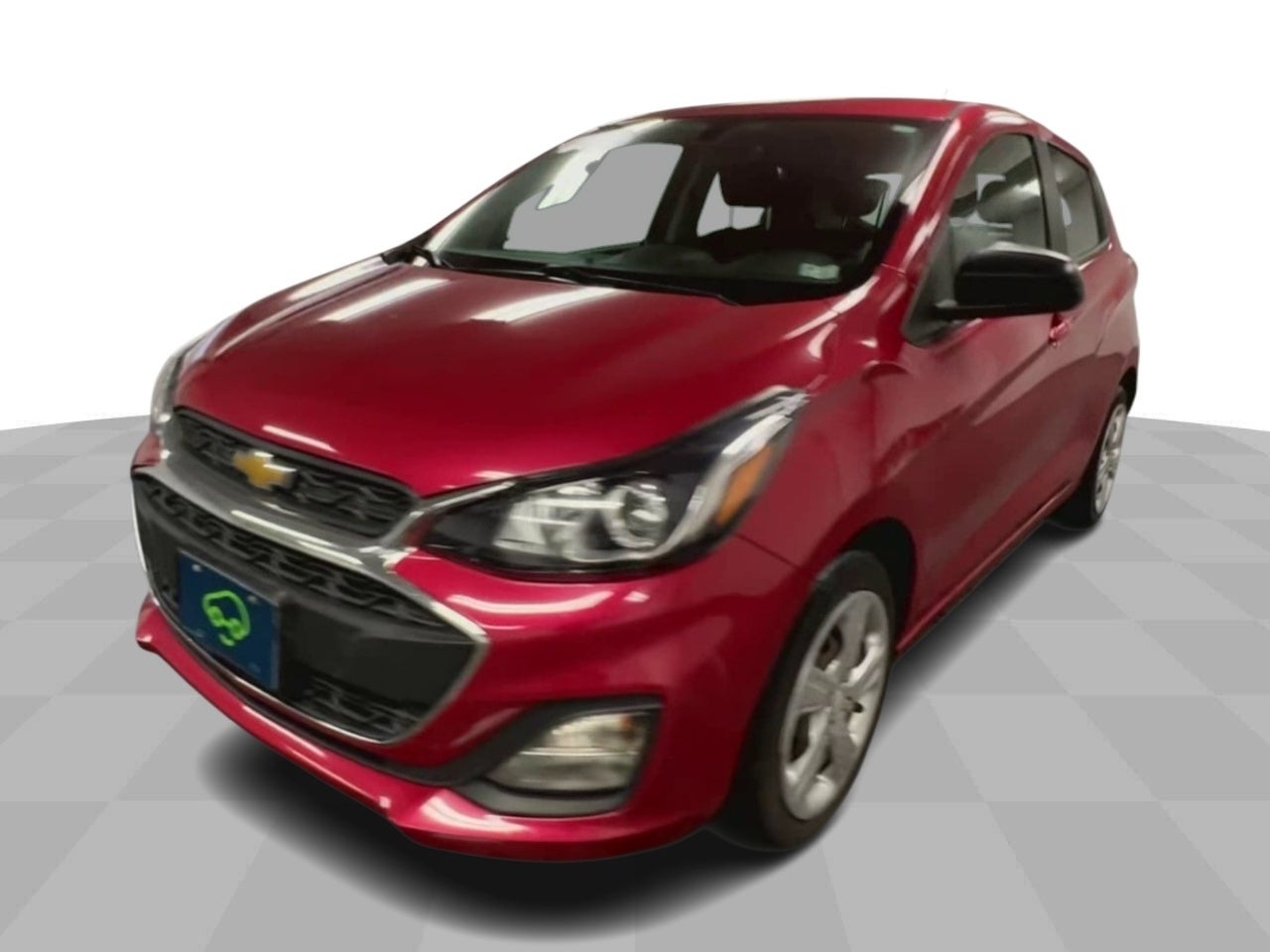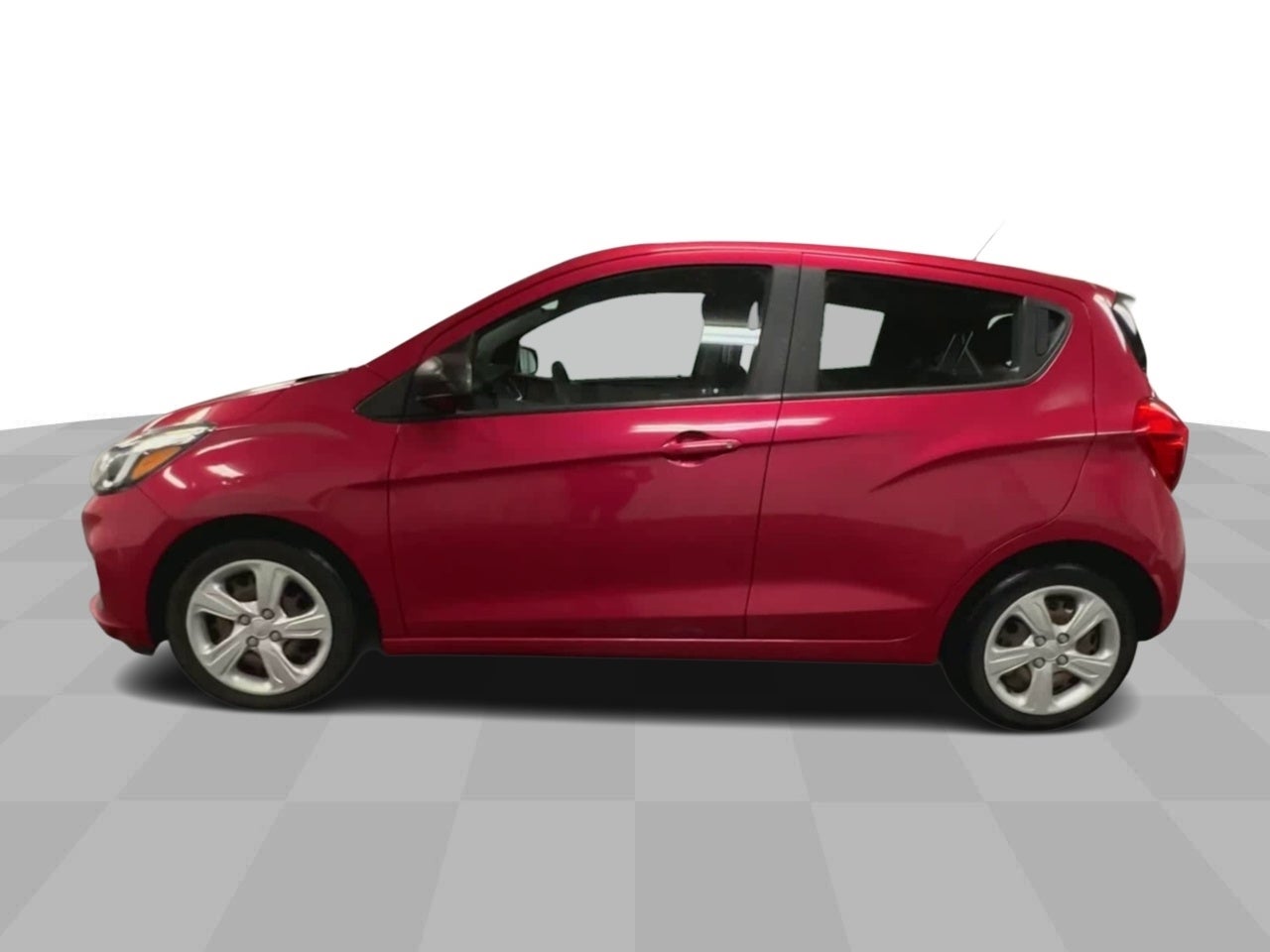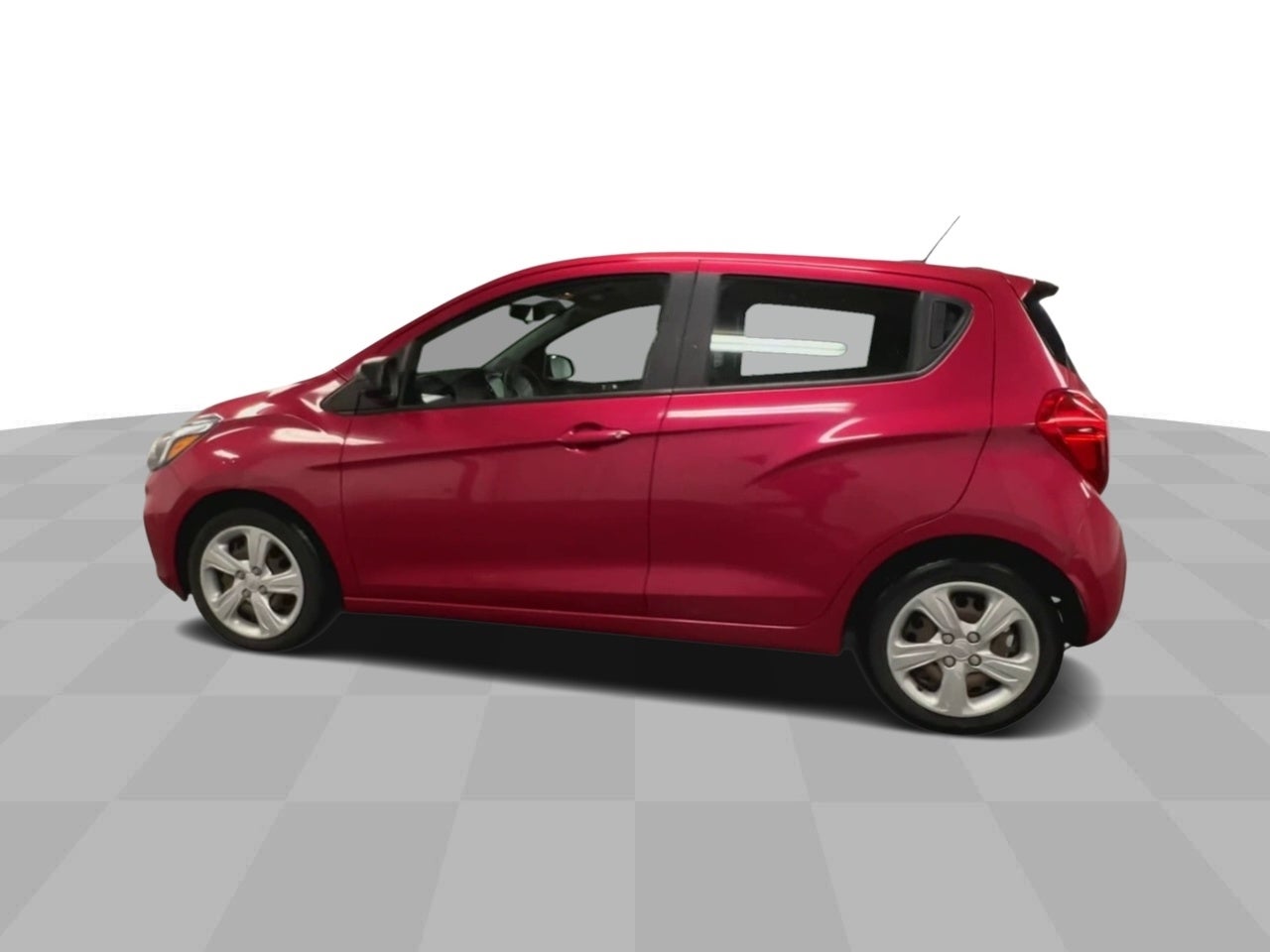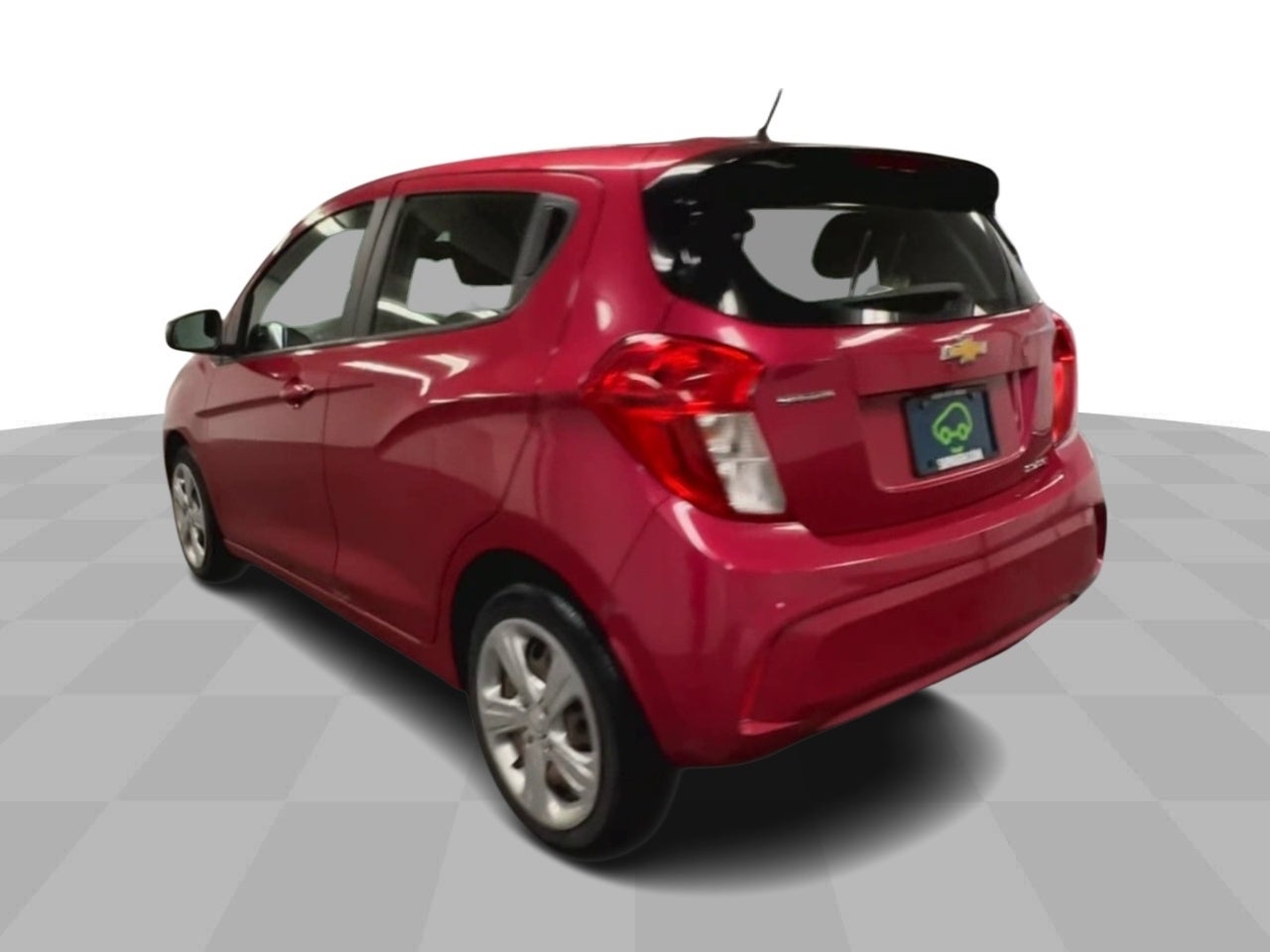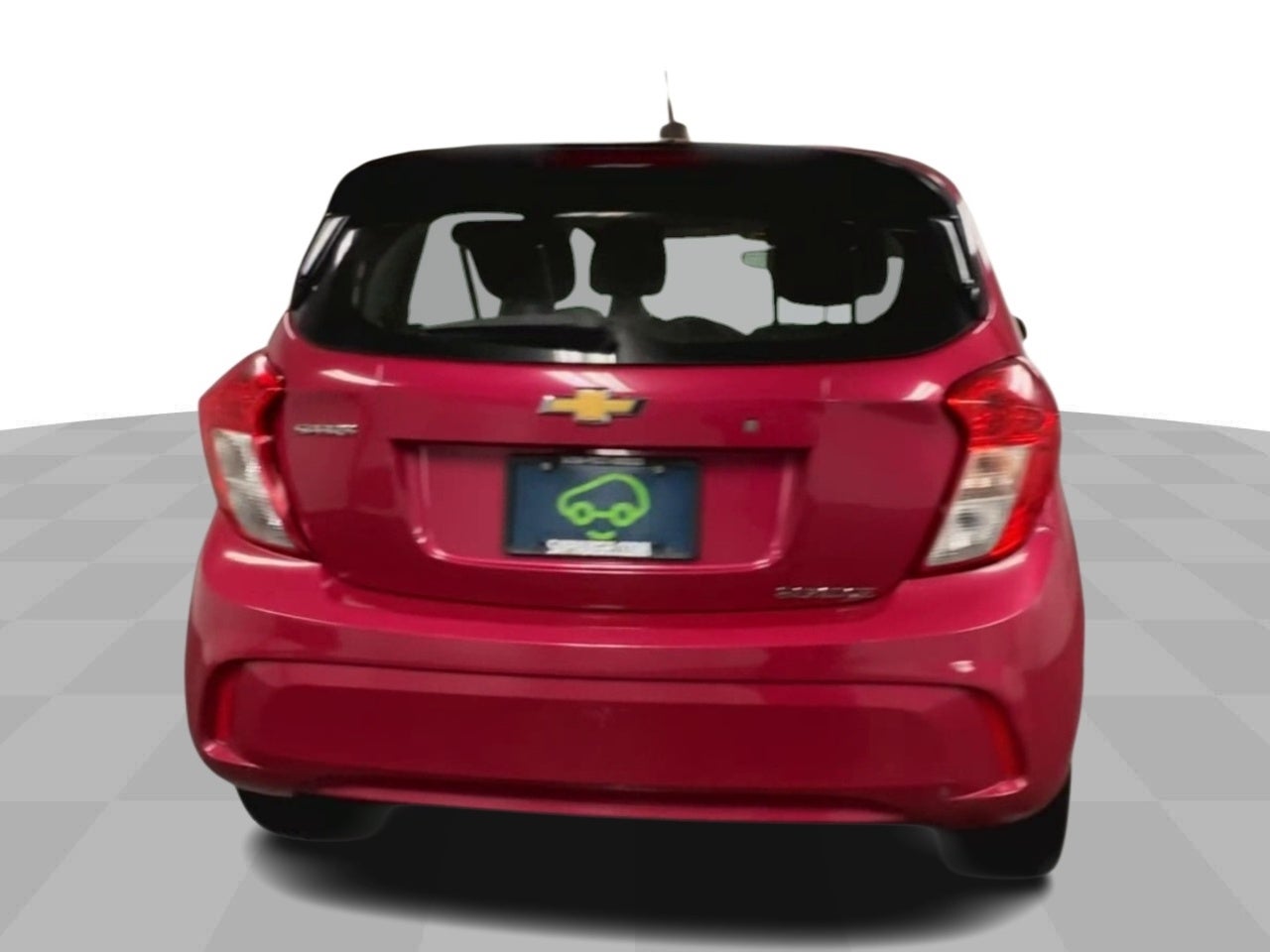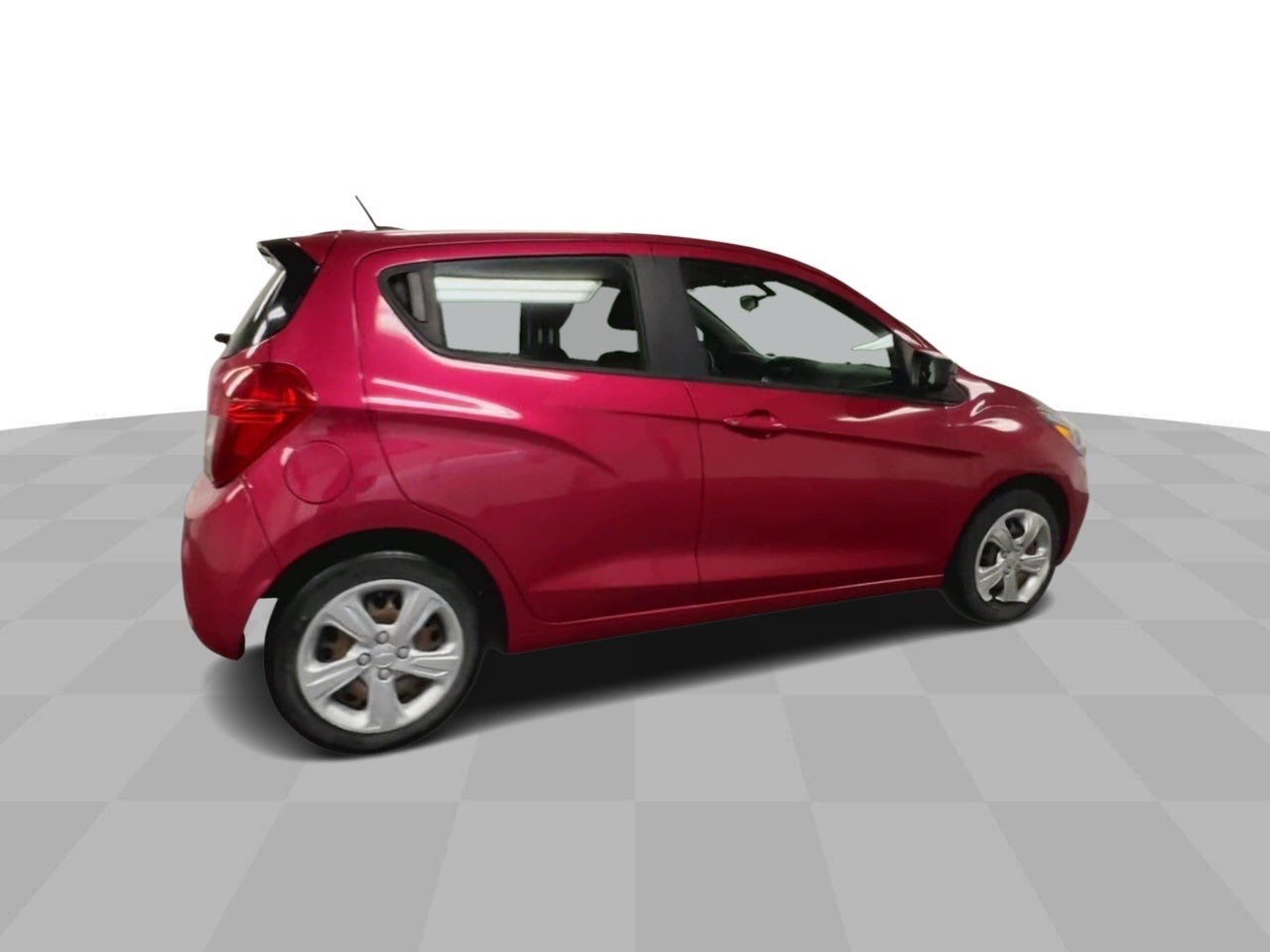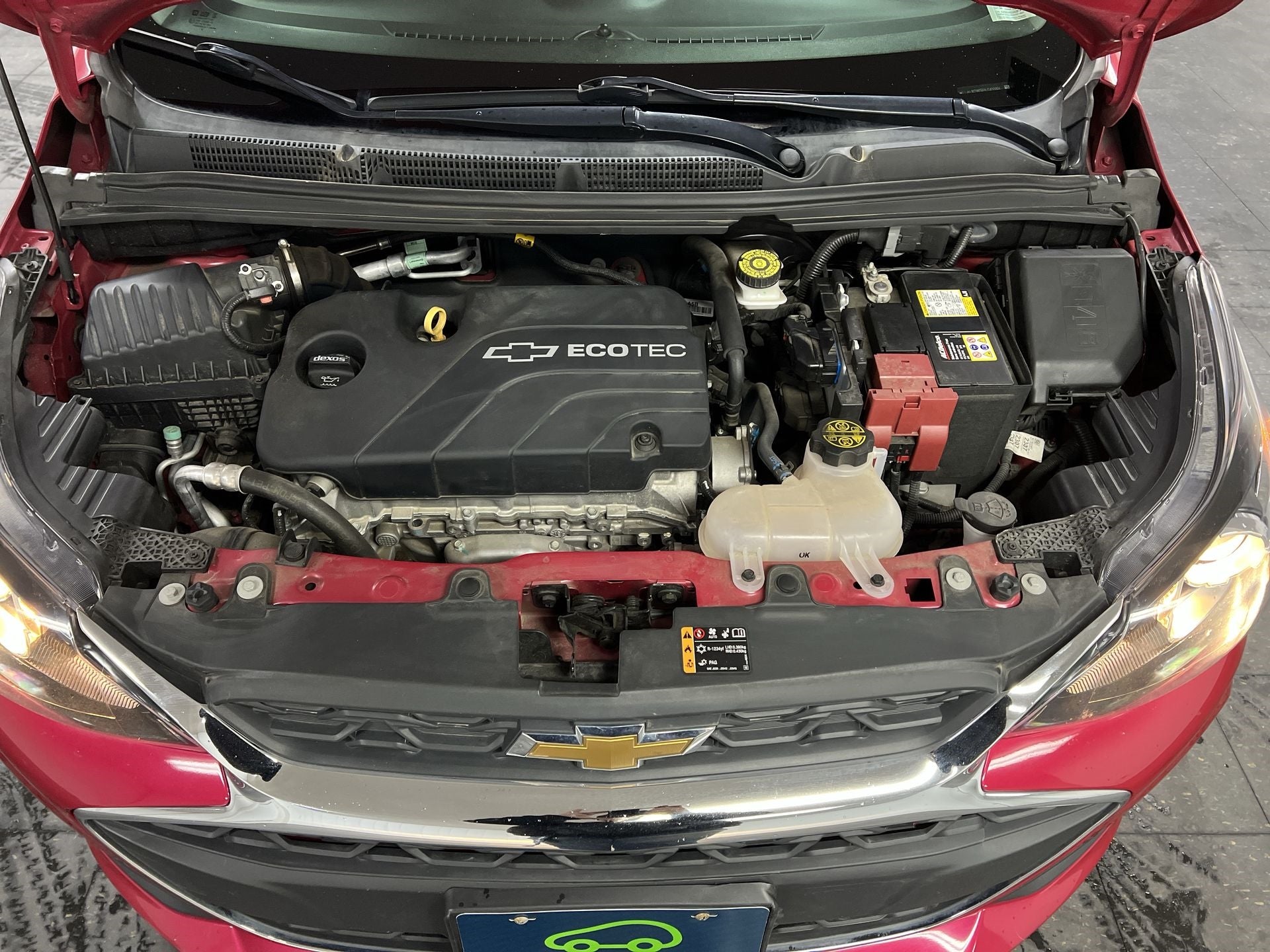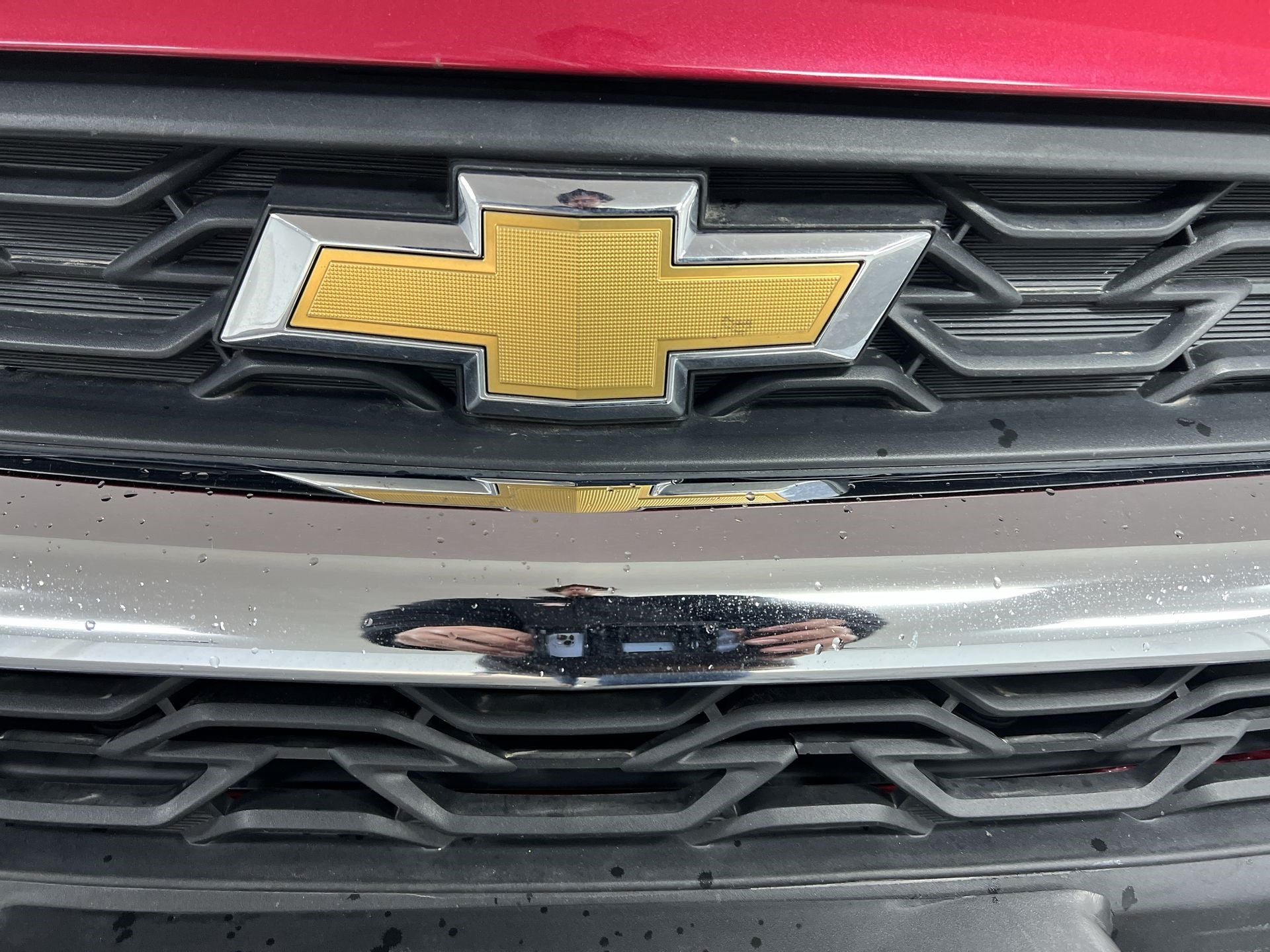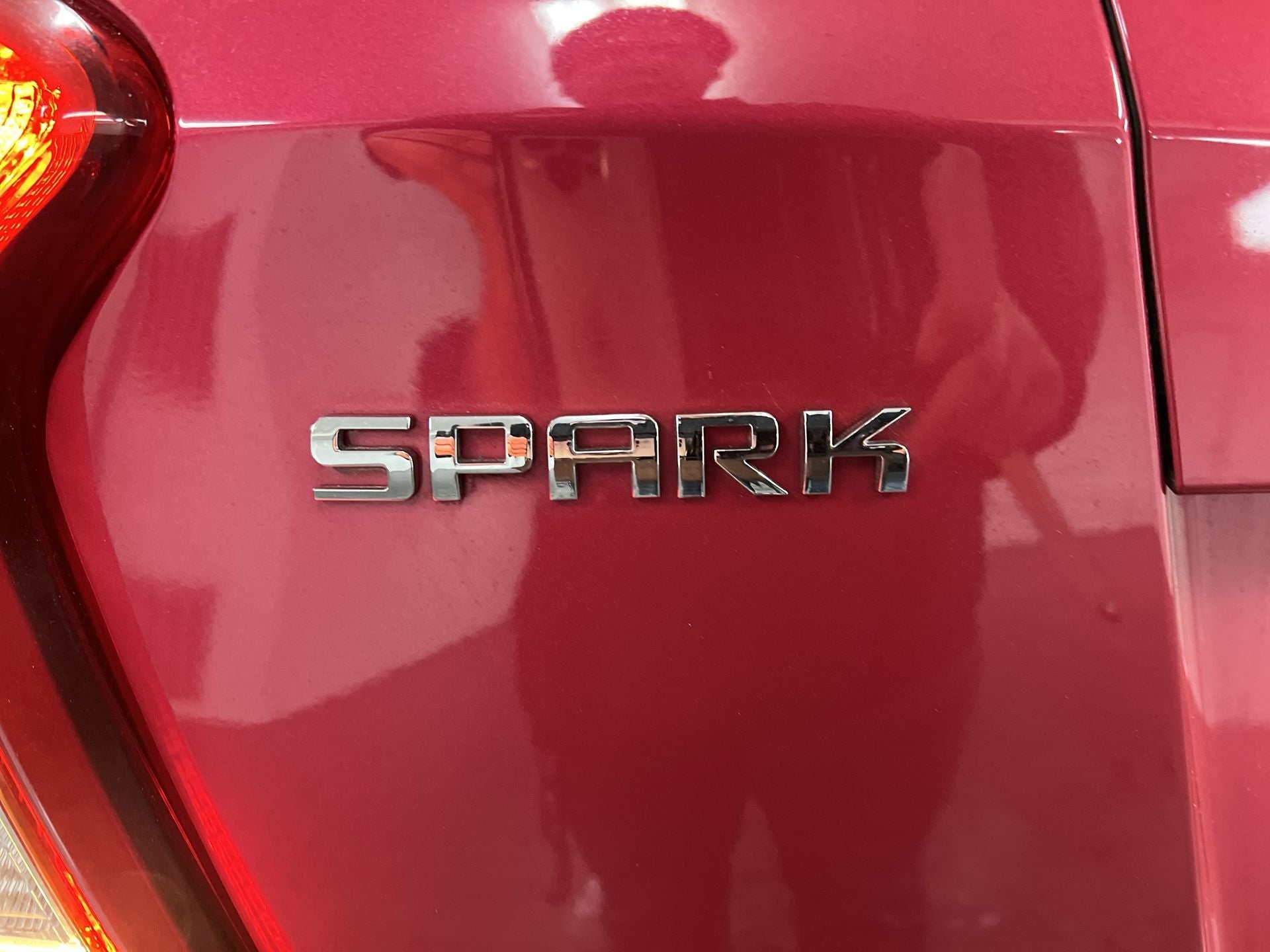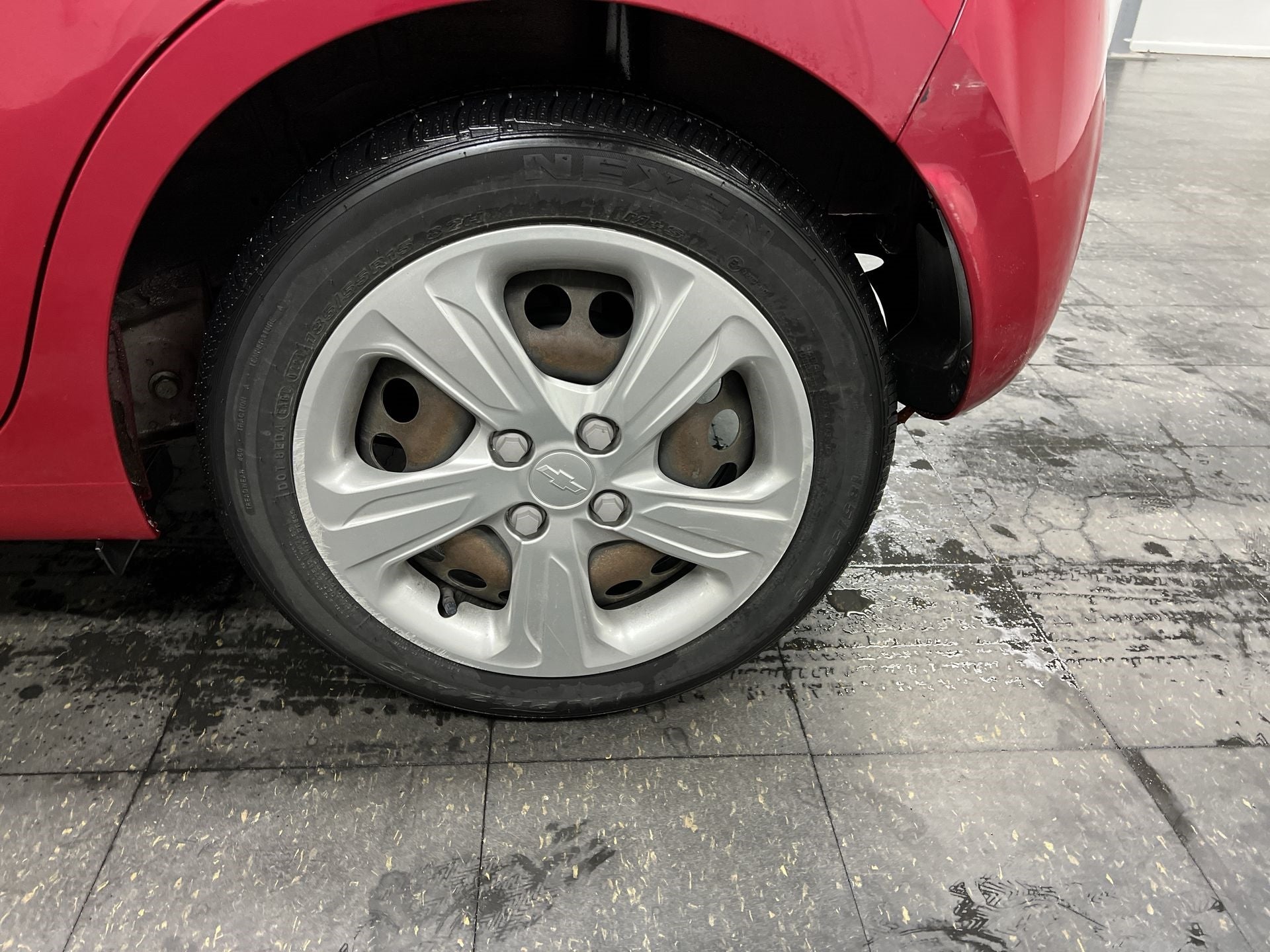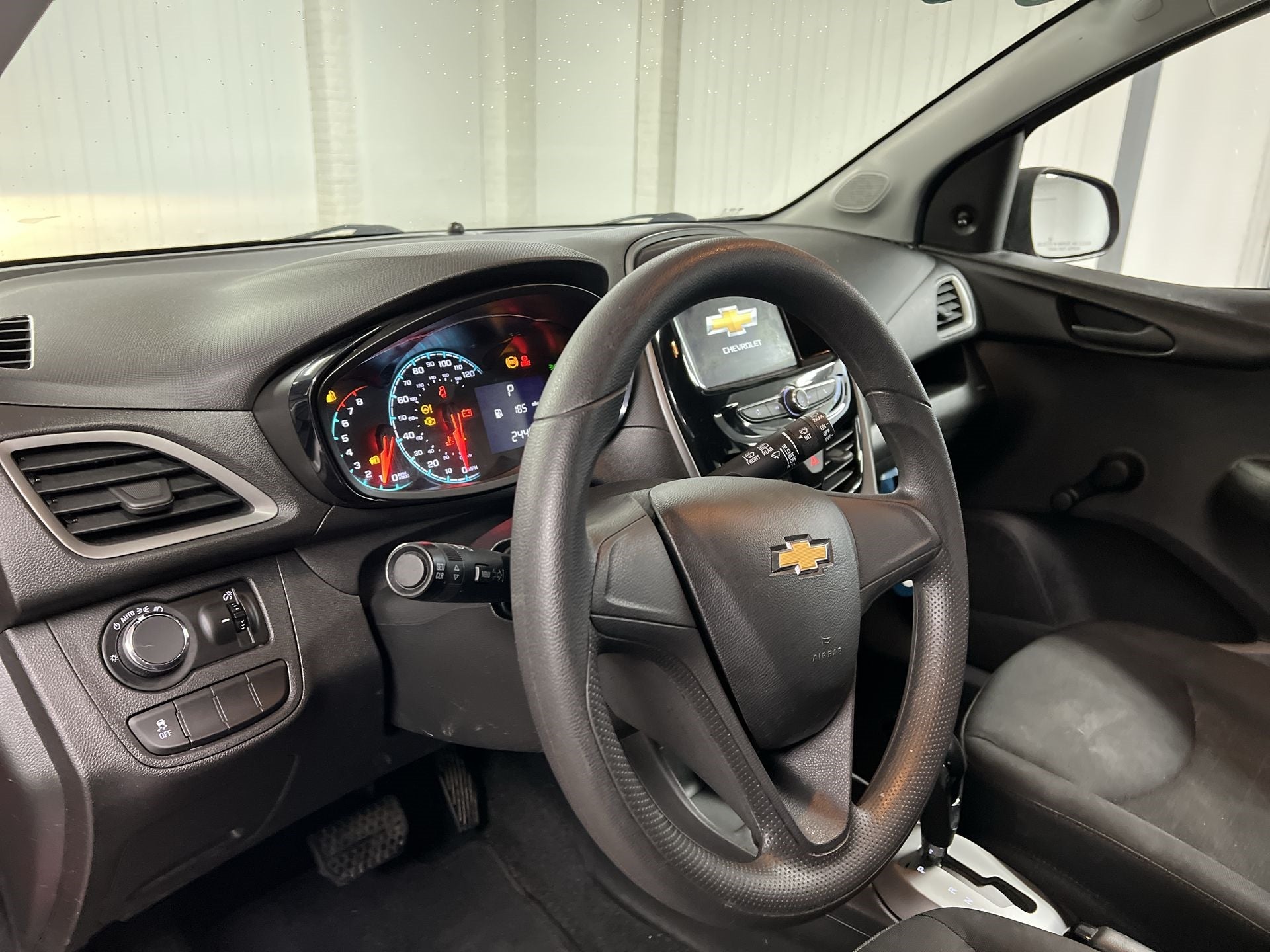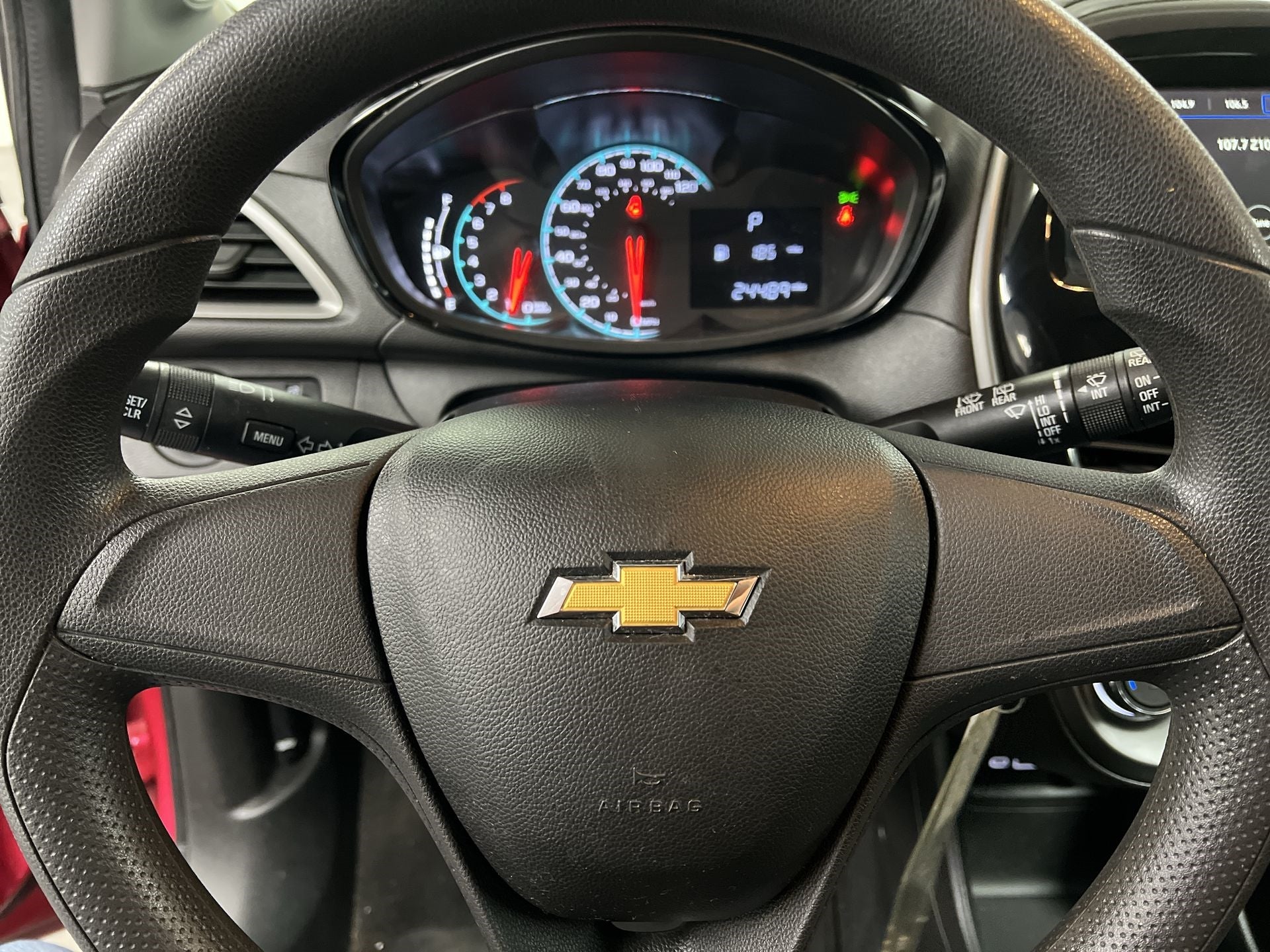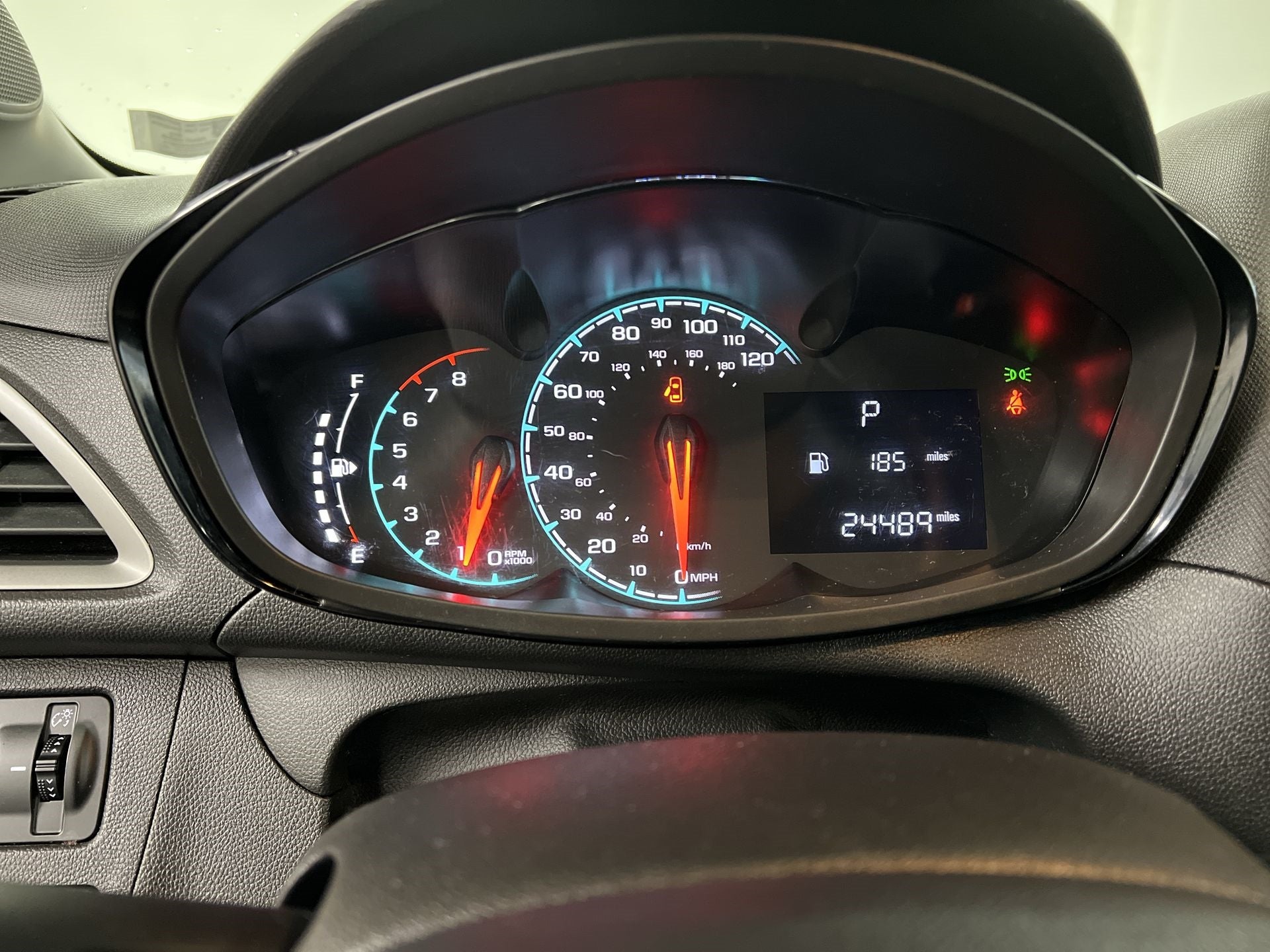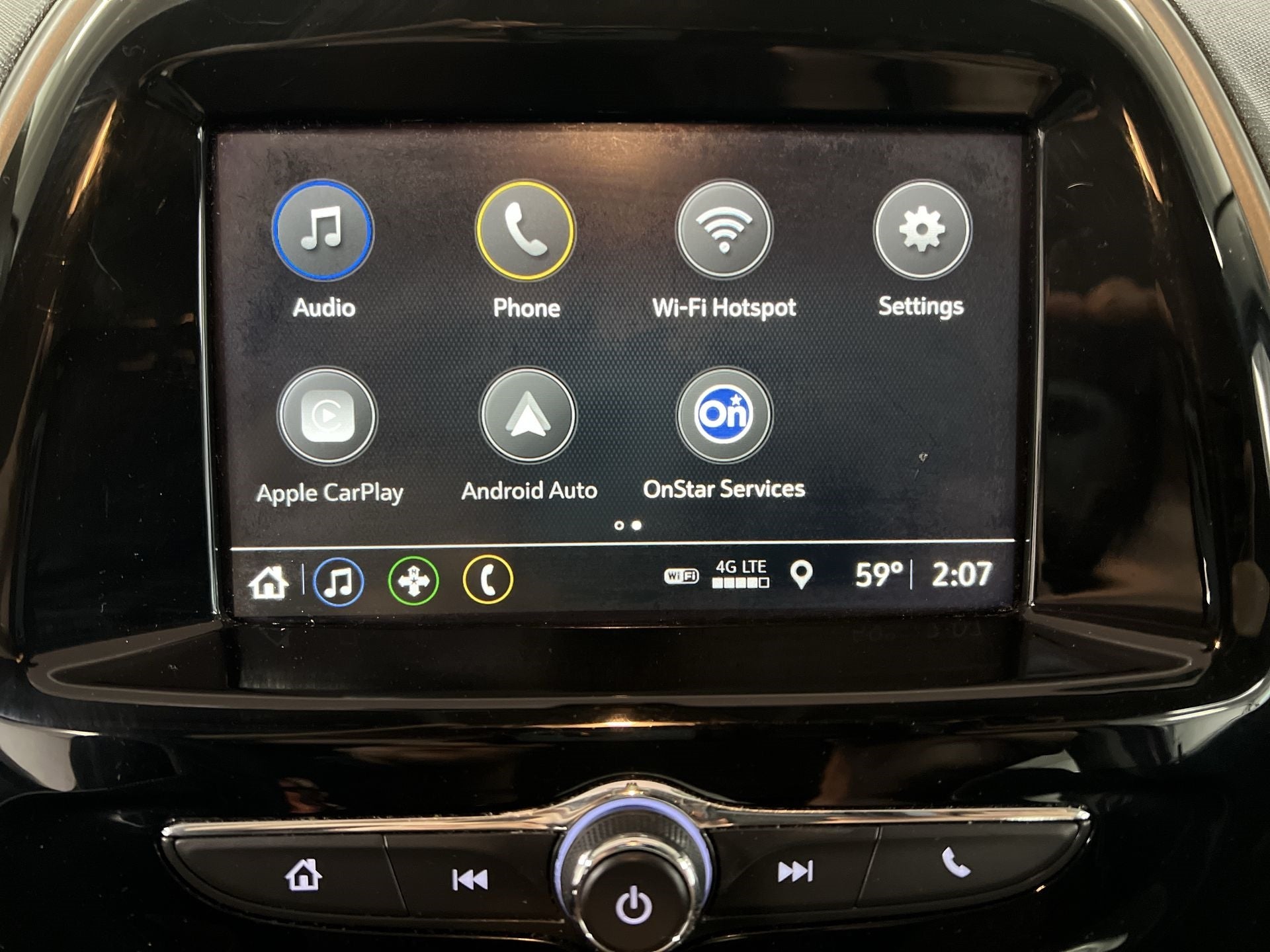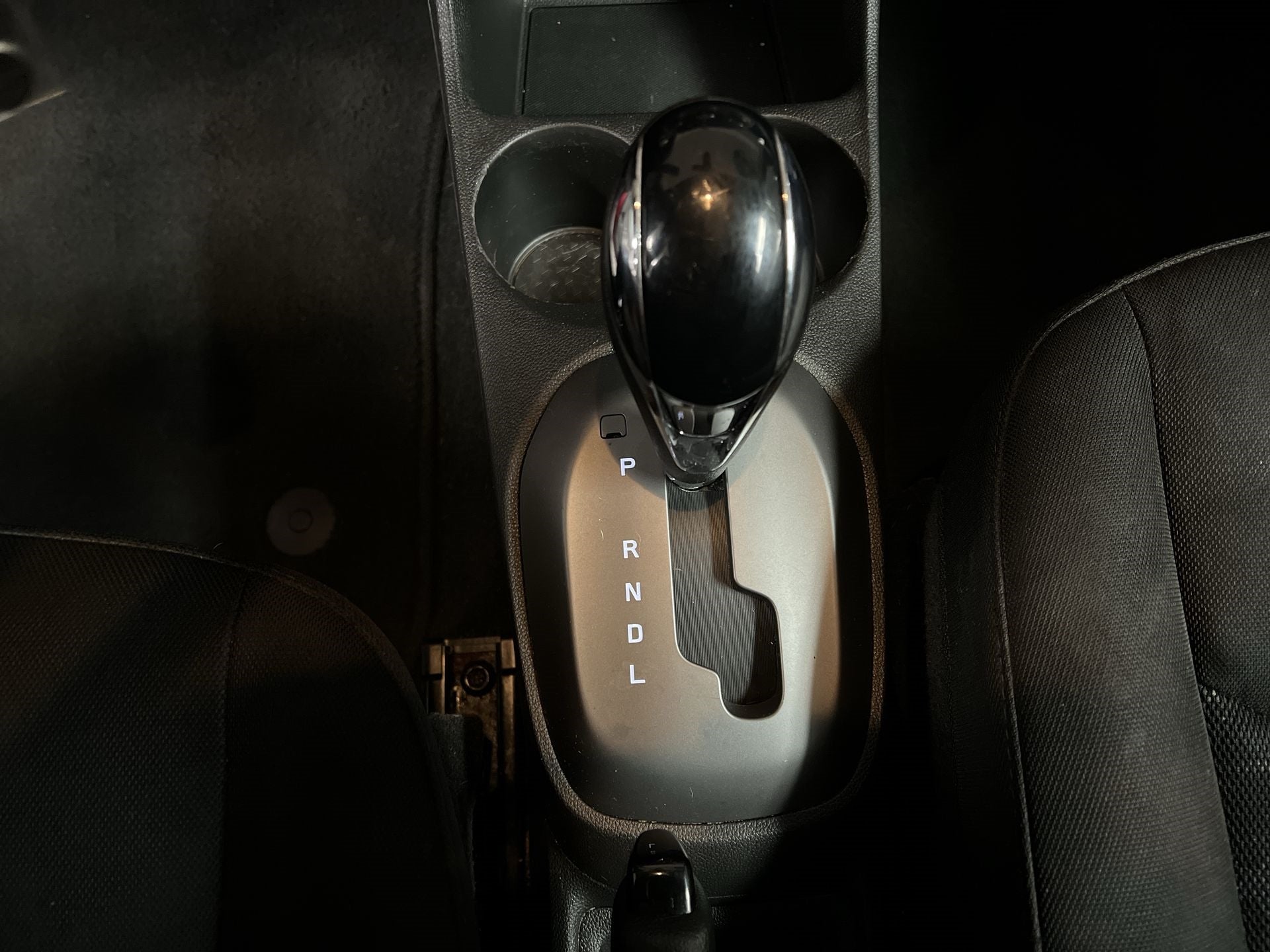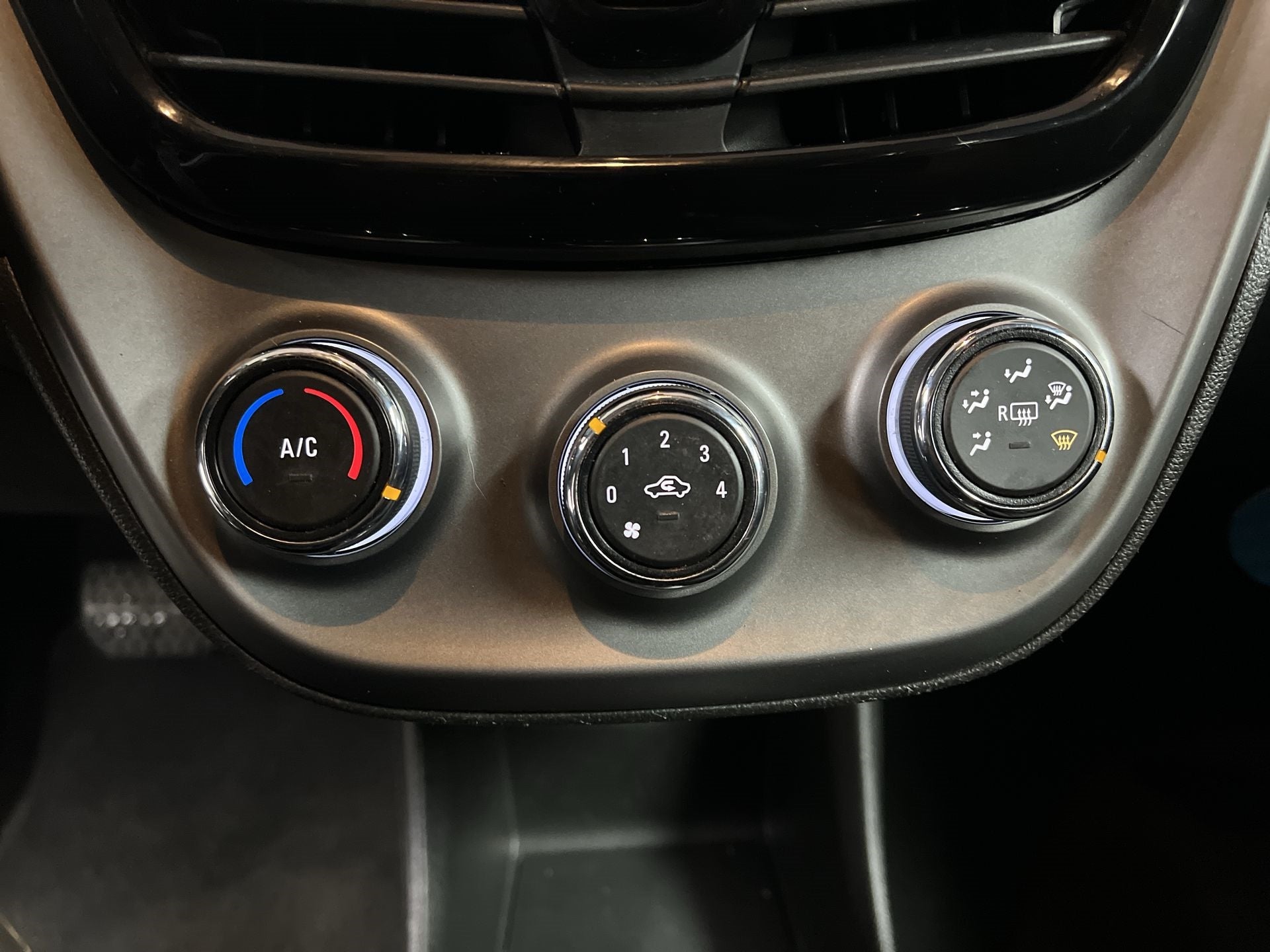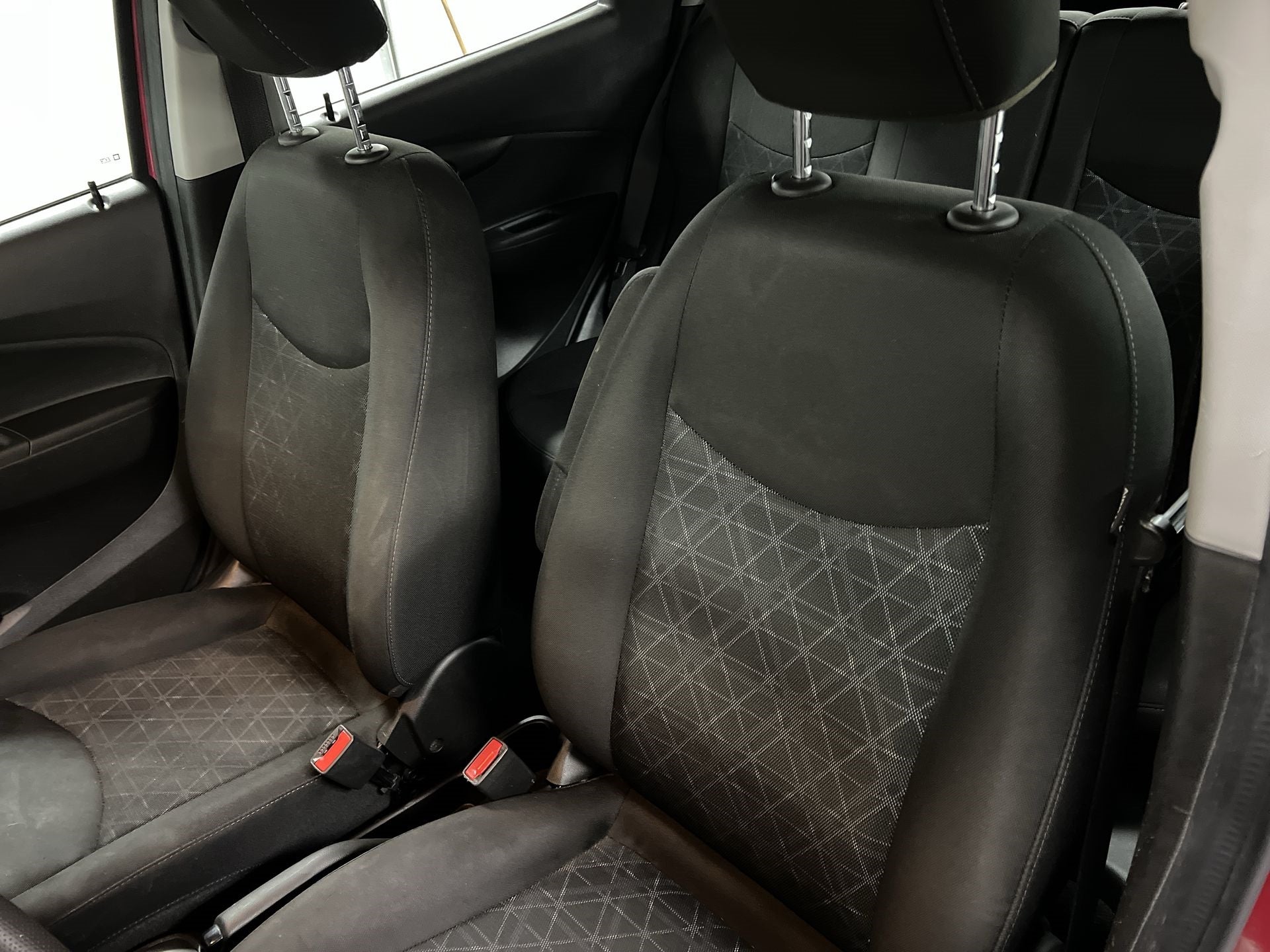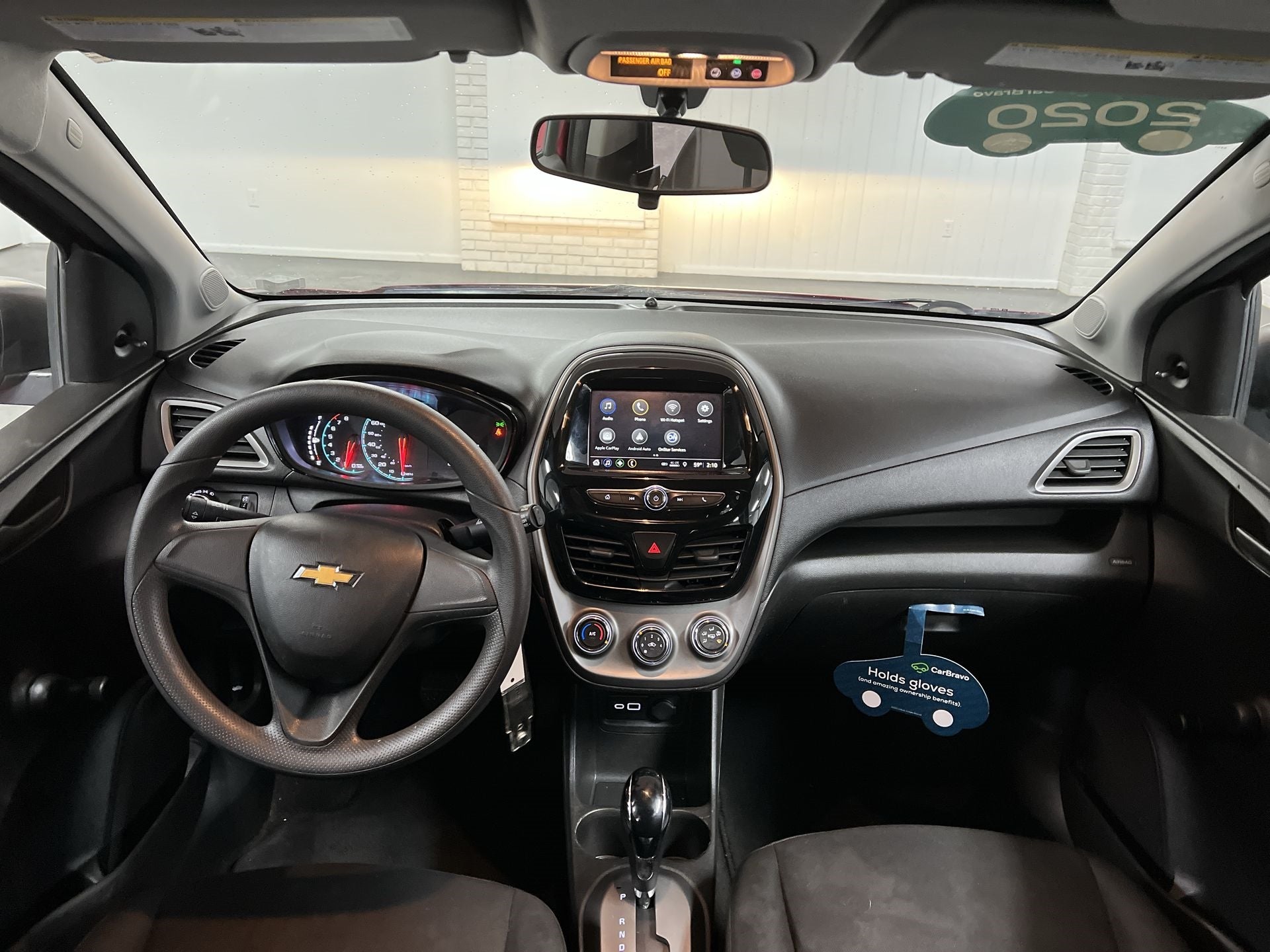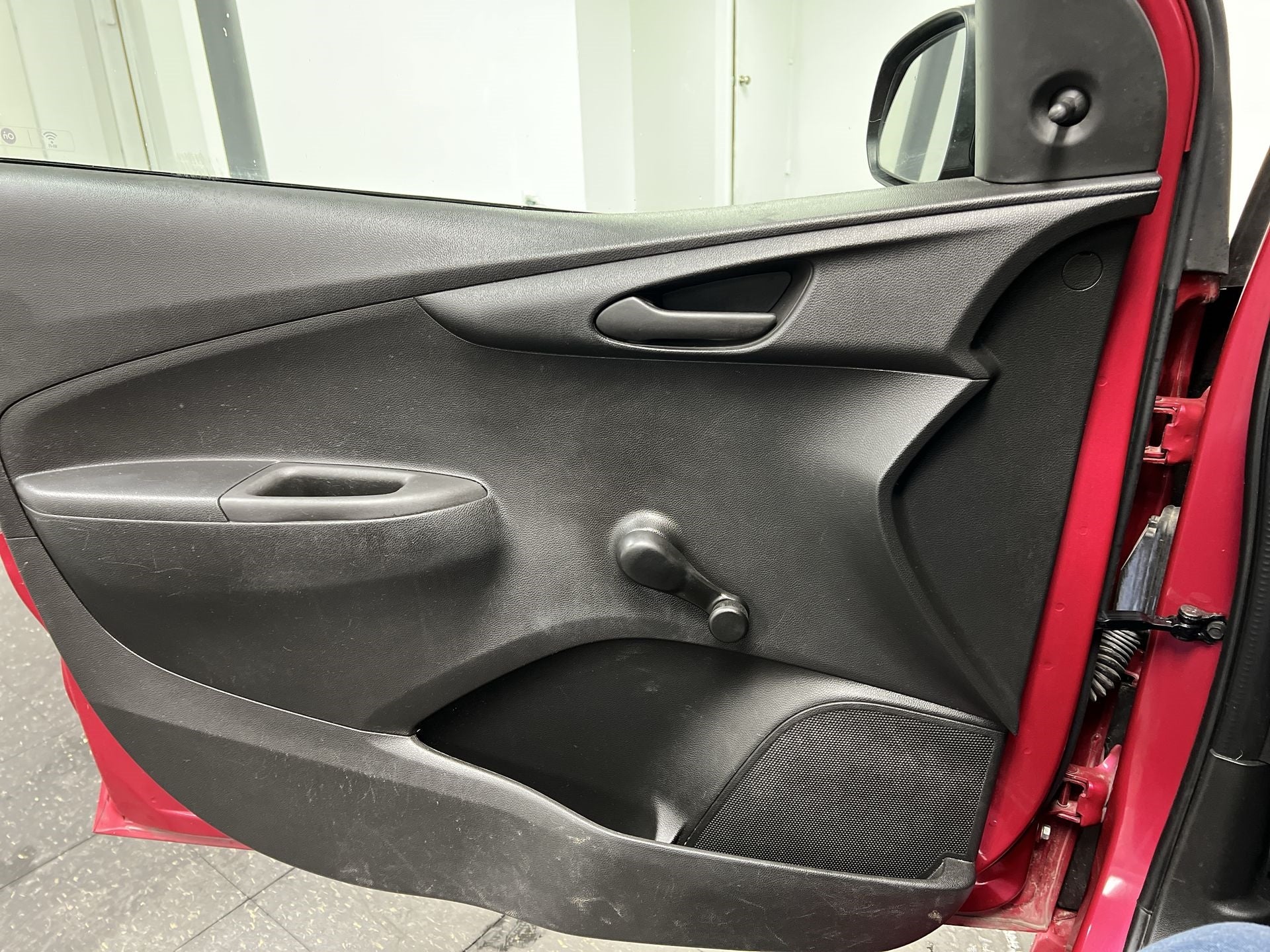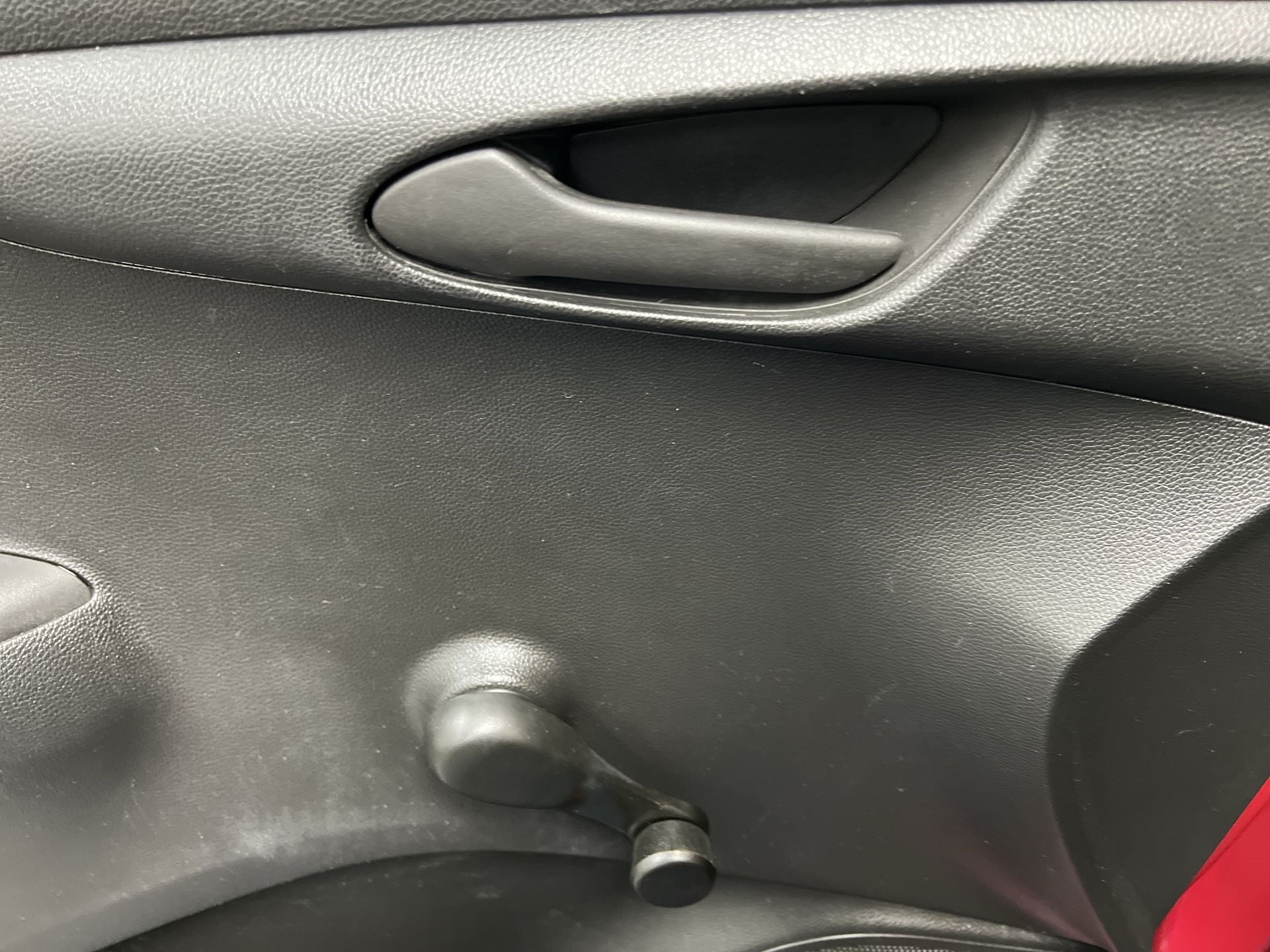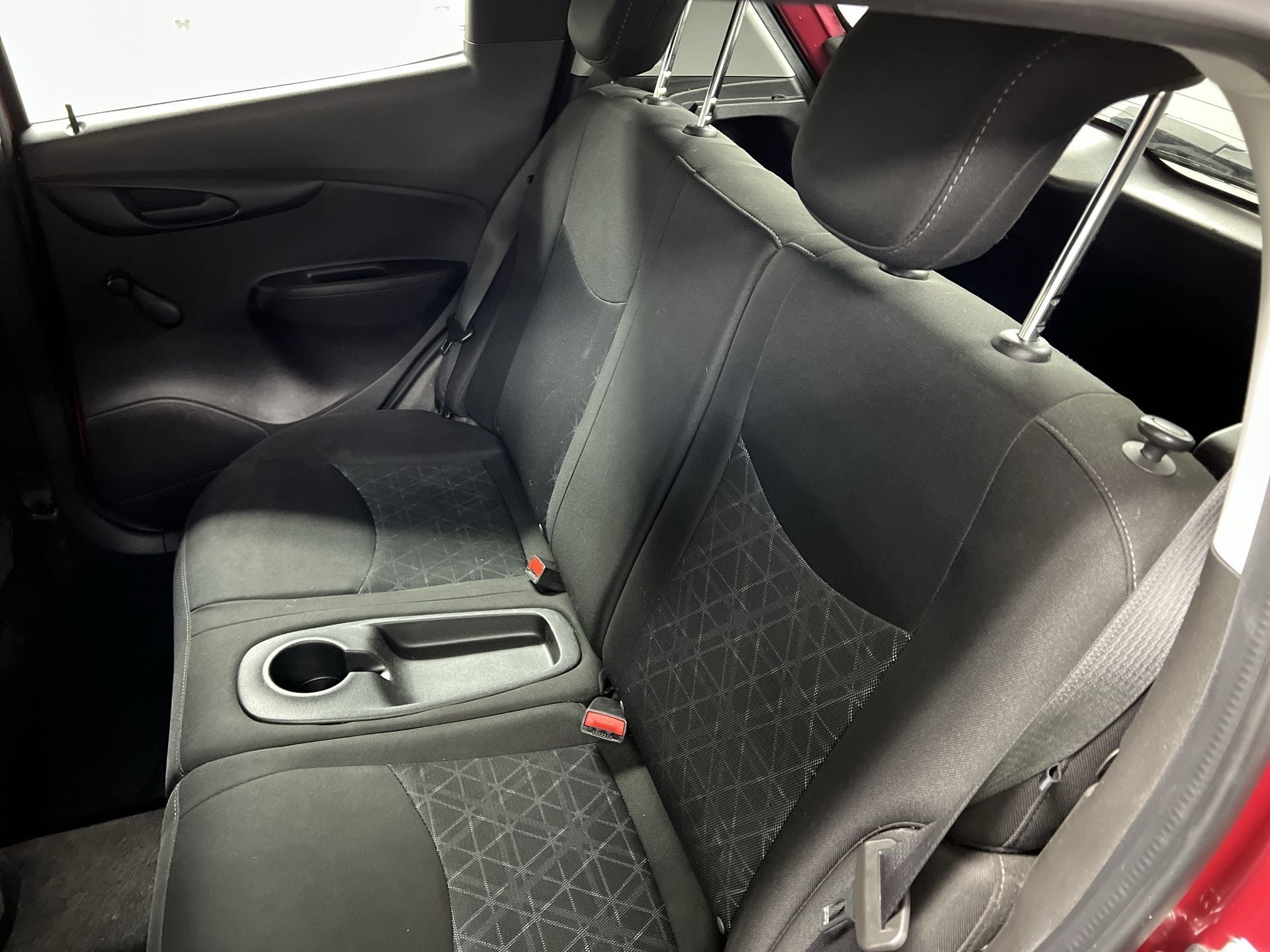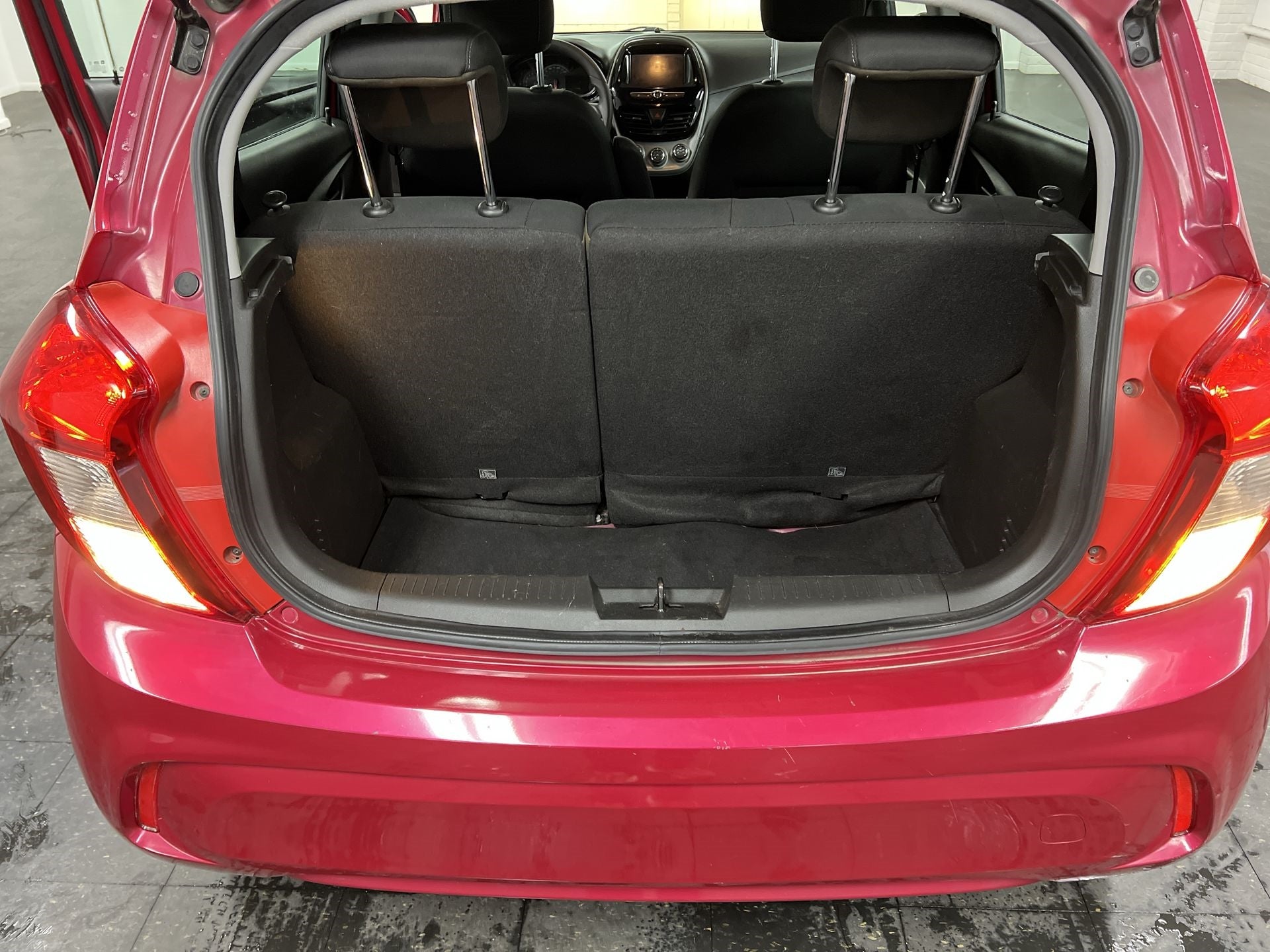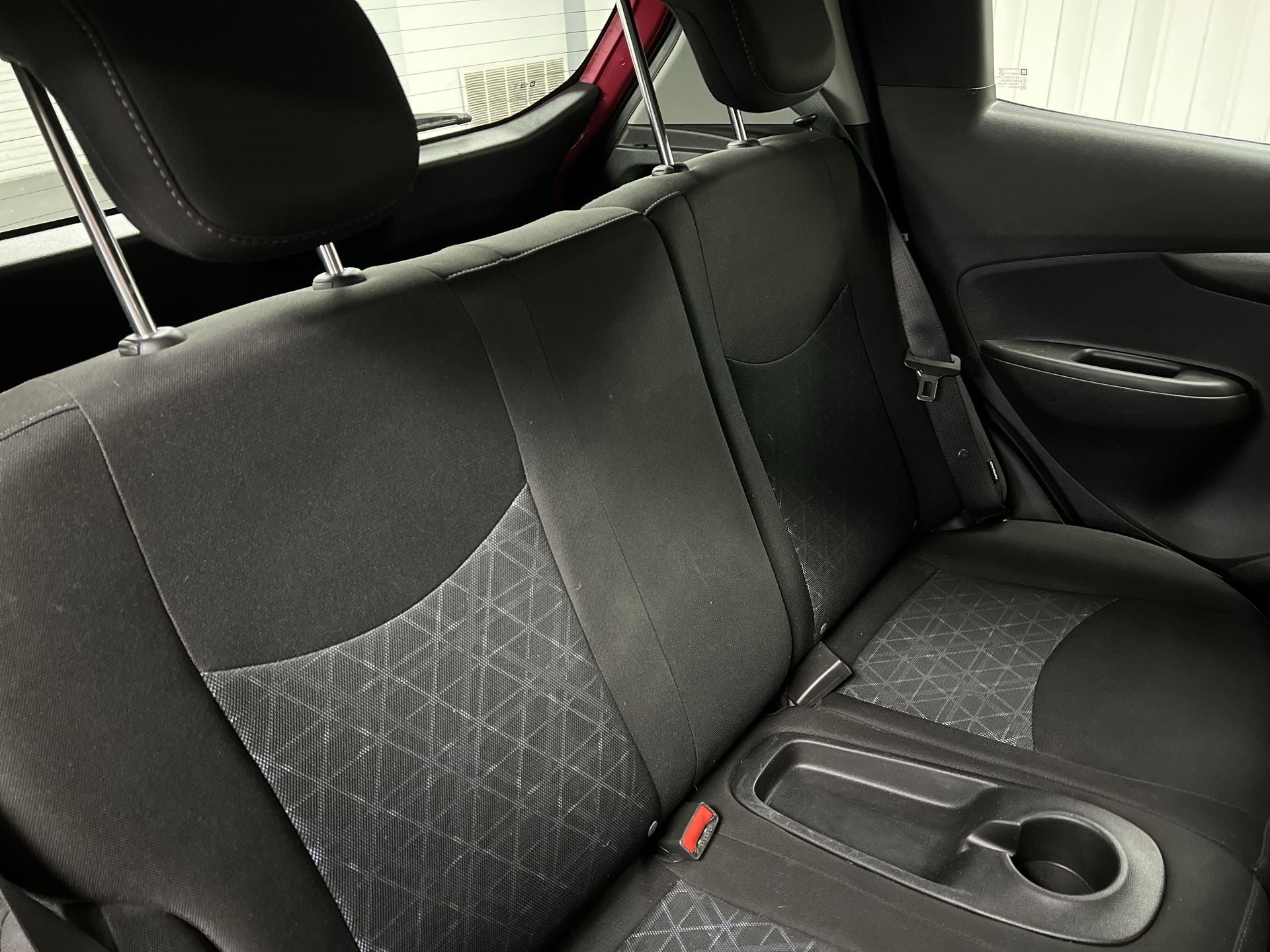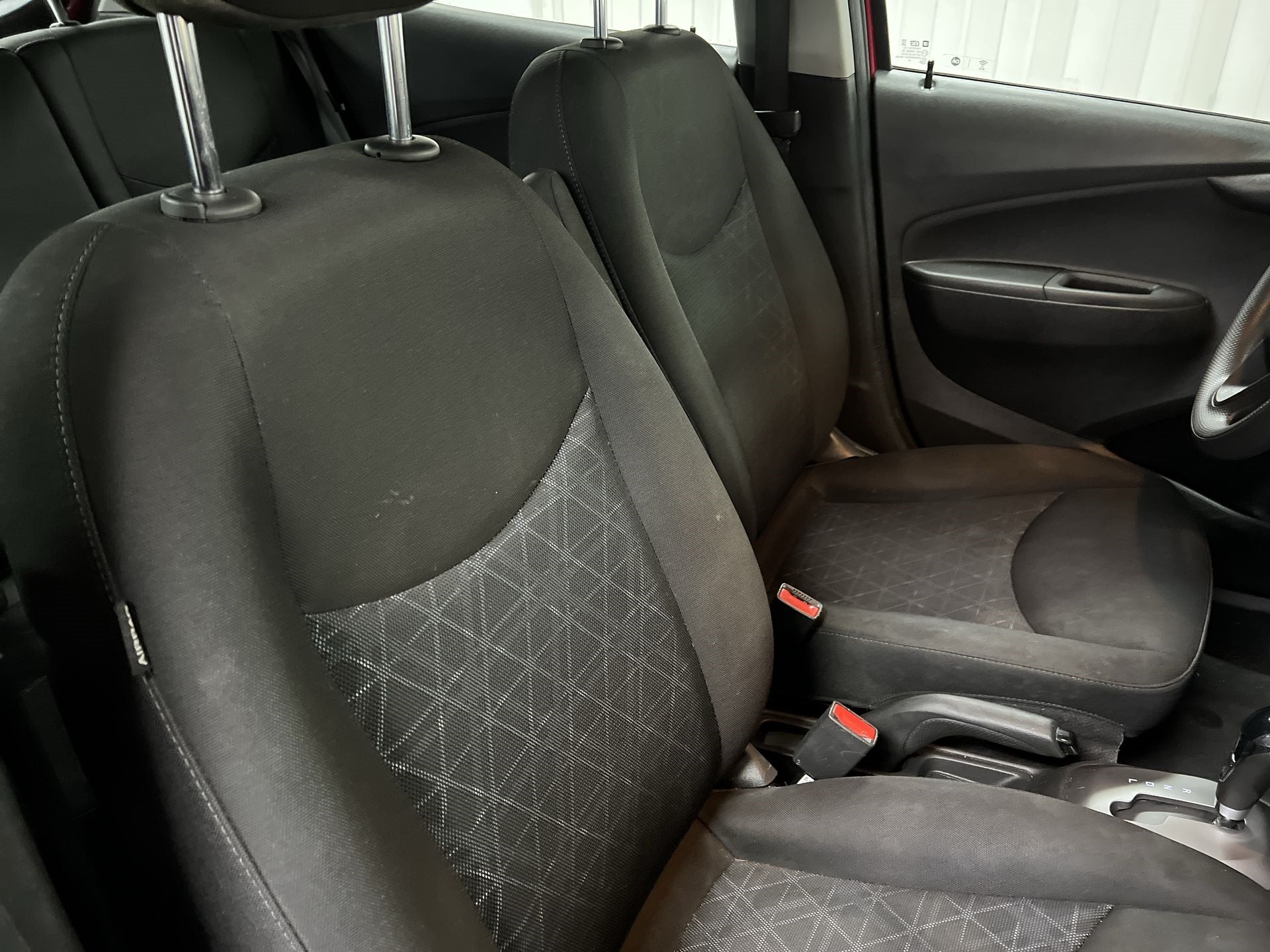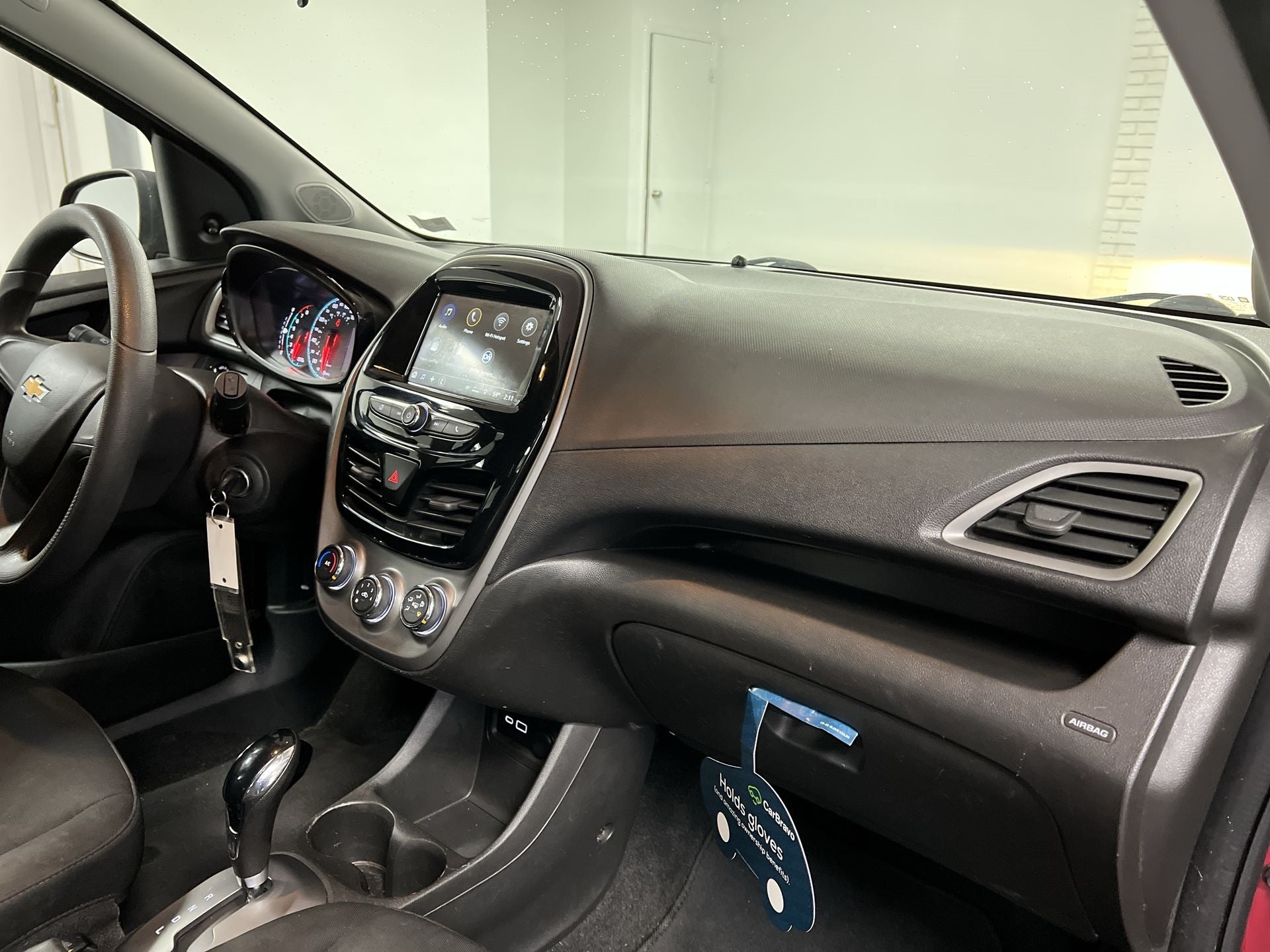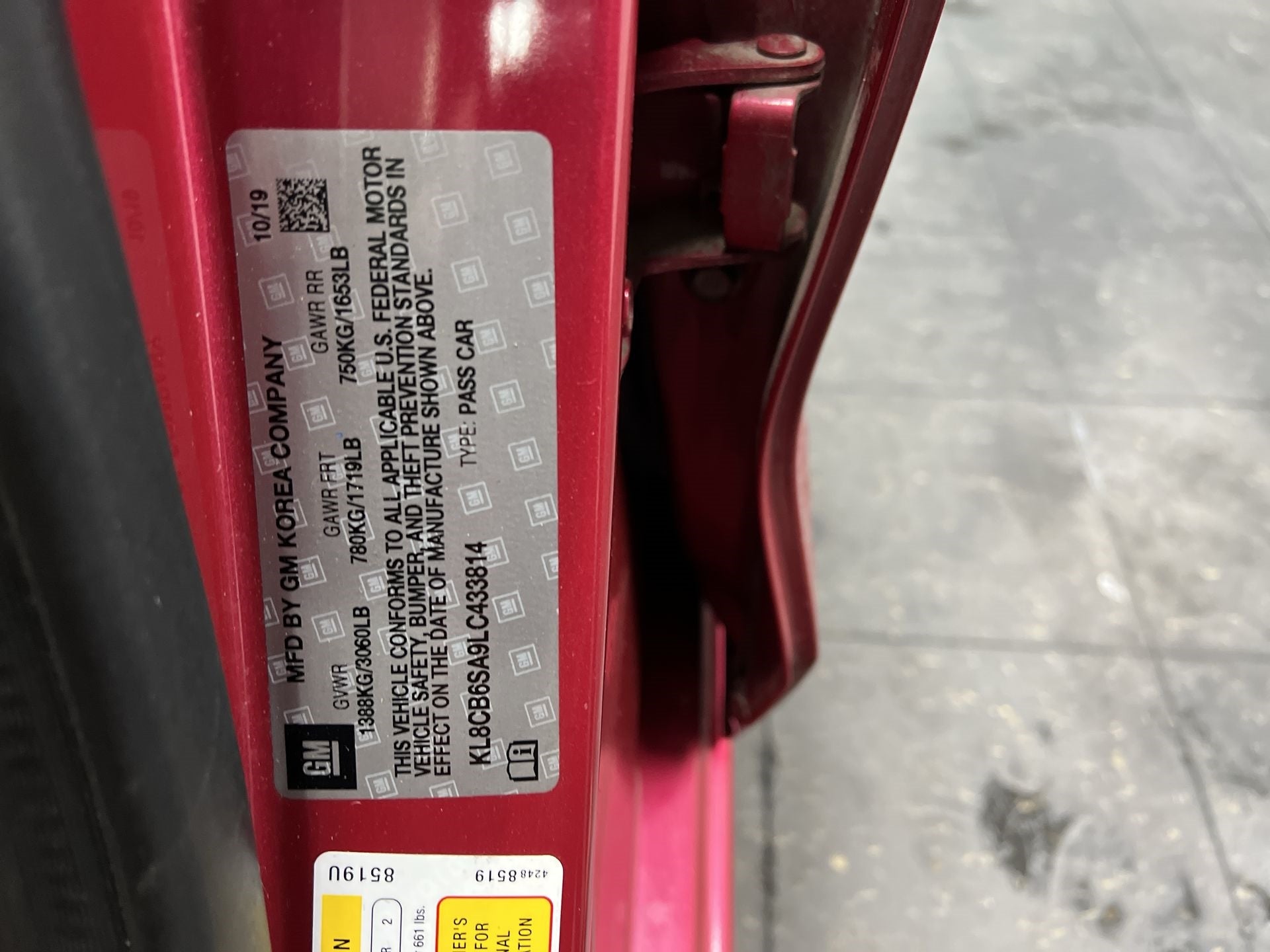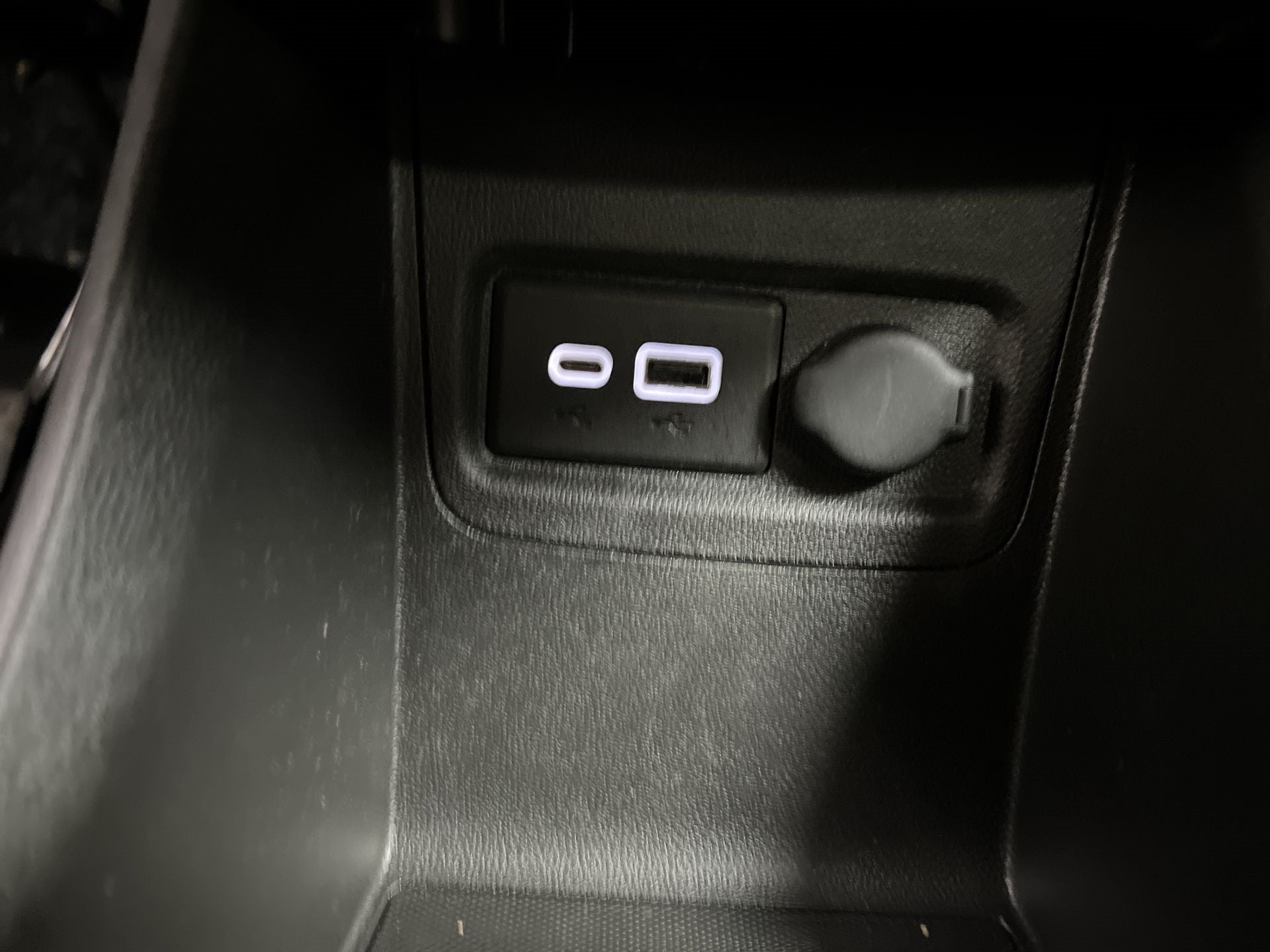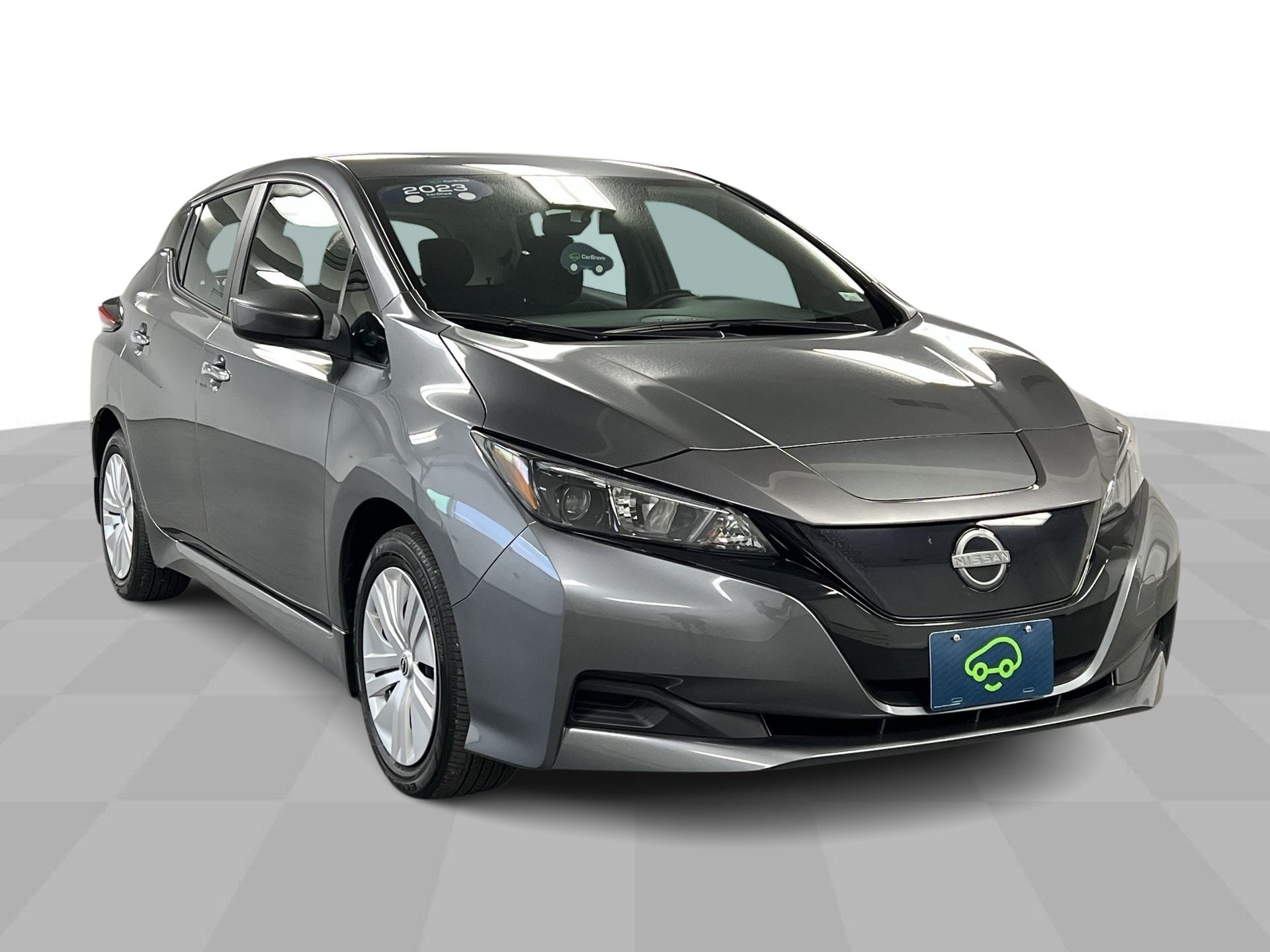2020 Chevrolet Spark LS Automatic
-
$14,716 BEST PRICE
- Retail Price $14,367
-
- +$349
- Internet Price $14,716
-
$14,716 BEST PRICE
- Retail Price $14,367
-
- +$349
- Internet Price $14,716
Visit our Store
- Sapaugh Cadillac
-
1435 Mcnutt Street
Herculaneum, MO 63048
- Sales: 636-465-9505
- Service & Parts: 636-725-0214
Vehicle Information
-
Condition Used
-
 Body Style Hatchback
Body Style Hatchback -
Exterior Color Raspberry
-
Interior Color Jet Black/Jet Black, Cloth Seat Trim
-
Mileage 24,504
-
 City/Highway 30/38 MPG
City/Highway 30/38 MPG -
 Engine 1.4L ECOTEC 4-cylinder engine
Engine 1.4L ECOTEC 4-cylinder engine -
 Transmission Automatic / FWD
Transmission Automatic / FWD
Highlighted Features
- Bluetooth®
- Aux Input
- Emergency Brake Assist
- Navigation System
Dealer Comments
All Features
- Rear head restraint control: 2 rear seat head restraints
- Seating capacity: 4
- Bucket front seats: Separate driver and front passenger seats with individual control are provided.
- Cabin air filter: A system that filters the air before it enters the passenger compartment of the vehicle.
- Carpet front and rear floor mats: Front and rear carpeted floor mats are included.
- Rear seatback upholstery: Carpet rear seatback upholstery
- Cloth seat upholstery: The seating surfaces are covered in cloth.
- Front seatback upholstery: Cloth front seatback upholstery
- Headliner material: Cloth headliner material
- Cloth rear seat upholstery: The seating surfaces are covered in cloth.
- Door panel insert: Colored door panel insert
- Panel insert: Colored instrument panel insert
- Driver front seat armrest: An individual moveable armrest is provided for the driver's right arm.
- Manual reclining driver seat: The seatback angle is manually adjustable.
- 6-way driver seat: The seat provides a variety of adjustments to enhance seating comfort.
- Rear seats fixed or removable: Fixed rear seats
- Flip forward cushion/seatback rear seat: The seat cushion flips forward allowing the seatback to be folded forward.
- Passenger seat direction: Front passenger seat with 4-way directional controls
- Full floor coverage: The entire passenger compartment floor is covered with flooring material.
- Full floor coverage: The entire passenger compartment floor is covered with flooring material.
- Headliner coverage: Full headliner coverage
- Height adjustable front seat head restraints: The head restraint(s) can be adjusted up or down.
- Height adjustable rear seat head restraints: The head restraint(s) can be adjusted up or down.
- Lightly tinted windows: The vehicle's glass is lightly tinted.
- Manual air conditioning: The air conditioning requires manual selection of operation mode, temperature and fan speed.
- Front head restraint control: Manual front seat head restraint control
- Rear head restraint control: Manual rear seat head restraint control
- Manual tilt steering wheel: The angle of the steering wheel is adjustable manually.
- Gearshifter material: Metal-look gear shifter material
- Interior accents: Metal-look interior accents
- Manual reclining passenger seat: The seatback angle is manually adjustable.
- Split-bench rear seat: The rear bench cushion is split in half allowing one side to be folded independently of the other.
- Steering wheel material: Urethane steering wheel
- Manual air conditioning: The air conditioning requires manual selection of operation mode, temperature and fan speed.
- 12V power outlet: A single 12-volt DC power outlet is provided.
- 1 seatback storage pocket: A seatback storage pocket is provided.
- Number of beverage holders: 4 beverage holders
- Console storage: Additional console storage
- Battery charge warning: A message, or specific light illuminates to indicate the vehicle's charging system is not producing acceptable levels.
- Bulb warning: Bulb failure warning
- Cargo space concealed storage: A covered storage space is provided in the cargo area of the vehicle.
- Cargo light: A light provides illumination in the cargo area.
- Carpeted cargo space floor trim: The cargo area floor is covered with carpet.
- Console attached to seat: A storage console is attached to the seat.
- Passenger doors rear left: Conventional left rear passenger door
- Passenger doors rear right: Conventional right rear passenger door
- Day-night rear view mirror: An interior, rear-view mirror that has a manually operated switch that adjusts the mirror slightly, up or down, to reduce glare from traffic at night.
- Passenger door bin: The inner door panel has an integrated storage bin.
- Driver foot rest: The driver's foot rest, or dead pedal, is located on the left side of the driver's footwell.
- Driver information center: A driver information center is a display screen that provides the driver with vehicle information and/or warnings in graphical and/or textual form.
- Driver vanity mirror: The visor has a mirror incorporated into its design.
- Exterior temp display: Displays the temperature of the ambient air outside the vehicle.
- Fixed interval rear wiper: A fixed interval rear wiper has a setting for non-adjustable, delayed wiping.
- Rear windshield: Fixed rear windshield
- Floor console storage: The floor console offers convenient storage space.
- Front beverage holder(s): An area is provided to securely hold beverages.
- Full floor console: A full floor console separates the front seating areas and divides the footwell.
- Heated rear wiper park: A heating element is embedded in the glass at the position where the wipers rest when not in use.
- Clock: In-radio display clock
- Liftgate rear cargo door: Access to the cargo area is gained via a large rear door that opens upwards. This door may also contain the rear windshield of the vehicle.
- Low fuel warning: A message, or specific light illuminates to indicate the vehicle will run out of fuel soon, and refilling the tank is required.
- Door locks: Manual door locks
- Manual first-row side windows: The first-row of glass on the side of the vehicle can be raised and lowered manually by hand crank.
- Manually folding passenger side door mirror: Manually folding exterior mirrors can pivot on a joint to bring the mirror housing closer to the vehicle body.
- Mechanical fuel filler door release: A remote release opens the fuel filler flap through mechanical linkage, with the lever located in the passenger compartment.
- Door mirrors: Manual remote door mirrors
- Manual second-row side windows: The second-row of glass on the side of the vehicle can retract into the body manually by hand crank.
- Mini overhead console: A short console, mounted to the headliner of the vehicle, that may contain several useful features such as map lights and storage.
- Oil pressure warning
- Passenger vanity mirror: The visor has a mirror incorporated into its design.
- Plastic trunk lid trim: The inside of the trunk lid or cargo access door(s) is covered with plastic.
- Rear beverage holder(s): An area is provided to securely hold beverages.
- Trunk/liftgate ajar warning: A message, or specific light illuminates to indicate the rear cargo door/trunk/hatch or middle gate is open.
- Rear window defroster: Heating elements on the rear windshield.
- Rigid cargo cover: A cargo cover provides an added measure of security for personal property stored in the cargo area.
- Service interval indicator: A message, or specific light illuminates to indicate the vehicle needs to be taken in for routine servicing (oil change).
- Glove box: Standard glove box
- Sun visor strip: A sun visor strip is a band of deep tint across the top portion of the front windshield.
- Tachometer
- Trip computer: A trip computer calculates and can display any, or all of the following functions: current fuel consumption, average speed, distance traveled, elapsed time, distance to empty and remaining fuel.
- Trip odometer: A trip odometer counts the miles or kilometers the vehicle travels and can be reset by the driver.
- Variable IP lighting: The intensity of the instrument panel lighting can be adjusted manually.
- Variable intermittent front windshield wipers: The vehicle's front wiper system has low and high speeds, as well as a variable intermittent setting to change the pause length between wipes.
- Steel wheels: Basic steel wheels are stamped from sheet metal and are designed to accommodate full wheel covers.
- Number of doors: 4 doors
- Door mirror style: Black door mirrors
- Grille style: Black grille
- Rear window trim: Black rear window trim
- Window Trim: Black side window trim
- Door handle material: Body-colored door handles
- Bumpers front: Body-colored front bumper
- Bumpers rear: Body-colored rear bumper
- Steel spare wheel: The spare wheel is constructed of steel.
- Front license plate bracket: A front license plate bracket provides a dedicated means to mount a front plate to the front bumper or fascia of the vehicle.
- Wheel covers: Full wheel covers
- Fully galvanized steel body panels: Galvanized steel body panels are found on the vehicle's entire exterior.
- Metallic paint: Metallic paint is a base/clear paint containing small metallic flakes that reflect light and make the finish sparkle.
- Special paint: Monotone paint
- AS tires: All-season tires are designed to provide good all-around traction and handling, and a smooth, quiet ride in all conditions.
- Rear lip spoiler: A lip style rear spoiler is an additional, molded air foil piece attached to the rear of the vehicle. This type of spoiler has no gap between it and the vehicle.
- Spare tire mounted inside under cargo: The spare tire is carried in a compartment underneath the cargo floor.
- Door mirror type: Standard style side mirrors
- Fuel economy (city/highway/combined): 30/38/33 MPG
- Emissions: LEV3-ULEV70 emissions
- Emissions tiers: Tier 3 Bin 70 emissions
- First-row LCD display screen: One or more LCD screens are located in the vehicle's first row of seating.
- Speakers number: 4 speakers
- LCD primary display size: 7 inch primary LCD display
- Radio: AM/FM
- Automatic equalizer: An automatic equalizer includes several preset acoustic environments (e.g., concert hall, rock, jazz, talk, etc.) that optimize the sound quality for different types of music or special listening preferences.
- Auxiliary input jack: Any means of input that allows audio to flow from, and be controlled by, an external device through the vehicle's primary audio system. The most common forms of auxiliary audio input are: RCA or a 3.5 mm jack.
- Wireless audio streaming: This feature allows music to be transferred from a mobile device to the vehicle without the need to physically connect the two devices.
- External memory control: The vehicle can directly access and control digital memory stored on a hard-drive or memory card/stick. Digital memory can contain audio, video, pictures, or general files.
- Voice activated audio controls: The audio system functions respond to voice command.
- Integrated roof antenna: The antenna that receives AM/FM broadcasts is mounted on the roof of the vehicle.
- Internet radio: The audio system has the ability to access and control internet radio stations.
- Touchscreen: The primary display in the vehicle offers touchscreen control.
- Radio data system (RDS): The audio system is capable of receiving a Radio Data System (RDS) sub-channel, broadcast by some radio stations, which contains identification and programming information.
- Seek scan
- Speed sensitive volume: An automatic volume that increases/decreases the volume of the audio system based on vehicle speed.
- Speakers: Standard grade speakers
- Displacement: 1.4 L
- Steering type number of wheels: 2-wheel steering system
- Valves per cylinder: 4
- Horsepower: 98 HP @6200 RPM
- Alternator: The alternator is an electromagnetic device that converts mechanical energy into electrical energy.
- Battery run down protection: Battery run-down protection automatically turns off interior lights and accessory power after a set time period, or when the battery power level reaches a predetermined point, in order to prevent excessive power drain on the battery.
- Electric power-assisted steering: An electric power-assisted steering system replaces the traditional hydraulic system with a dedicated electric motor and sophisticated electronics.
- Four channel ABS brakes: Four channel ABS monitors and operates on each wheel individually.
- Front anti-roll bar: An anti-roll bar, also called anti-sway or stabilizer bar, is a transversely mounted link connecting the right and left sides of the suspension. Body roll or individual wheel movement causes the bar to twist, adding its own spring rate to that of the vehicle's springs to help reduce body roll.
- Front coil springs: A spiral-shaped spring that can be compressed or extended without permanent deformation.
- Front ventilated disc brakes: The front disc brakes incorporate channels, or vents, to promote air circulation. This provides better heat dissipation for cooler operation to maximize braking effectiveness.
- Front wheel drive: Power to drive the vehicle is delivered to the front wheels.
- Gas-pressurized front shock absorbers: A shock absorber, also known as a damper, is a cylindrical device that prevents a vehicle's springs from continually bouncing up and down. Energy caused by axle motion is converted into heat, dissipating the energy through hydraulic fluid before it reaches the vehicle body. Pressurized nitrogen gas prevents aeration (formation of air bubbles) of the hydraulic fluid in the shock absorbers, which can occur during hard use and diminish effectiveness.
- Powertrain type: ICE
- Independent front suspension: Independent front suspension allows either wheel to track over road imperfections with minimal effect on the opposite wheel.
- Battery type: Lead acid battery
- Rack-pinion steering: Rack-and-pinion steering is a simple and direct system that uses a gear (pinion) meshing with a toothed bar (rack) to directly actuate the steering linkage.
- Rear coil springs : A spiral-shaped spring that can be compressed or extended without permanent deformation.
- Fuel Type: Regular Unleaded
- Regular grade rear springs: Springs are an integral part of a vehicle's suspension system. They control motions and absorb impacts caused by tires passing over uneven road surfaces to reduce the effect on the vehicle body and spreading the weight of a load more widely over the vehicle's chassis.
- Semi-independent rear suspension: The semi-independent rear suspension uses a modified beam axle called a twist-beam axle. The wheels are supported by individual trailing arms connected to the beam. When one wheel reacts to a bump, the axle flexes, absorbing some of the impact instead of transmitting the full impact to the other wheel. The twist-beam beam functions both as a wheel-locating arm and as an anti-roll bar to resist lateral motion of the wheels as the body leans in turns.
- Spark ignition system: Contemporary ignition systems provide a high level of spark energy to ensure ignition under a wide variety of operating conditions
- Stainless steel exhaust system: Stainless steel construction is used for the exhaust system.
- Regular ride suspension: A regular ride suspension provides riding comfort in typical driving situations.
- Strut front suspension: A strut suspension uses an elongated type of shock absorber (strut) that provides a dampening function and structural support for the vehicle suspension.
- Torsion beam rear suspension: A torsion beam suspension solidly connects the left and right wheels, but uses the flexibility of a steel bar or tube twisting lengthwise to provide some independent wheel movement.
- 10 airbags: Airbags are designed to cushion the occupants' impact and therefore reduce the possibility of serious injury in the event of a crash.
- Seatbelt pretensioners number: 2 seatbelt pre-tensioners
- 4-wheel ABS brakes: 4-wheel anti-lock brakes use computer-controlled sensors to continuously monitor the rotational speed of each wheel. When impending wheel lockup is detected the computer signals the hydraulic system to pump the brakes more quickly than human reflexes permit.
- Aero-composite headlamps: Durable composite, or polycarbonate, headlamp units incorporate efficient optics for excellent lighting. Most modern units focus light using multi-reflectors rather than the lens.
- Airbag occupancy sensor: Determines if a seat is being used, either by weight and/or occupancy position sensors within the seat. These factors help to determine which airbags should and should not inflate, and the intensity with which they should deploy, in the event of a collision.
- Analog instrumentation display: The majority of the instrument cluster gauges are a traditional analog style or are a digital representation of analog gauges and their movement.
- Auto on/off headlamp control: A sensor controls the vehicle lamps, turning on or off all the lights, including the headlights at full power, depending on ambient light conditions.
- Brake assist: Brake assist senses panic braking from the speed of the brake pedal's travel and applies all available power brake boost.
- Curtain first and second row overhead airbags: Airbags are designed to cushion the occupants' impact and therefore reduce the possibility of serious injury in the event of a crash.
- Daytime running lights: Daytime running lights provide headlamp illumination as soon as the vehicle is started.
- Delay-off headlamps: When the vehicle is turned off the headlamps automatically turn off after a preset time delay.
- Driver and passenger side knee airbags: Airbags are designed to cushion the occupants' impact and therefore reduce the possibility of serious injury in the event of a crash.
- Driver front impact airbag: Airbags are designed to cushion the occupants' impact and therefore reduce the possibility of serious injury in the event of a crash.
- Fade dome light: A fade dome light remains on for several seconds after the door(s) have been shut, then slowly begins to dim until it has shut itself off.
- Front disc / rear drum brakes: The brake system uses front disc and rear drum brakes. Each front wheel has a disc that rotates at wheel speed, straddled by a caliper that squeezes the disc (rotor) with friction pads to provide braking. Each rear wheel has a brake drum that rotates with the wheel. When the brakes are applied, a brake shoe is forced into contact with the brake drum to slow wheel rotation.
- Height adjustable front seatbelts: The upper anchor point of the outboard front seats can be raised or lowered manually.
- Front seatbelt pretensioners: Pyrotechnic retractors quickly remove slack from the safety belts in a crash exceeding a preset level of severity.
- Halogen beam headlamps: Halogen headlamps are standard on most vehicles. They produce a bright white light.
- Center high mounted stop light: The auxiliary brake light (CHMSL) is located in a center position at the rear of the vehicle, higher than traditional brake lamps.
- Hill hold control: When starting from an incline position, the vehicle automatically applies brake force to prevent itself from rolling back.
- Ignition immobilizer: Ignition immobilizer is a passive means of security. It consists of a transmitter embedded within the ignition key and a sensor located in the vehicle. These two circuits must be present, and must recognize each other before the vehicle will start.
- Manual rear child safety locks: Child safety locks prevent the rear doors from being opened from the inside.
- Passenger front impact airbag: Airbags are designed to cushion the occupants impact and therefore reduce the possibility of serious injury in the event of a crash.
- Rear camera: The vehicle is equipped with a camera that displays an image of the area behind the vehicle on an interior display.
- Rear side impact airbags: Airbags are designed to cushion the occupants' impact and therefore reduce the possibility of serious injury in the event of a crash.
- Seat mounted driver side impact airbag: Airbags are designed to cushion the occupants' impact and therefore reduce the possibility of serious injury in the event of a crash.
- Seat mounted passenger side impact airbag: Airbags are designed to cushion the occupants' impact and therefore reduce the possibility of serious injury in the event of a crash.
- Electronic stability control: Electronic stability control monitors and compares vehicle dynamics to driver input (steering/braking/speed). When oversteer (fishtailing) or understeer (plowing) is detected, the computerized system engages the traction control and anti-lock brake systems in an attempt to control skidding.
- Low tire air pressure warning (tire specific): A message, or specific light illuminates to indicate exactly which tire is under inflated or will display the exact pressure in each tire. Some systems also monitor the spare tire.
- Tracker system with vehicle slowdown: The vehicle is equipped with a means of externally monitoring its position in case of theft. Also provides law enforcement the ability to remotely bring the vehicle to a controlled stop.
- 2 USB ports: A Universal Serial Bus (USB) allows connection, data transfer, and/or power supply between the vehicle and electronic devices.
- Mobile hotspot: Mobile devices can wirelessly connect to the internet through the vehicle's private mobile network.
- Smart device mirroring: Without the need for a manufacturer specific app to be installed on the smart device, the vehicle infotainment system can access and control functions of a smart device physically plugged-into the vehicle.
- Wireless connectivity: Otherwise known as Bluetooth®, this technology allows electronic devices to integrate with the vehicle systems without the need for a physical connection between them.
- Turn-by-turn navigation directions: The vehicle is capable of accessing a remote service which then provides turn-by-turn voice and/or visual navigation guidance.
- Vehicle integrated emergency SOS system: An emergency SOS. system integrated into the vehicle provides an immediate connection with the push of a button, to an emergency aid representative who can summon medical, police or roadside assistance. The system precisely locates the vehicle through the Global Positioning System (GPS). It will also automatically call if an airbag is deployed.
- DriveType: Front Wheel Drive
- City: 30 MPG
- Hwy: 38 MPG
- Combined: 33 MPG
- Fuel System: Electronic Fuel Injection
- Fuel Tank Capacity: 9 gal
- Fuel Type: Gasoline Fuel
- Horse Power: 98
- Rear Wheel: Single
- Trailering Capacity: 0
Warranty
Must print out and present at dealership upon arrival to receive the special Internet price. We work hard to ensure prices posted are accurate. All prices are subject to change and occasional errors are made. Dealership does not guarantee any online prices. All prices must be verified at the dealership. Tax, title, license and dealer fees (unless itemized above) are extra. Not available with special finance or lease offers. MPG estimates on this website are EPA estimates; your actual mileage may vary. For used vehicles, MPG estimates are EPA estimates for the vehicle when it was new. The EPA periodically modifies its MPG calculation methodology; all MPG estimates are based on the methodology in effect when the vehicles were new (please see the Fuel Economy portion of the EPA's website for details, including a MPG recalculation tool).
Must print out and present at dealership upon arrival to receive the special Internet price. We work hard to ensure prices posted are accurate. All prices are subject to change and occasional errors are made. Dealership does not guarantee any online prices. All prices must be verified at the dealership. Tax, title, license and dealer fees (unless itemized above) are extra. Not available with special finance or lease offers. MPG estimates on this website are EPA estimates; your actual mileage may vary. For used vehicles, MPG estimates are EPA estimates for the vehicle when it was new. The EPA periodically modifies its MPG calculation methodology; all MPG estimates are based on the methodology in effect when the vehicles were new (please see the Fuel Economy portion of the EPA's website for details, including a MPG recalculation tool).


